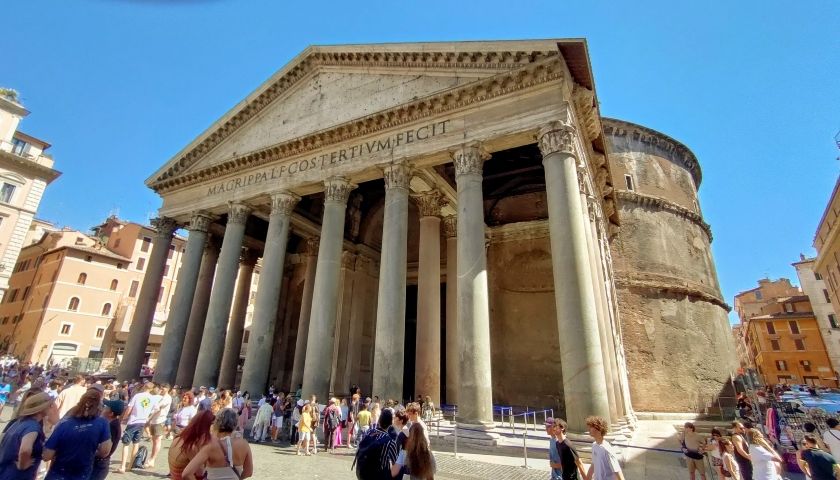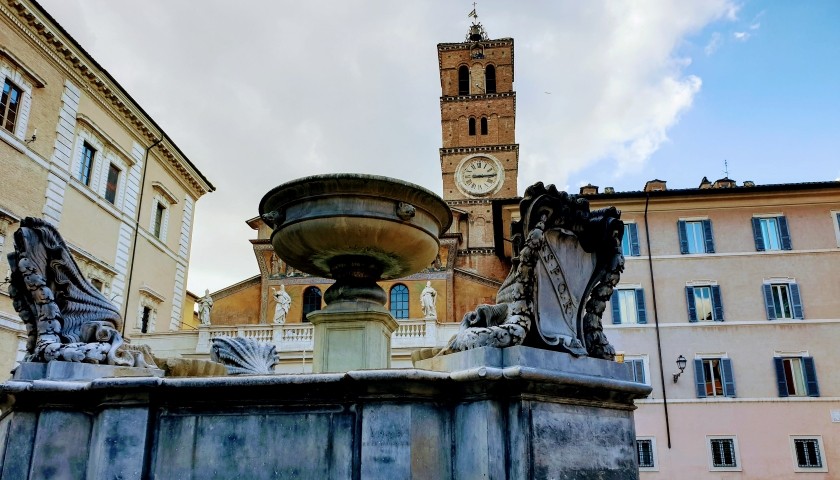Are you planning a trip to Rome, Italy? In the Eternal City, along with popular attractions there are tons of hidden and unusual monuments and places to experience. Deciding what to see and do can be tough, so we’ve compiled a list of the best things to see in Rome to help you plan your Roman holiday.
The Best Things to See in Rome (in alphabetical order)
There is so much to do and see in Rome that it can be difficult to plan a workable itinerary. Whether you're planning your first trip to Rome or your tenth, you can see ancient buildings, medieval and Renaissance churches, piazzas and shopping districts. If you’re headed to the Eternal City for your vacation, this list features the 180+ best things to see in Rome in alphabetical order.
1. Ancient Appian Way (Italian: Appia Antica)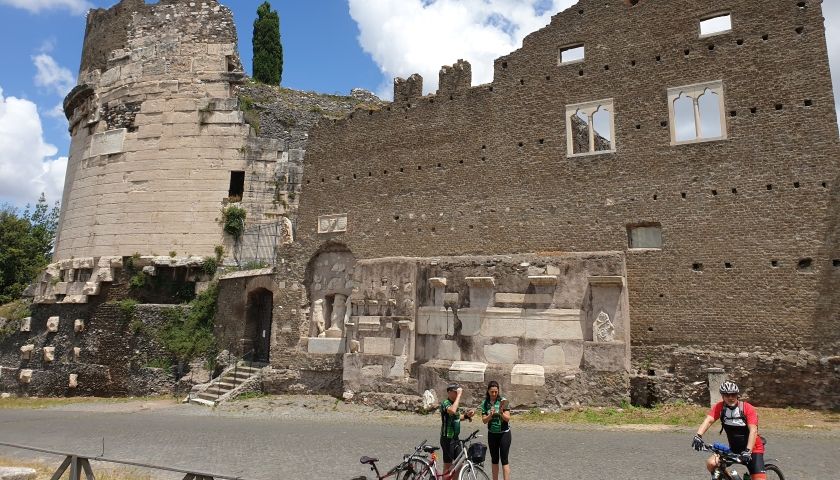
The Ancient Appian Way was one of the most important consular roads in ancient Rome. Built in 312 B.C., this famous road at one time stretched from Rome to the seaside city of Brindisi and served as a significant route for trade with the rest of the Mediterranean. The ancient road was constructed with cobblestones and lined by pines and cypress trees. Within Rome today, much of this original road can be seen and visited in the park dedicated to the Appian Way. The park features historic monuments, archaeological remains, and pleasant park land that is closed off for pedestrians on Sundays making it a popular place to stroll, bike and picnic.
2. Ancient Ostia (Italian: Ostia Antica)
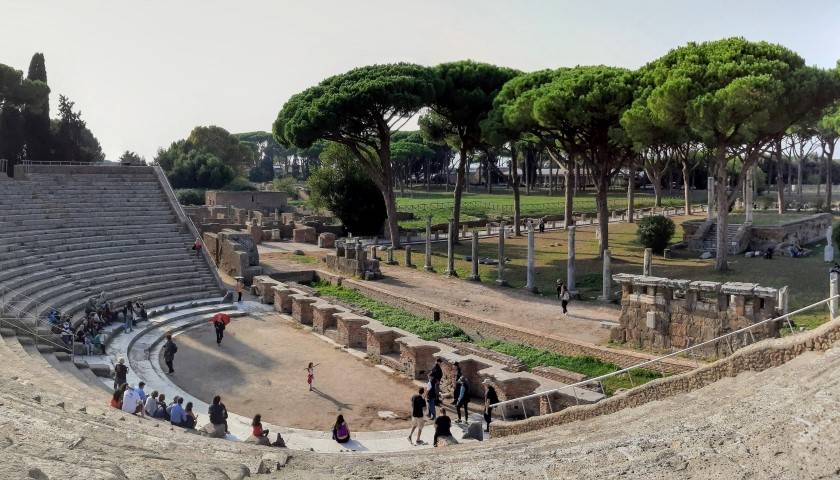
Located about 26 kilometers west of Rome is Ancient Ostia, the abandoned harbor city of Ancient Rome. Today, the city is an archaeological and historical treasure trove. This port city was once located right on the mouth of where the Tiber River met the sea, but is now about three kilometers from the sea due to changes in the silt and sea levels. It's thought that this ancient colony was founded in the seventh century BCE with archaeological evidence dating back to as early as the fourth century BCE. The port turned into a booming town, which lasted through the many years of Roman rule but was eventually abandoned with the fall of the Roman Empire. Visitors today can discover the vast amount of ruins and relics that have been left behind, which tell the story of the way of life of this ancient city that played such a pivotal role in Rome's trade and military history.
3. Ara Pacis Museum

This historic altar to peace was commissioned and built between 13 and 9 B.C. by the Roman senate as a tribute to the peace brought by Roman Emperor Augustus after returning from his successful journey to Spain and Gaul. The beautiful marble structure features panels with intricately carved scenes on each of the walls with an altar within the interior space. The altar was once located on the outskirts of the city but was later excavated and restored. The altar is now housed within the Ara Pacis Museum, a structure built by American architect Richard Meier on the banks of the Tiber River next to the Mausoleum of Augustus.
4. Arch of Constantine (Italian: Arco di Costantino)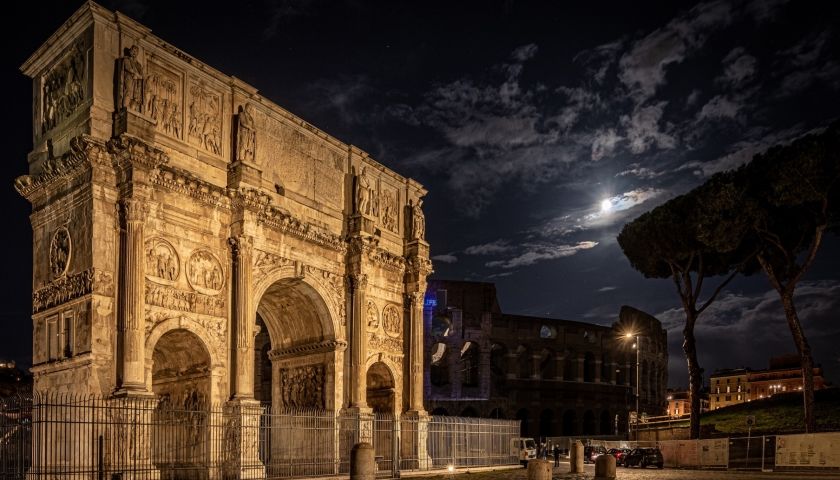
Standing directly next to the Colosseum, the Arch of Constantine is comprised of three archways and is unique in that it was built using material from other monuments. This arch was constructed in the year 315 to commemorate Constantine's victory over Maxentius. It is one of the most recent remaining imperial arches in Rome and stands nearly 70 feet tall and 85 feet wide.
5. Area Sacra Argentina (Italian: Largo di Torre Argentina)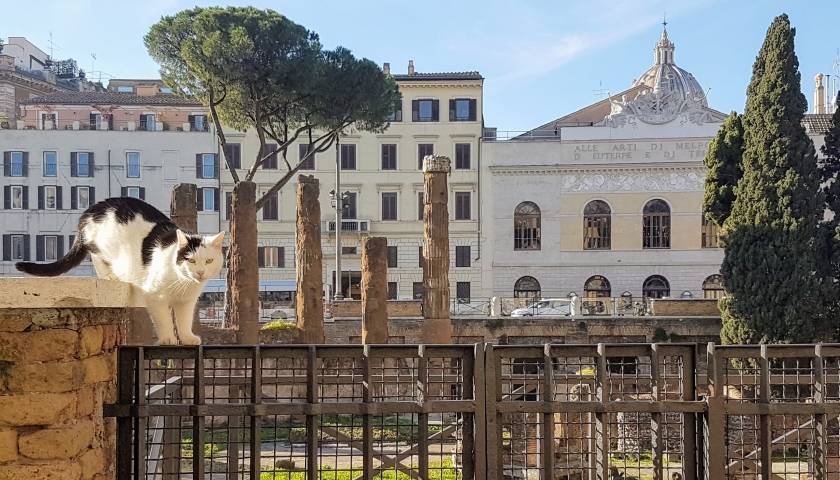
This historic complex of ancient ruins is located in the Largo di Torre Argentina area of Rome. The temple ruins that can be seen here today weren't discovered until the 1920s during the demolition stages of the construction of a new building. The excavation revealed four temples in ruin from the Republican era. Today, visitors can view the ruins from the street. Another interesting facet to this attraction is that over the years, stray cats began appearing within the ruins. Today, there is a cat rescue sanctuary established at this site.
6. Barberini Gallery (Italian: Palazzo Barberini)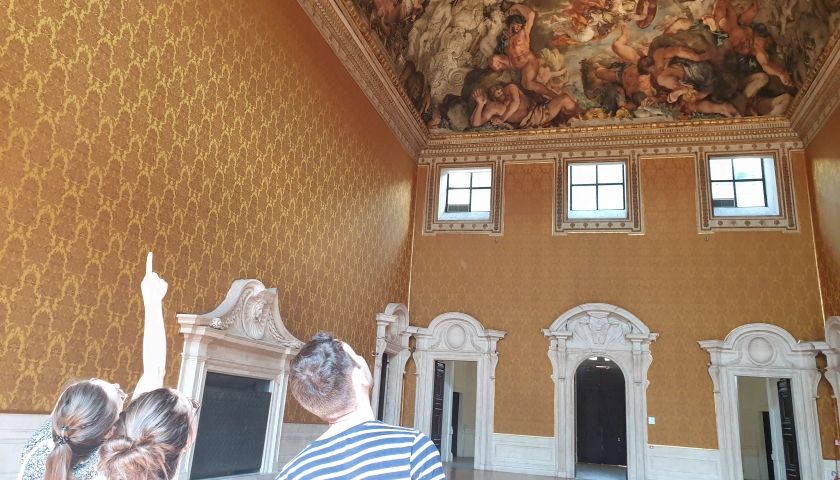
Designed for Pope Urban VIII by Italian architect Carlo Maderno in the early 17th century, and built on the site where the Villa Sforza once stood, the Palazzo Barberini is now home to an impressive collection of 13th - 16th century art. In addition to works by Tintoretto, Caravaggio, Bernini, Raphael, and others, many of the lavish, rococo apartments of the palace, still decorated as they were back in the day, are on view.
7. Basilica of Our Lady above Minerva (Italian: Basilica di Santa Maria sopra la Minerva) 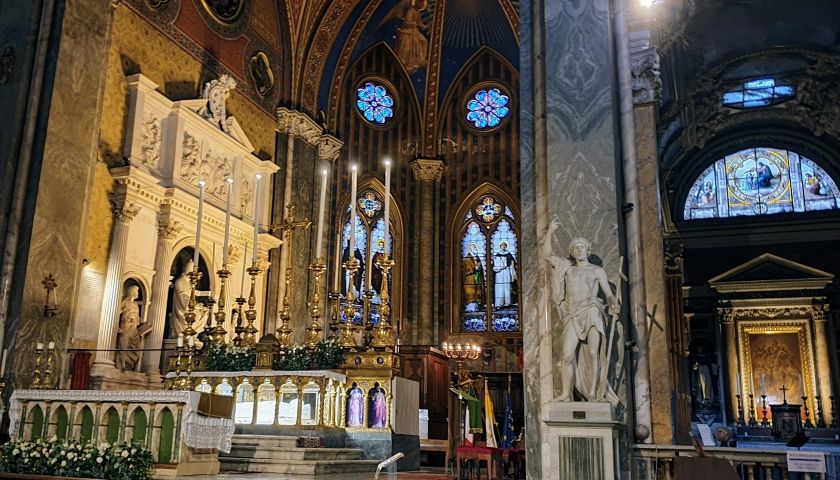
Considered Rome's only Gothic Church, the Basilica of Our Lady above Minerva received its name since it was built on the site that once housed an ancient Roman temple dedicated to Minerva. The Dominicans began building this church in 1280 but it wasn't completed until nearly 1370. Since that time, the church's Baroque facade has been added in addition to a few renovations and additions. Notable features of this basilica include 15th-century frescoes by Filippino Lippi, Michelangelo's Cristo Risorto sculpture from 1520, and the tomb of St. Catherine of Siena under the high altar. The entrance of this lavish Gothic church in via del Beato Angelico, 42
8. Basilica of Our Lady in Cosmedin (Italian: Basilica di Santa Maria in Cosmedin)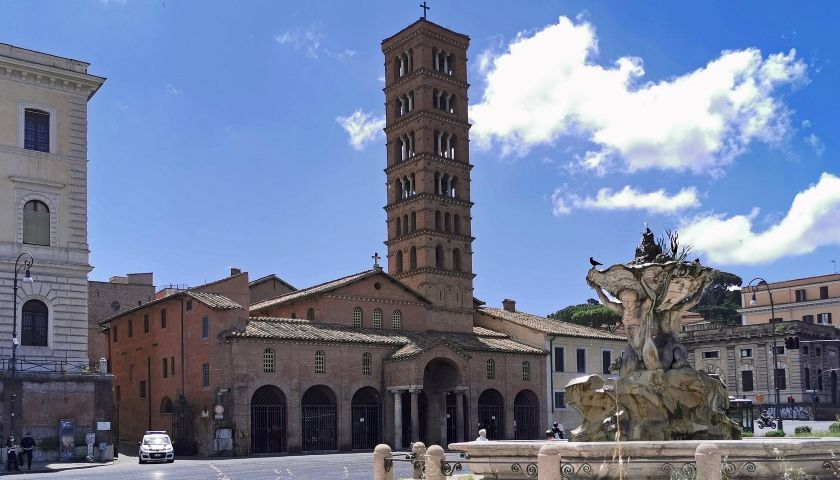
Built in the 6th century over what was once an ancient Roman food distribution complex, Basilica of Our Lady in Cosmedin is best known for its peculiar attraction inside, the Mouth of Truth. Tourists line up to test this legendary hole in the stone wall, which is said to bite off the hand of any liars who stick their hand into the mouth. This basilica is also notable as it sits on the site of the ancient high altar of Hercules and features a seven-story Romanesque bell tower.
9. Basilica of San Clemente (Italian: Basilica di San Clemente)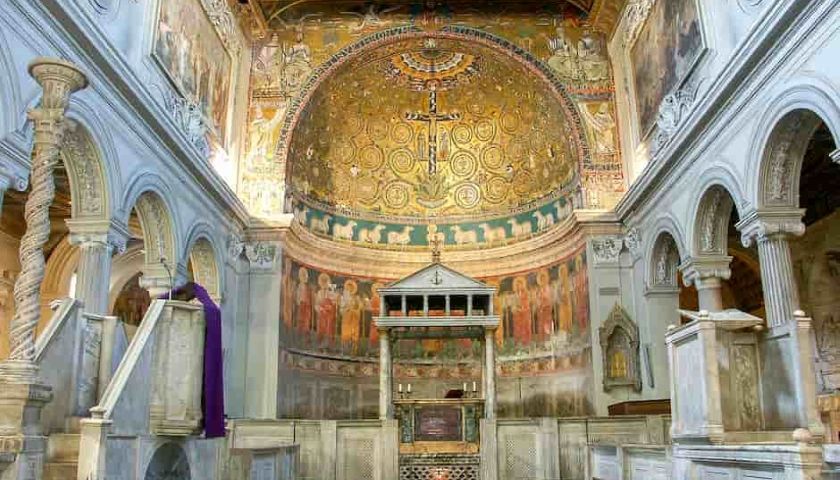
Dedicated to the Pope St. Clement from the first century, the Basilica of San Clemente is notable for not only its beautiful interior but the fact that it's considered a three-tiered complex. The basilica you can visit today was built in the 12th century, but beneath it sits a fourth-century church and below that a building from the first century. These excavations were discovered in 1857 by the then Prior of the basilica. Visitors can enjoy an Italian mass service, touring the ancient buildings underground, and viewing The Triumph of the Cross mosaic art.
10. Basilica of Santa Maria in Trastevere (Italian: Basilica di Santa Maria in Trastevere)
Originally built near the year 400, the Basilica of Santa Maria in Trastevere is considered one of the oldest churches in Rome to be dedicated to the Virgin Mary. Renowned for its mosaic art depicting the Madonna, the basilica's was rebuilt in the 1100s and later additions include the portico and bell tower. The church sits on a popular piazza in the Trastevere neighborhood of Rome where locals and visitors like to gather near the octagonal fountain.
11. Basilica of St. John & St. Paul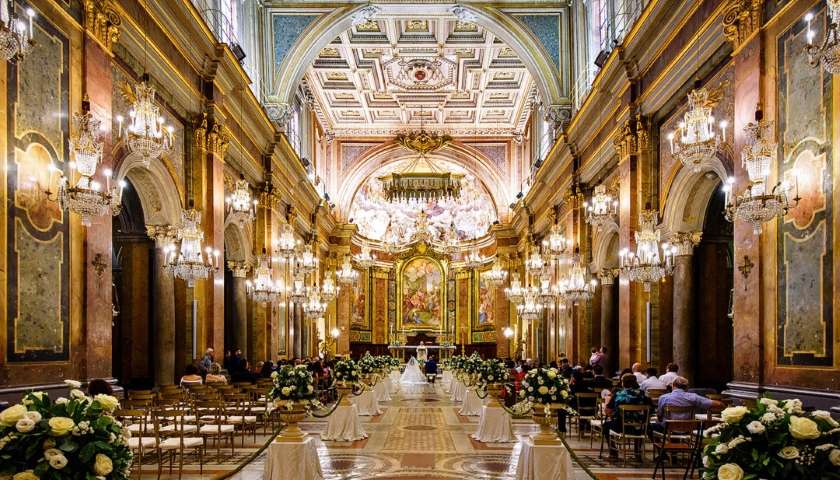
This church was built in 398 over a second and third century Roman house where two martyred soldiers, John and Paul, are said to have worshiped and later been buried. The church has been restored several times, first after the sack of Alaric in 410 and an earthquake in 442, and again after the 1082 sack of the Normans. The church took on a Baroque style in the early 18th century under a restoration project initiated by Cardinal Paolucci. The facade was restored in a major project spanning from 1946 to 1967, at which time excavation of the Roman ruins beneath the church were also completed. An antiquarium in the church holds many of the artifacts uncovered during the excavation.
12. Basilica of St. John Lateran (Italian: Basilica di San Giovanni in Laterano)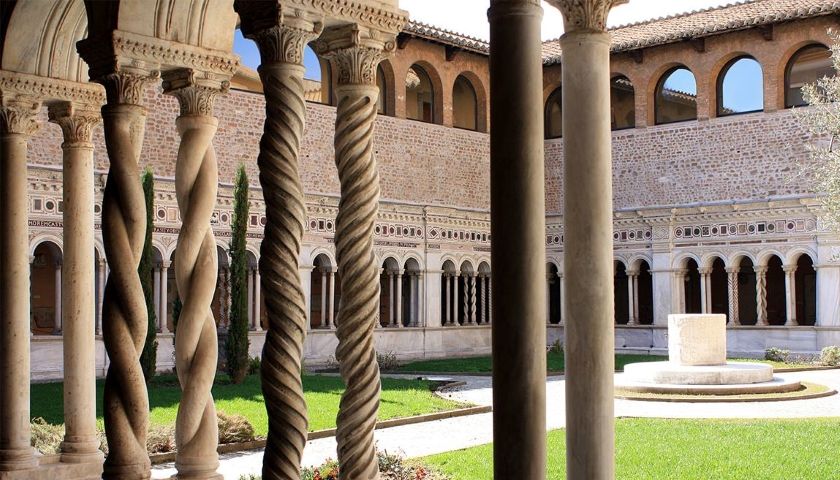
Renowned as the first church to be built in Rome, Basilica of St. John Lateran (Basilica di San Giovanni in Laterano) was built in the 4th century by Constantine the Great and is considered the Cathedral of Rome and the World. It is also the oldest and highest ranking of the four major Papal basilicas of Rome. The original structure was largely destroyed over the years, but was rebuilt by Borromini, by commission of Pope Innocent X in the 1640s. Notable features include the 18th-century facade featuring statues of Christ and the Apostles designed by Alessandro Galilei, 13th-century Cosmatesque mosaics on the twin columns of the cloister, historic frescoes, and the decorative ceiling.
13. Basilica of St. Lawrence outside the Walls (Italian: Basilica di San Lorenzo fuori le Mura)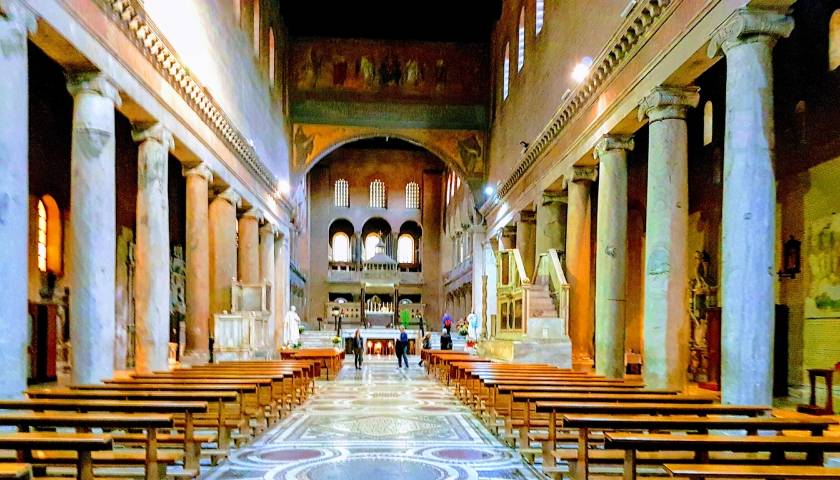
As the shrine tomb of Saint Lawrence, built over the spot where the Roman martyr was thought to have been executed in 258, San Lorenzo fuori le Mura is one of five churches considered the great, ancient basilicas of Rome. The church has two parts, the oldest of which was built in the 580's under the commission of Pope Pelagius II. Pope Honorius III commissioned another church be built in front of the older in the 13th century, and the two were later joined. The basilica was badly damaged by a bomb in WWII. It was restored in 1948, but valuable 13th century frescoes depicting the lives of Saint Lawrence and Saint Stephen were lost.
14. Basilica of St. Mary Major (Italian: Basilica di Santa Maria Maggiore)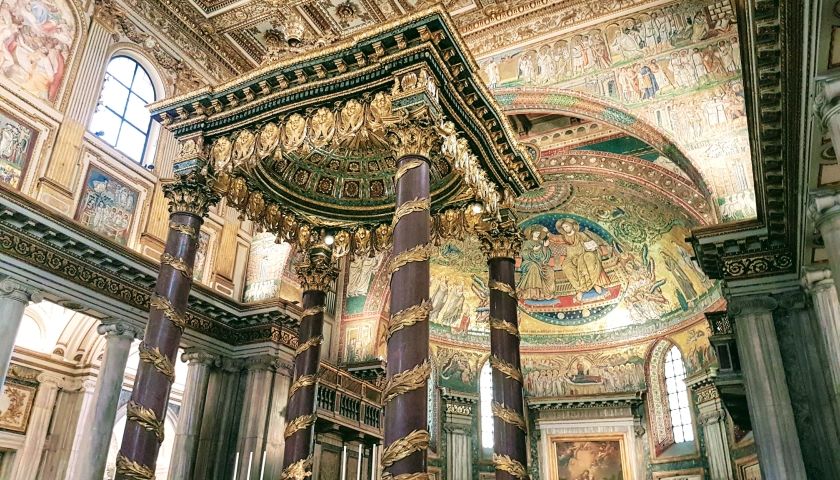
Revered as the largest and greatest basilica dedicated to St. Mary, the Basilica of St. Mary Major is perched on the summit of the Esquiline Hill. The church was originally built by Pope Liberius in the year 350 after he claimed the Virgin Mary visited him in his dream and was inspired to build this church in her honor. Another legend tells the story of how a miraculous snowfall occurred here, which is why the church is also sometimes referred to as Our Lady of the Snow. While the interior layout is mostly the same as the original design, the exterior was constructed in the 18th century. Notable features include fifth-century mosaics, Rome's highest medieval bell tower, and this is the final resting place for Popes Sixtus V and Paul V.
15. Basilica of St. Mary of the Angels and the Martyrs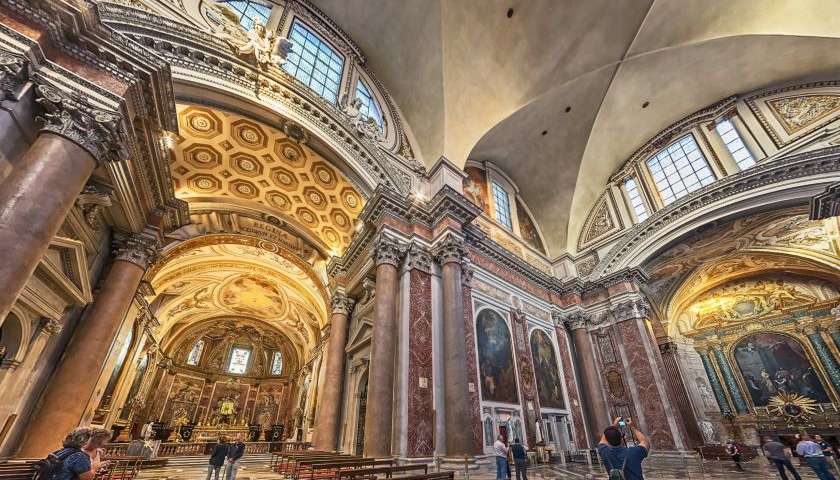
This Renaissance basilica was designed by Michelangelo who started his work here in 1563, just a year before his death. Built within the ruins of the Baths of Diocletian, today this basilica is located on the Piazza della Repubblica and serves as a minor basilica in Rome. Dedicated to Christian martyrs contains both tombs and relics. Visitors can see some of the original walls of the baths exposed on the exterior of the building in addition to a beautiful interior space.
16. Basilica of St. Paul outside the Walls (Italian: Basilica di San Paolo fuori le Mura)

Surviving war and natural disaster for 1435 years, the basilica was devastated by a fire in 1823 that left only the interior portion of the apse with the triumphal arch, and some mosaics intact. The church, counted among the five great, ancient basilicas of Rome, was restored through the generosity of people all over the world, including the Emperor of Russia and the Viceroy of Egypt. The basilica's origins date back to 386 when Theodosius began building it over the site where Saint Paul is traditionally believed to have been buried. The building was not completed until the 400's when Leo the Great became Pope.
17. Basilica of St. Praxedes (Italian: Basilica di Santa Prassede)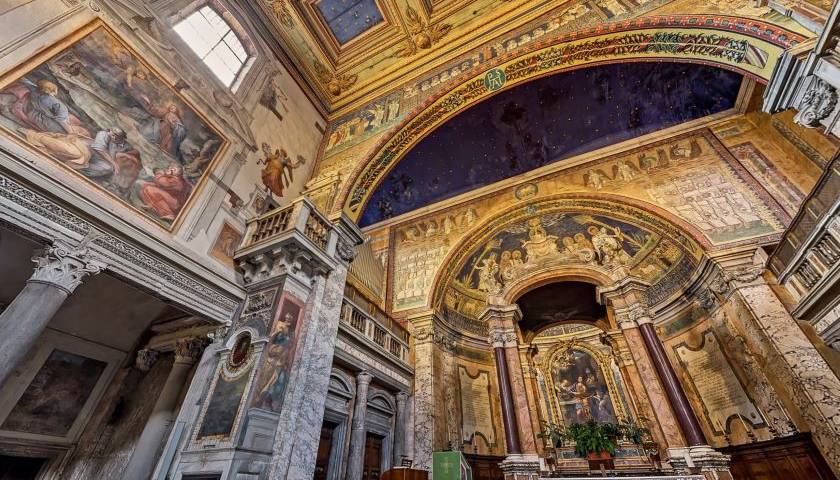
With an unassuming exterior, the Basilica of St. Praxedes features a surprisingly lofty and beautiful interior including 16 granite columns in the nave and colorful collection of historic Byzantine mosaics. The basilica was built in the ninth century over the site of an even earlier structure dating back to the fifth century. The church here is dedicated to St. Praxedes, a martyred Christian heroine who is believed to have buried bodies of Christians in a well, whose location is marked by a porphyry disk inside the church. The noteworthy relic housed here is believed to be a piece of the column on which Jesus Christ was crucified.
18. Basilica of St. Pudentiana (Italian: Basilica di Santa Pudenziana)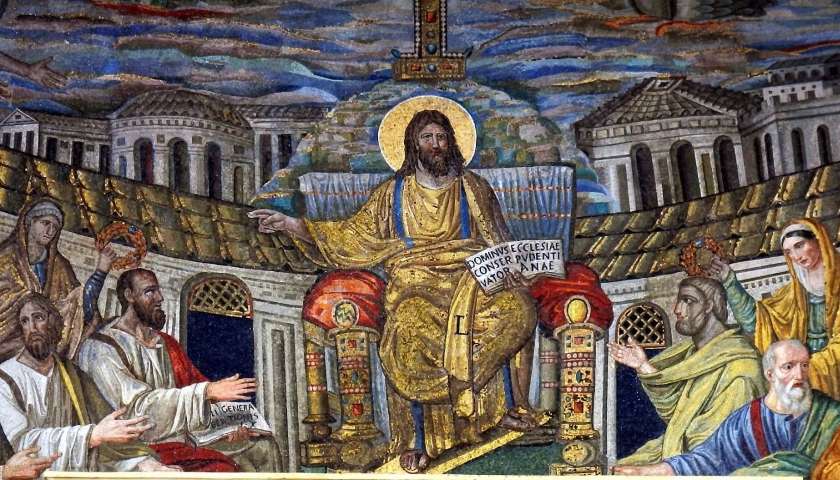
Dedicated to the Roman Catholic martyr St. Pudentiana, this church is notable for its fourth-century apse considered the oldest of its kind and depicting a scene of Jesus teaching the 12 Apostles (only 10 are visible due to a later renovation). The Basilica of St. Pudentiana was built in the fourth century on top of a second-century bath house, some of which can be seen in the crypt. This basilica is unique in that it the national church of the Philippines, a country with the largest Catholic population in Asia.
19. Basilica of St. Sabina (Italian: Basilica di Santa Sabina)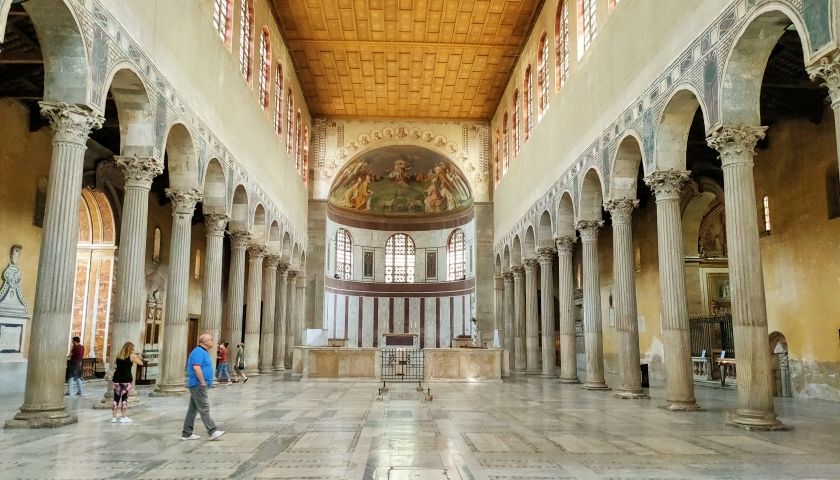
Perched above Rome on the Aventine Hill, the Basilica of St. Sabina was built in the fifth century in a classical rectangular plan. Though this basilica has been renovated multiple times, the cypress-wood doors remain from the original building and are notable for their intricately carved panels depicting Biblical events. The 20th-century restoration aimed to bring this basilica back to its original character. The original structure is thought to have been built over an earlier temple for Juno and the basilica is dedicated to the Christian Saint Sabina. While most of the original mosaics are no longer here, one fifth-century piece does remain, so along with the carved doors, these two original elements are a major draw for visitors to this basilica. Today, Santa Sabina serves as the Stational church for Ash Wednesday.
20. Basilica of St. Stephen in the Round (Italian: Basilica di Santo Stefano Rotondo al Celio)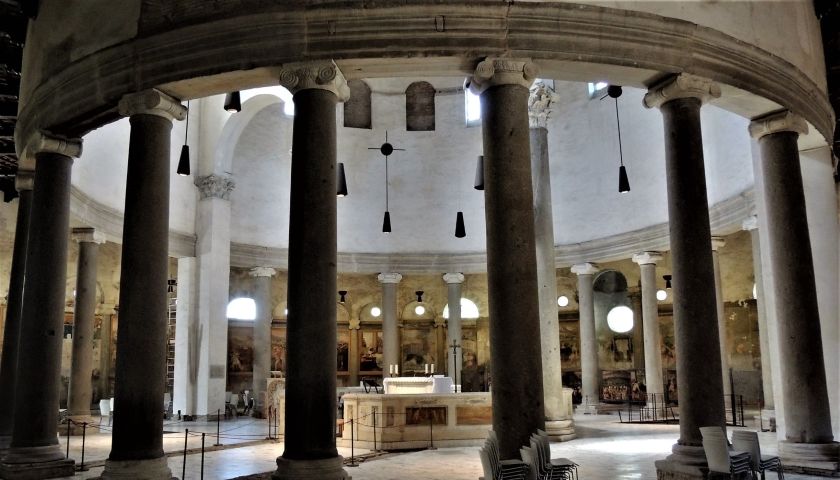
Built in the fifth century, this church stands apart of the other basilicas found in Rome in that its shape and design are based on a round rotunda style with a timbered ceiling. Apart from its unique shape, the Basilica of St. Stephen in the Round is also known for its collection of very graphic and grotesque frescoes lining the walls of the basilica depicting some of the most gruesome scenes of martyr murders in the early Christian era. The threatening images served a purpose in the early days to instill fear, and today they serve as a way to tell the stories of the past. This minor basilica is dedicated to Saint Stephen and is considered the national church in Rome of Hungary.
21. Basilica of the Holy Cross in Jerusalem (Italian: Basilica di Santa Croce in Gerusalemme)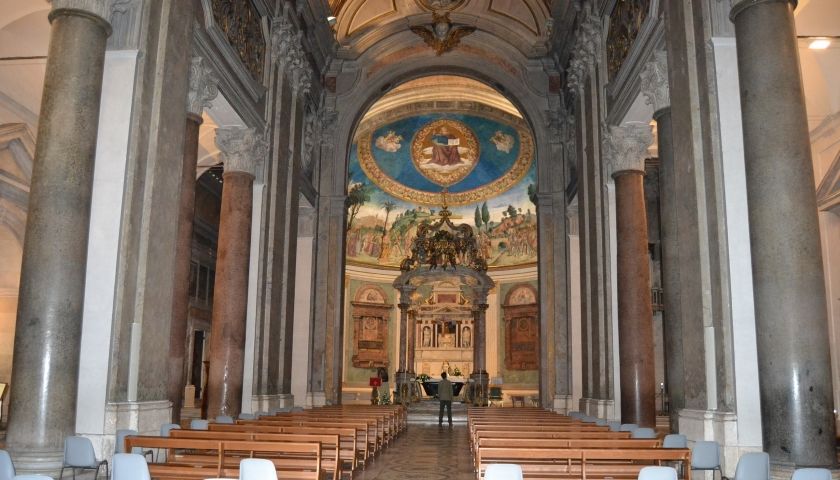
Considered one of the seven pilgrimage churches in Rome, Basilica of the Holy Cross in Jerusalem is renowned for its collection of Passion relics from Jerusalem. The basilica was constructed in the year 325 and originally featured a floor packed with soil brought from the Holy Land. The church was dedicated to the Holy Cross as St. Helena (mother of Emperor Constantine) brought relics from the Holy Land to Rome, including pieces of the original cross. The basilica's Baroque facade that can be seen today was added in the 18th-century and notable features here include the 15th-century frescoes, the bell tower, and ancient eight granite columns in the nave area.
22. Bioparco di Roma
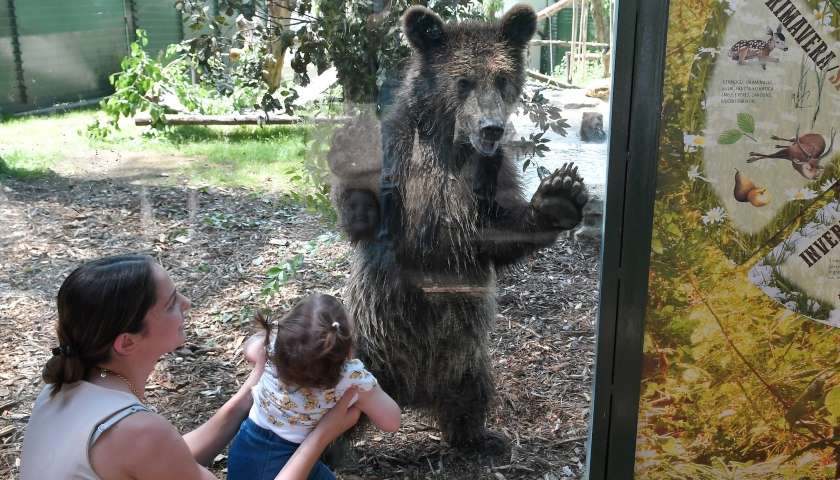
This eco-friendly animal park is one of Rome's favorite family-friendly attractions. Located at the Villa Borghese Gardens, the Bioparco di Roma was first established in 1911 as a park where animals could roam freely. By 1935, the zoo increased in size and scope and was later modernized in line with the World Zoo Conservation Strategy. The Bioparco is known for its environmental endeavors and keeping animals in the most natural of habitats. This is a great place to escape with the kids from the other attractions to enjoy a day of discovering exotic animals.
23.Borghese Museum (Italian: Galleria Borghese)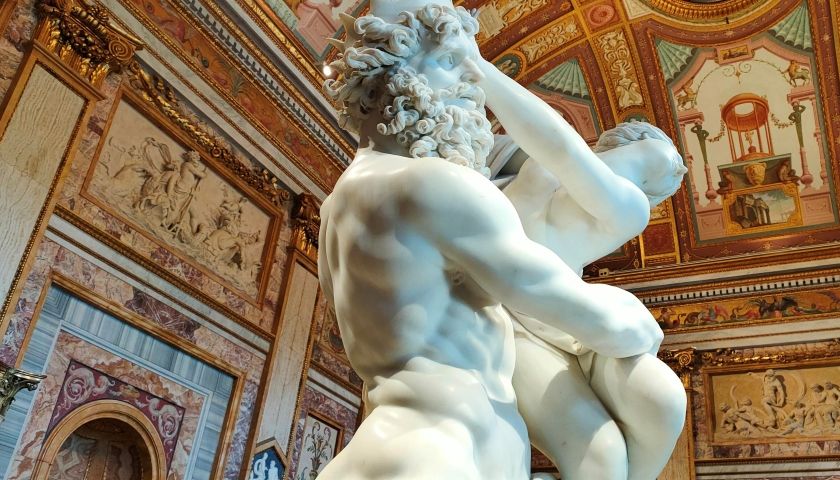
Considered one of the best collections of art in Rome, the Borghese Museum is comprised of the personal collection of one of the greatest art collectors, Scipione Borghese. On display are some of Bernini's most famous sculptures such as Apollo and Daphne in addition to art work by other notable artists including Raphael and Caravaggio among many other masters. The museum itself only accommodates a set number of visitors for a set period of time, so it's best to book reservations to a visit to this exquisite and acclaimed museum of art. Read More: How to Visit Borghese Gallery in Rome: Hours, Tickets, Tours & Where to Eat
Looking for a Borghese Gallery Private Tour? We arrange everything, including your skip the line Borghese Gallery tickets and art-historian guide.
24. Borgo Pio
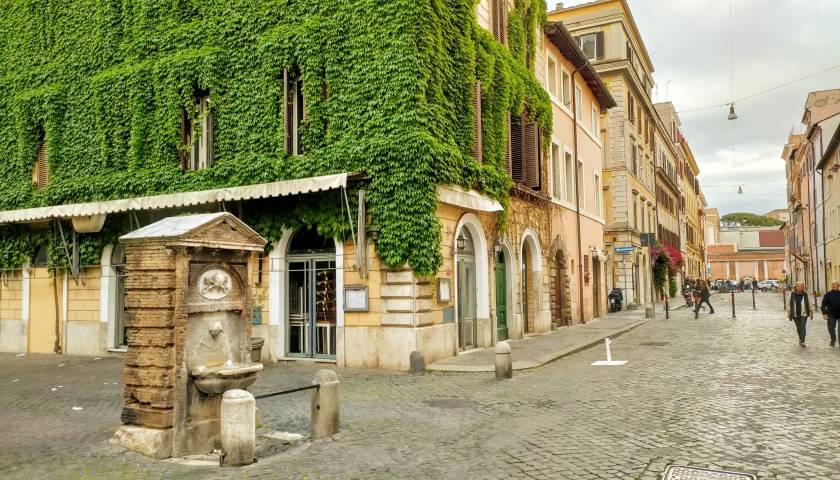
The Borgo district is Rome's 14th historic district and is bordered by the Vatican City to the west, the Tiber River to the east, the district of Prati to the north, and Trastevere to the south of the Borgo. This historic neighborhood is comprised of its four main roads Via Alessandrina, Via Borgo S. Angelo, Via Borgo Vecchio and Via di Santo Spirito, each of which feature charming piazzas and fountains. The Borgo is steeped in Rome's rich history from Roman times to today. Notable churches located in this district include Santa Maria in Traspontina, Santi Michele e Magno, and Santo Spirito in Sassia.
25. Broken Bridgen Pons Aemilius (Italian: Ponte Rotto)
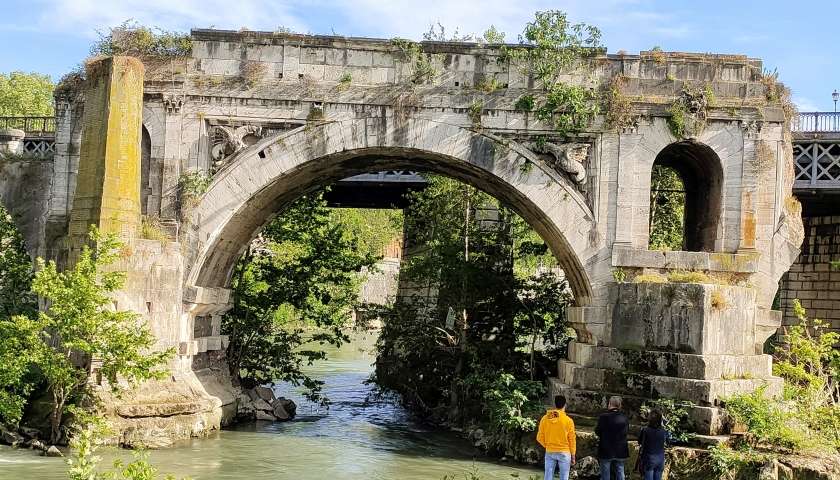
What is now seen as a broken bridge just south of the Tiber River Island, was once a stone bridge spanning the width the river. Broken Bridge dates back to the second century BC and its ruins still showcase one of the ancient bridge's arches along with sculpture reliefs. The bridge's earlier history suggests that it was once made of wood and then replaced with six stone arches in 142 B.C. While the bridge endured many repairs, it was near the year 1600 when a flood damaged it the most and rest of was destroyed in a great flood in 1598. For the best view of the ruins today, visitors can walk along the Palatino Bridge, which was built in its place.
26. Campo de' Fiori 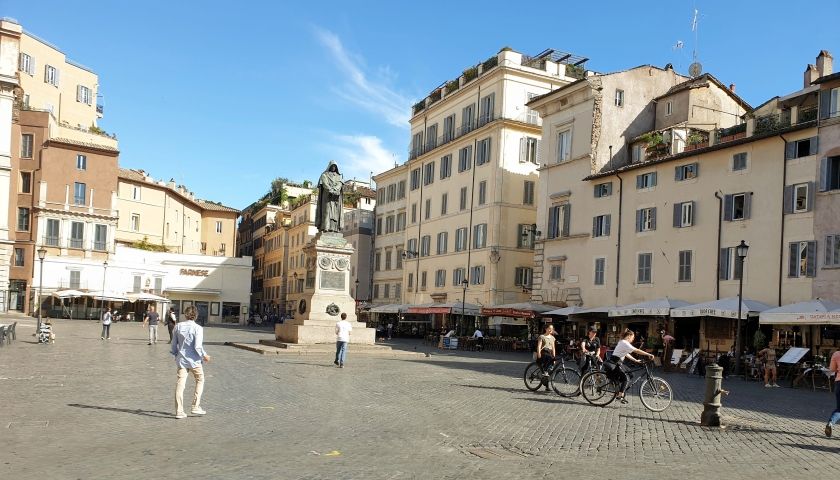
Campo de' Fiori translates in Italian as Field of Flowers. In ancient Rome, the place where this rectangular piazza now exists once used to be a true meadow between the more developed city and the Tiber River, which often flooded. The piazza saw its first church, pavement, and other buildings pop up throughout the 1400 and 1500s. Campo de' Fiori is perhaps best known for the public executions that took place in the middle of the square. The most notable was when in 1600 the renowned philosopher Giordano Bruno was burnt alive. Today, a statue of Bruno stands high above the square as a monument. The piazza was also once the site of a large horse market and the streets surrounding the square were named for the many trades that existed in this neighborhood from hat making to tailor shops.
27. Capitoline Museums (Italian: Musei Capitolini)
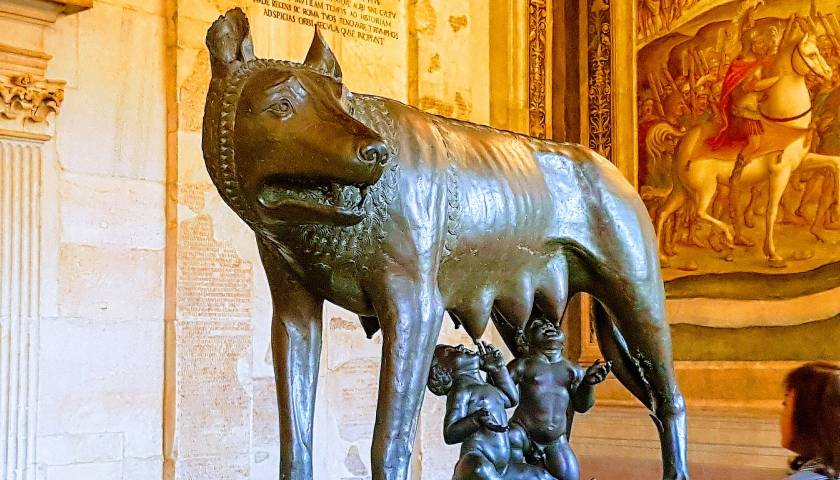
Located on the Capitoline Hill in Rome, this complex of museums surround the Piazza del Campidoglio and is considered the oldest museum open to the public in the world. The museum started when Pope Sixtus IV donated a group of bronze sculptures to the city in 1471. Today, these museums are comprised of some of the city's best historic artworks. Notable pieces include the She-wolf dating back to the fifth-century, which depicts the ancient founders of Rome, Romulus and Remus, pieces from a once-massive statue of Emperor Constantine, as well as paintings by such notable masters within art history as Titian, Rubens, and Caravaggio. A visit to the renowned Capitoline Museums is a must for art history enthusiasts with its extensive collection and deeply rooted history.
28. Caracalla Baths (Italian: Terme di Caracalla)
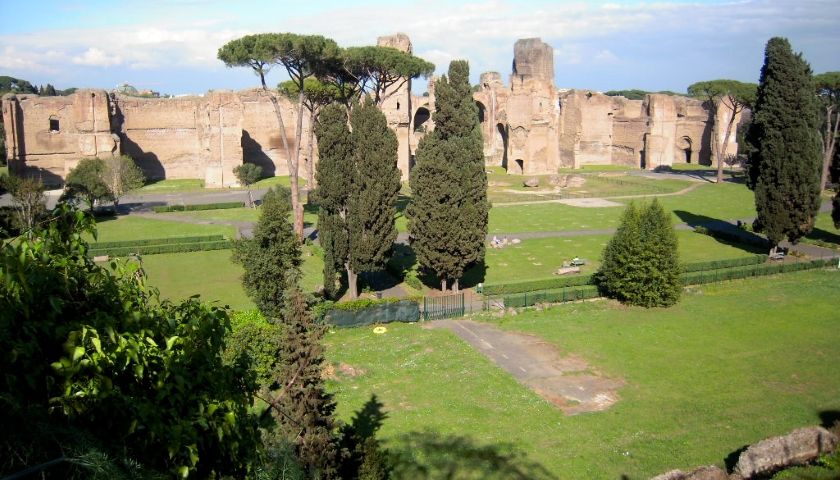
The Caracalla Baths are a classic Roman public bath house that date back to the third century. Named after Emperor Caracalla, who was ruling at the time of the construction of the baths, the complex was massive in size and largest of its kind in the world. The community bath house existed until the sixth century when the invaders obliterated the water supply from the aqueduct. The Caracalla Baths sat in ruins and during excavations in the 1400s, many ancient sculptures and pieces from a temple were discovered. Today, the ruins of the baths serve as a popular tourist attraction where visitors can marvel at the ruins of this once opulent structure. Additionally, music performances and other events are held at this historic site.
29. Castel Sant'Angelo
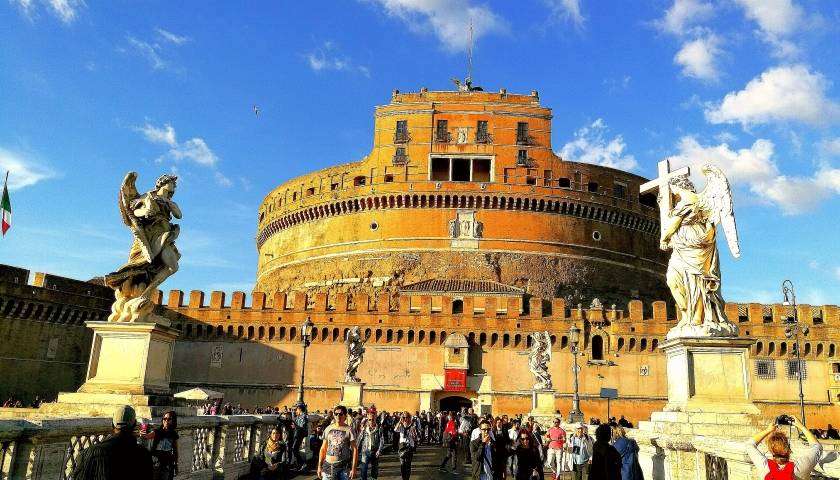
Perched on the bank over the Tiber River is the grandiose circular fortress structure of the Castel Sant'Angelo. This imposing structure was originally built in the second century serving as a mausoleum for Emperor Hadrian. The landmark building was also later used as a papal refuge, fortress, and later a museum. It's also notable that there is a passage that still connects to the Vatican.
30. Catacombs of St. Callixtus (Italian: Catacombe di San Callisto)
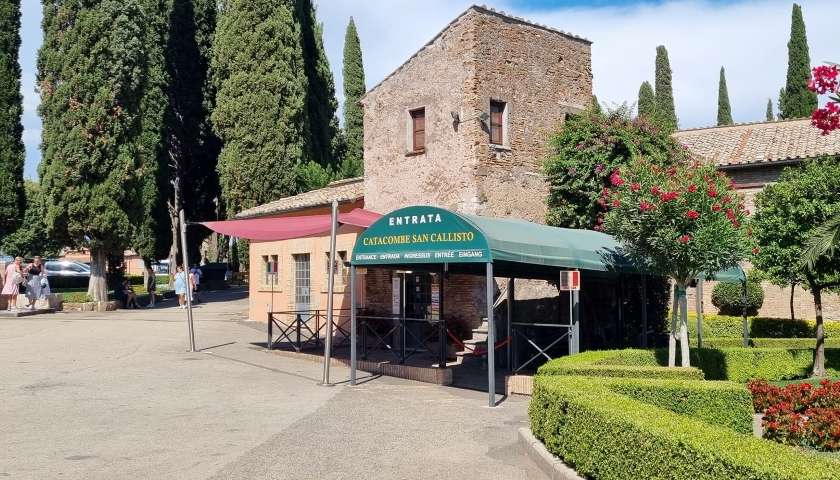
Located near other Roman catacomb complexes, the Catacombs of St. Callixtus was once known as the Church of Rome's cemetery as many early Christians and popes were buried here. Located along the Via Appia Antica, these catacombs were originally constructed in the second century and remain the final resting place for over 50 Christian martyrs and 16 Roman Popes. Stretching over 20 kilometers of underground area, the catacombs were discovered by Giovanni Battista de Rossi who discovered the ancient crypts when entering a vineyard.
31. Catacombs of Priscilla (Italian: Catacombe di Priscilla)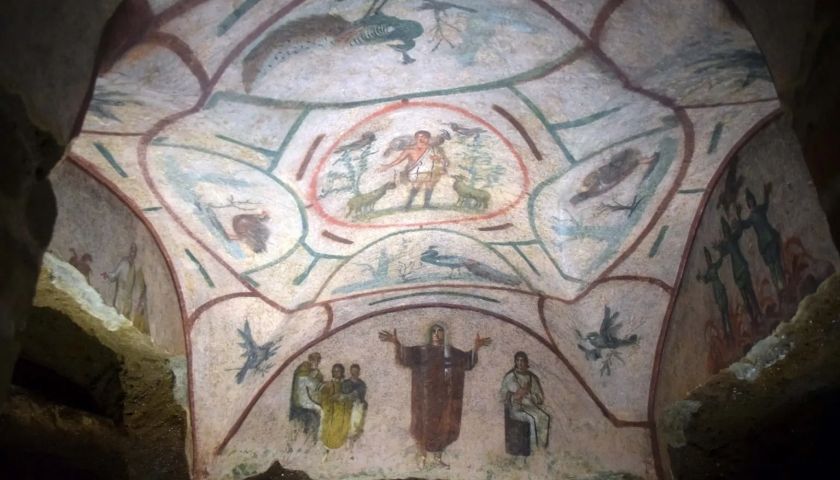
Located in northern Rome along Via Salaria is the Catacomb of Priscilla. Used as Christian burial grounds from the second through the fourth century, the burials here include many martyrs as well as Roman popes. The Catacomb of Priscilla is distinct from the other catacombs found in Rome in that there are many well-preserved frescoes lining the corridors and decorating many of the tombs. The most famous fresco found here is one of the oldest known images of Mary and an infant Jesus that is thought to date back to the third century.
32. Catacombs of Domitilla (Italian: Catacombe di Domitilla)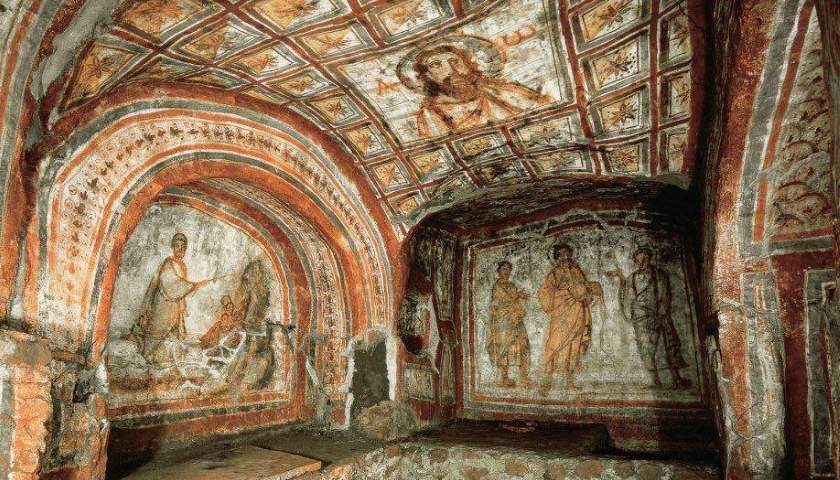
Located near the other catacomb complexes within Rome, the Catacombs of Domitilla are considered some of the best preserved and oldest in the city. The extensive underground burial grounds extend over 15 kilometers of space with thousands of burial sites. The catacombs were first used as a pagan burial ground in the first century and were later used for Christian burials from the fourth through the ninth century. Significant finds here include frescoes depicting the Last Supper and an early depiction of Christ as the Good Shepherd as well as an underground basilica.
33. Centrale Montemartini
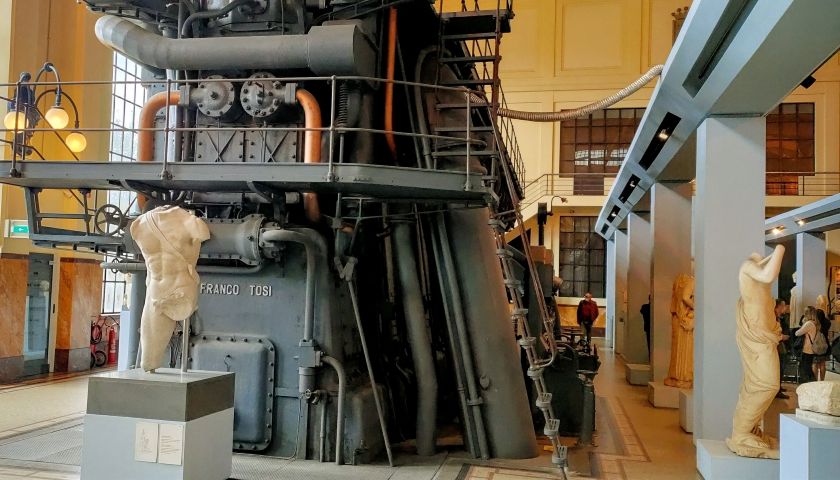
As part of the larger group of Capitoline Museums, Centrale Montemartini is unique among Rome's other fine art museums. The structure originally served as the city's first power station and many of the industrial age machines are still present here today. The gallery here is interspersed with hundreds of ancient Roman statues, mosaics, busts, and tombs juxtaposed with the preserved machines from the building's industrial days.
34. Circus Maximus (Italian: Circo Massimo)
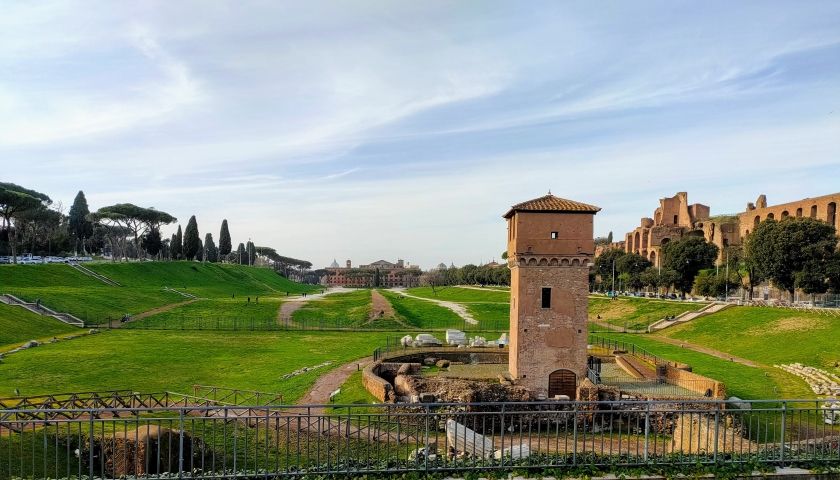
Home to ancient Rome's chariot racing, Circus Maximus is an enormous stadium complex for public entertainment. The use of this popular stadium began in the sixth century B.C. and was in continual use up until the last race took place in the year 549. Today, the stadium is used as a public park land where visitors can trace the path of the mayhem that took place during the wildly popular and fierce chariot races.
35. Colonna Gallery (Italian: Galleria Colonna)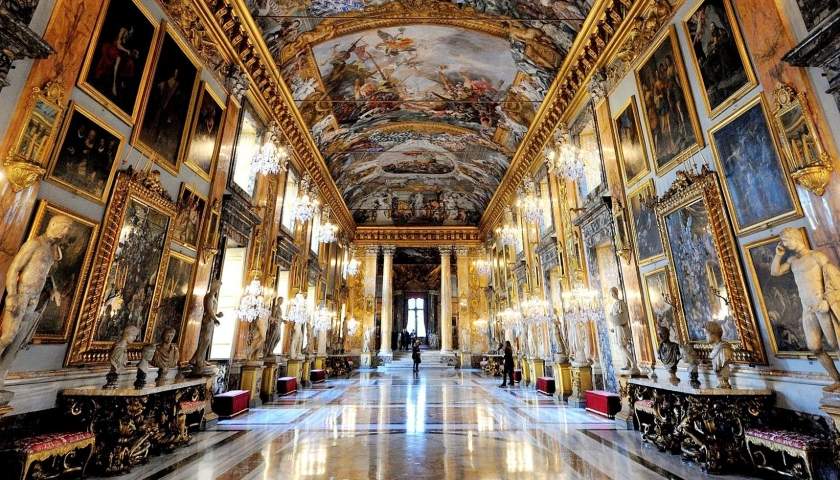
Open only on Friday and Saturday mornings, the Colonna Gallery is a highly regarded art gallery at the Palazzo Colonna. Housed in a majestic and massive palace home to over 20 generations of the Colonna family, this art gallery features an impressive collection of historic art works. Though the gallery is only spread out through a limited number of rooms, these highly decorative halls and rooms are a works of art in themselves. Visitors will be treated to seeing art from notable European master artists in this collection that dates back to the 1600s.
36. Colosseum (Italian: Colosseo)
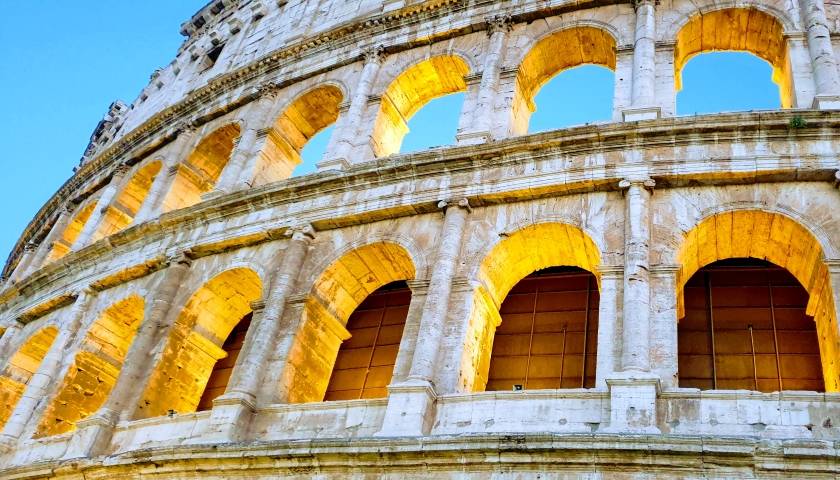
Easily one of Rome's most visited and most recognizable attractions is the Colosseum. Located in the heart of the city, this massive structure dates back to the first century. This impressive amphitheater at one time seated 50,000 people to witness such classic Roman events as gladiator competitions, executions, dramas, and other forms of public entertainment. The Colosseum was originally called the Flavian Amphitheater after the family name of Emperor Vespasian, who was in power during the structure's constructions. It's more than just a piece of Rome's history, it's a true icon for the city and its rich past and stands as a monument as one of the greatest examples of Roman architecture and engineering.
37. Column of Marcus Aurelius (Italian: Colonna di Marco Aurelio)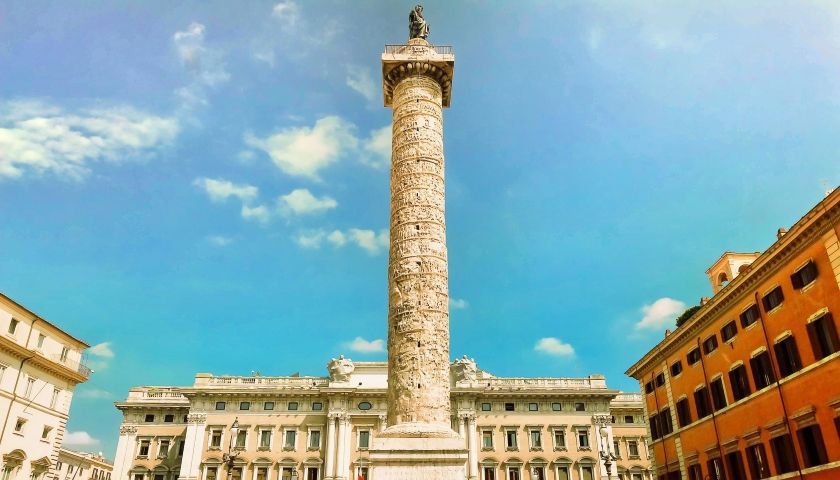
Towering over Piazza Colonna stands the 100-foot Column of Marcus Aurelius. Built in the second century in honor of the great emperor's victories, this column once featured a statue of Marcus Aurelius, but was later replaced by a bronze statue of St. Paul the apostle, which remains atop the column today. The column features a spiraling story of reliefs of battlefield scenes from top to bottom.
38. Column of the Immaculate Conception (Italian: Colonna dell'Immacolata Concezione) 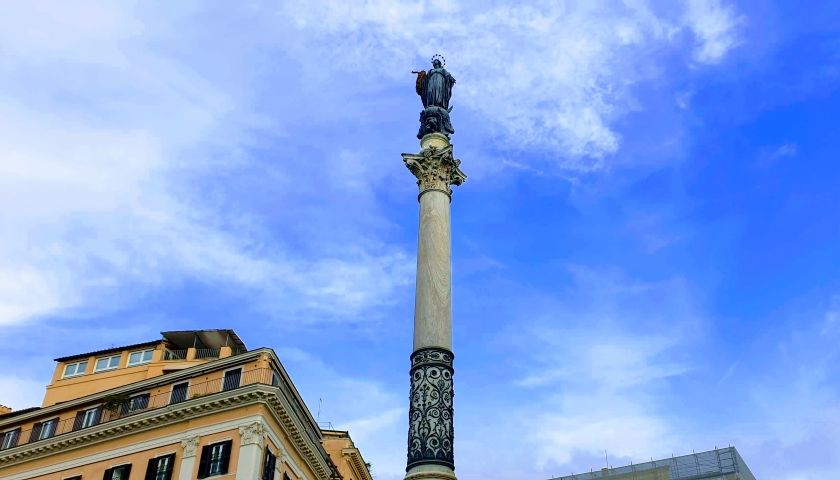
Located in the Piazza Mignanelli, the Column of the Immaculate Conception features an ancient column found under a monastery and topped with a statue of the Virgin Mary. The monument was erected in the 1800s in honor of the Madonna and is a focal point for the annual Feast of the Immaculate Conception celebrated on December 8 when a fireman climbs to the top of the column to adorn the Virgin Mary with flowers.
39. Conti Tower (Italian: Torre de' Conti)

Built in the early 1200s, the Conti Tower features medieval architecture and was built upon another ancient building by Pope Innocent III. The tower served as the personal residence for the Conti di Sengi, the Pope's powerful family. Located near the Colosseum, the tower is notable for its soaring size, which was actually even larger but the top floors were destroyed by earthquakes.
40. Diocletian Baths (Italian: Terme di Diocleziano)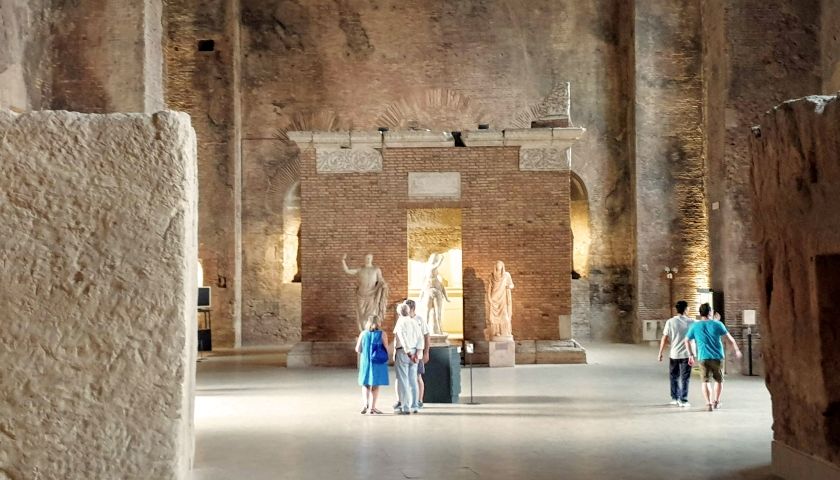
When Emperor Diocletian commissioned and dedicated these baths in Rome in 306, they could accommodate 3,000 bathers and covered about 32 acres with a full range of cold, warm, and hot baths, changing rooms, gymnasiums, libraries, meeting rooms, theaters, concert halls, and sculpture gardens. The complex was used for more than 200 years, until the Goths destroyed the Roman aqueducts, which rendered all the baths in Rome useless. Most of the bathing complex is now gone, but parts have been well preserved as they were converted for other use. The once sumptuous facility is now home to the basilica of Santa Maria degli Angeli e dei Martiri, the church of San Bernardo alle Terme, and part of the National Roman Museum. In the three great vaults of the basilica's transept much of the bath's former grandeur is still evident, and you can still see how the Romans used the building's layout and orientation toward the sun to heat the caldarium while keeping the frigidarium cool.
41. Doria Pamphilj Gallery (Italian: Galleria Doria Pamphilj)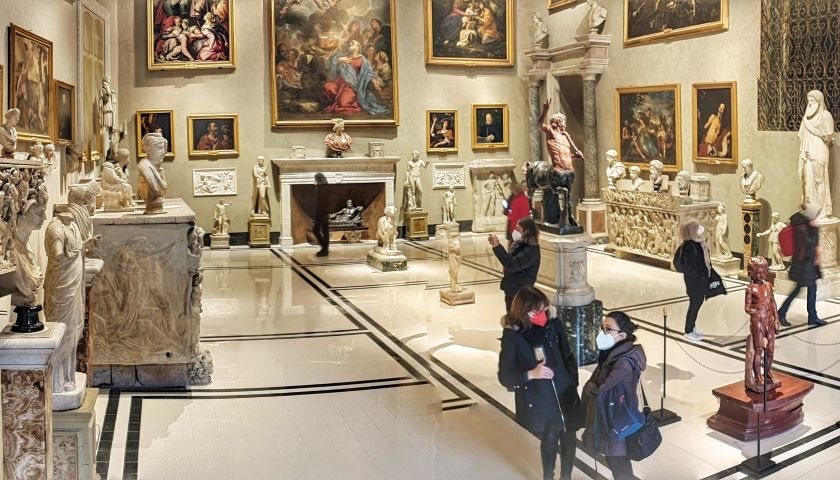
The heart of the Palazzo Doria Pamphilj is the extensive art collection of this historic palace's gallery. The collection has been accumulated since the 1500s by the Doria Pamphilj family, who still owns the private palace. The acclaimed private art collection features notable Renaissance artists such as Caravaggio and Bernini amid the lavishly designed and decorated interiors of this stately palace.
42. EUR
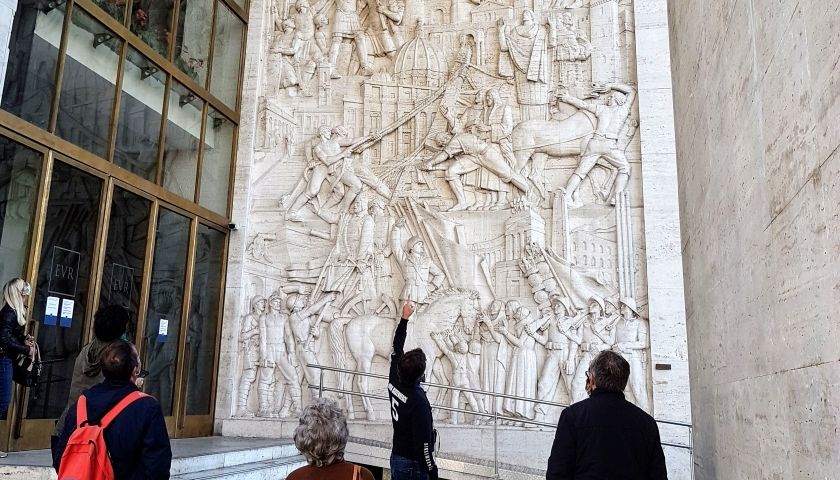
This suburb was created for an exhibition that was supposed to occur in 1942 but was abandoned due to the war. The architecture is fascinating and the buildings are a symbolic tribute to Fascism. It is worth a visit for this reason alone, but the famous Central Park Lake adds to this area's appeal.
43. Explora Museum for Kids (Italian: Explora Il Museo dei Bambini di Roma)
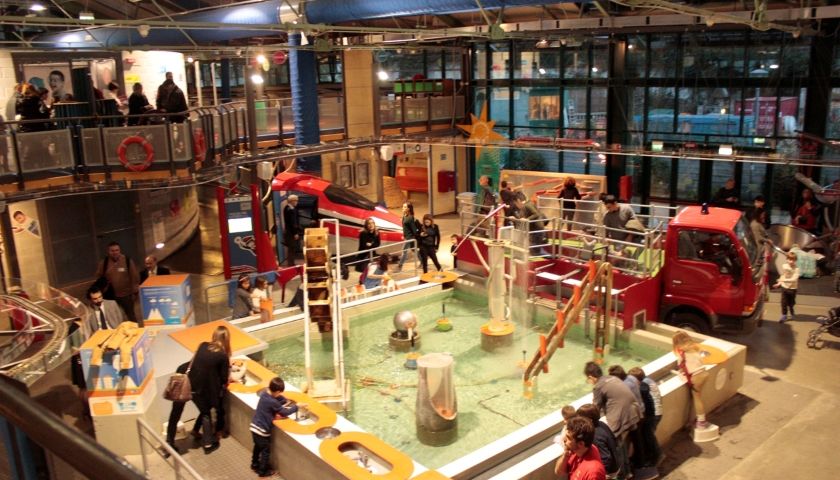
Traveling with children? A visit to the family-friendly museum Explora is a must. This interactive museum is designed to spark the interest in children and capture their creativity through hands-on science, art, and technological exhibits. The museum strives to offer a great balance of play and learning and is very popular with school groups and local children as well as families visiting Rome.
44. Fontana dell'Acqua Paola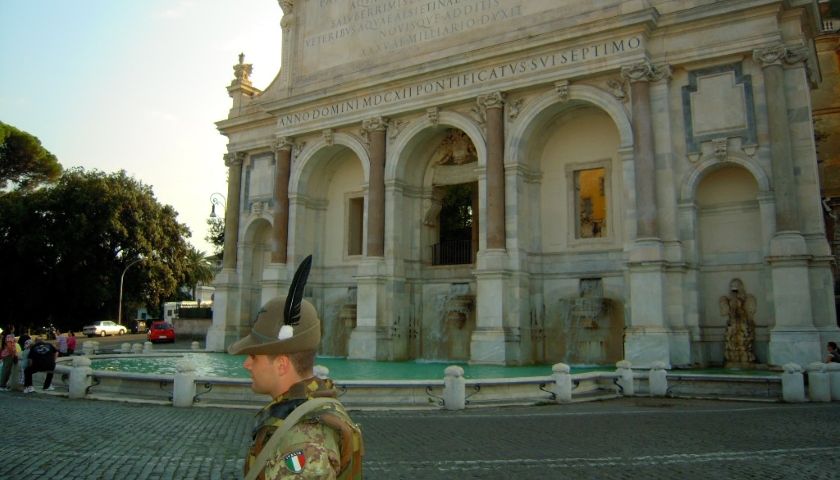
Perched on Rome's Janiculum Hill, Fontana dell'Acqua Paola offers sweeping views of the surrounding city. The large white marble fountain was built in the early 1600s to celebrate the restoration of the ancient Acqua Paola aqueduct. Commissioned by Pope Paul V and designed by Giovanni Fontana, the fountain was created using marble from Roman temple ruins and features five archways. The great fountain, also referred to as Il Fontanone and Fontana del Gianicolo, was successful in bringing water to Trastevere residents from Lake Bracciano. The large pool basin of the fountain was added later by Carlo Fontana at the end of the 16th century. This fountain remains a popular attraction for its romantic appeal and hilltop views.
45. Forum Boarium (Italian: Foro Boario)
Located on the banks of the Tiber River, the Forum Boarium was once the site of the cattle market in Ancient Rome and the oldest forum in Rome dating back to the Republican Era. The forum grounds were located within close proximity to Rome's ancient port and so the area was a true hub for commercial and market activity. The two key structures dating back to the second century B.C. that can still be seen at this historic site are the Temple of Hercules Victor and the Temple of Portunus.
46. Fountain of Moses (Italian: Fontana del Mosè)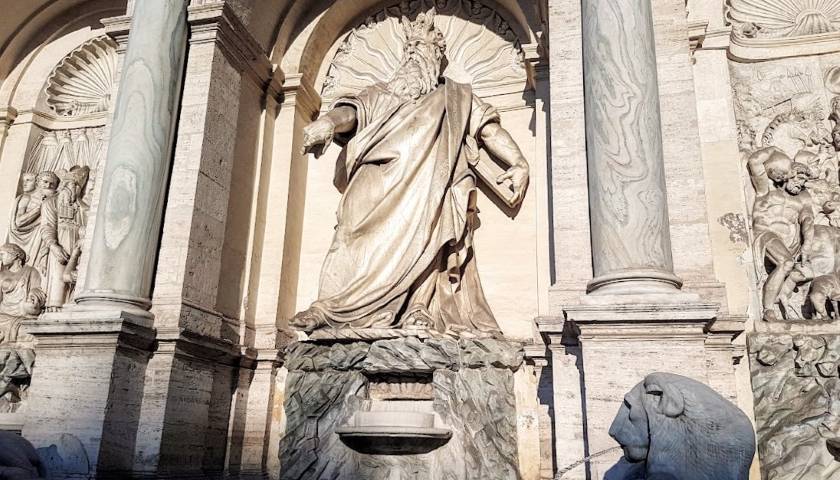
Featuring a massive statue of Moses, this three-arched fountain serves as the ending point of the Acqua Felice aqueduct. It's referred to as the Fountain of Moses, the Fontana dell'Acqua Felice, or the Fountain of Happy Water. The large structure was commissioned by Pope Sixtus V who restored the aqueduct to bring drinking water to Rome's residents. The figure of Moses was largely criticized for its questionable proportions but does resemble Michelangelo's famous version of Moses. The fountain also features Biblical reliefs and Egyptian lions spouting water from their mouths. The fountain was built in the 1580s and is located in the Piazza San Bernardo.
47. Fountain of the Four Rivers (Italian: Fontana dei Quattro Fiumi)
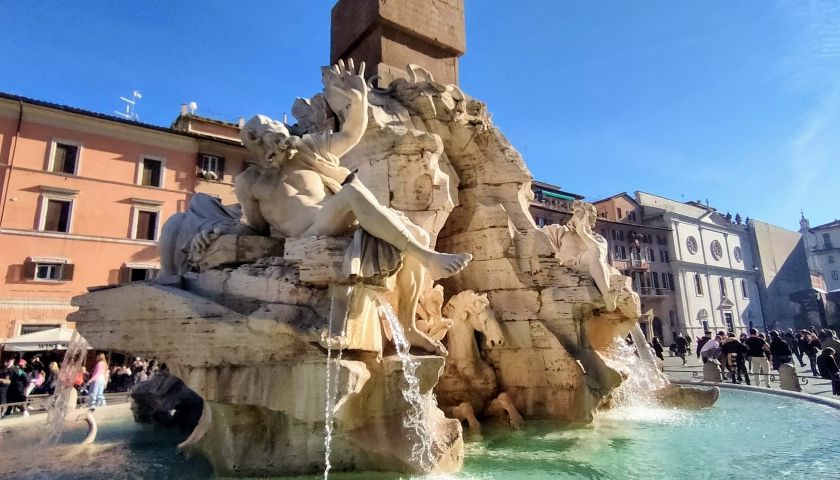
Centered within the long Piazza Navona, the Fountain of the Four Rivers is a notable marble and travertine fountain designed by Gianlorenzo Bernini. Pope Innocent X commissioned the opulent fountain to be built here to enjoy from his family's palace, which faced the Piazza Navona. Built between 1648 and 1651, this excellent example of Roman Baroque fountains features sculptures depicting four river gods representing four ancient world rivers: the Ganges in Asia, the Danube in Europe, the Rio de la Plata in America, and the Nile in Africa. An Egyptian obelisk rises from the center of the fountain creating a strong visual effect.
48. Fountain of the Mask (Italian: Fontana del Mascherone) 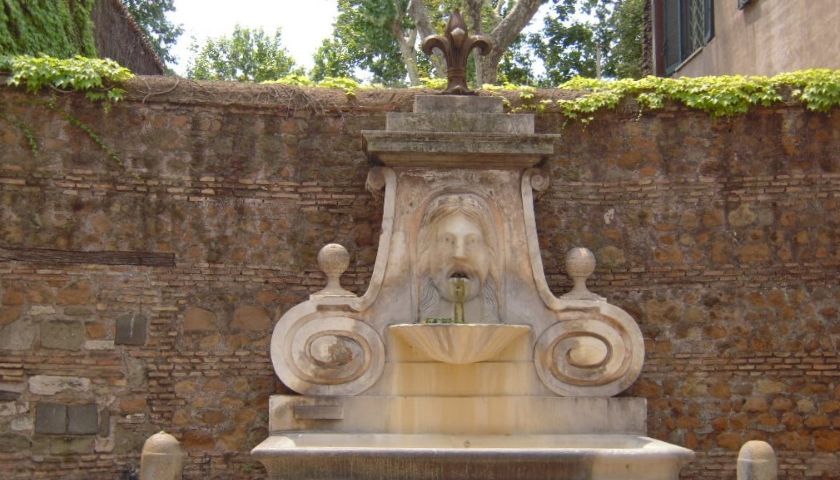
Commissioned by the Farnese family in the 17th century, the Fountain of the Mask is located along Via Giulia near Palazzo Farnese. The bizarre appearance of the fountain features a large face with gaping eyes and long hair. It's believed that the fountain was created by using material from older ruins. The fountain is attached to a wall and features water flowing from the mouth of the mask into a small basin. During family events, they say that wine flowed from this fountain.
49. Gesu Church (Italian: Chiesa del Gesù)
Located on the Piazza del Gesù, the Gesu Church is Rome's first Jesuit Church and has served as a model for other Jesuit churches with its Baroque architectural style of the structure's facade. The Jesuits are also referred to as the Society of Jesus or the Jesuit Order and stemmed from the Roman Catholic religious order. This church was first commissioned in 1551 and finally was consecrated in 1584. The Baroque facade was added later in the 17th century. The interior space features a high altar and frescoes flanking many walls of the church depicting Biblical scenes.
50. Ghetto
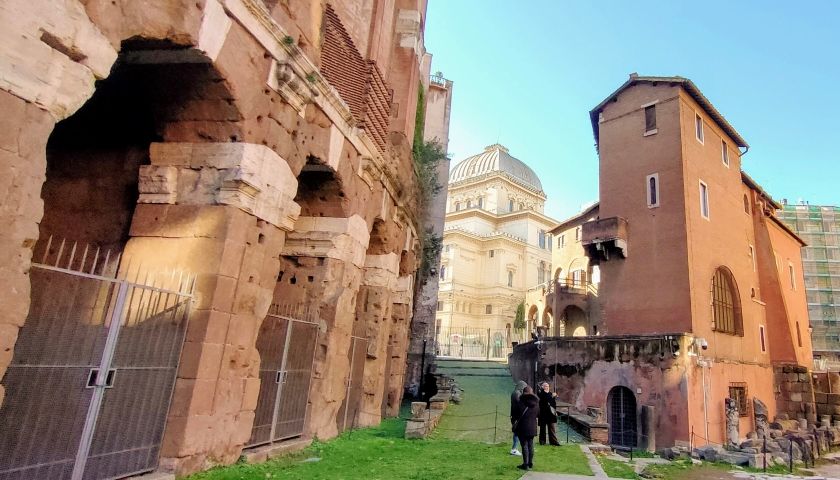
The Jewish Ghetto in Rome was officially established in 1555 when Pope Paul IV mandated the Roman Jewish community be segregated to living within the confines of a ghetto. Secured by gates that locked at night, this forced neighborhood was located in an undesirable part of town on a bend in the Tiber River that was prone to flooding. The Jewish community in Rome dates much further back since before Christian times and they lived in many pockets of the city, but mostly throughout the Trastevere. The Jewish population in Rome increased at the beginning of the 16th century leading to the Sant'Angelo district being deemed the ghetto. Marked by poverty, humiliation, and persecution, the Jewish Ghetto was overcrowded and a harsh way of life for everyone who was forced to live there. During the early 1800s there were a few periods of time when Jews were granted freedom outside of the ghetto, but it was re-instated each time. It wasn't until 1882 when the ghetto was formally abolished. Today, the walls have been torn down and visitors can walk along the streets that once housed such terrible living conditions for thousands of Jewish residents. This neighborhood is home to the new Synagogue of Rome and features a unique architectural style.
I highly recommend taking a private walking tour in order to learn more about the history!
51. Goethe's House (Italian: Casa di Goethe) 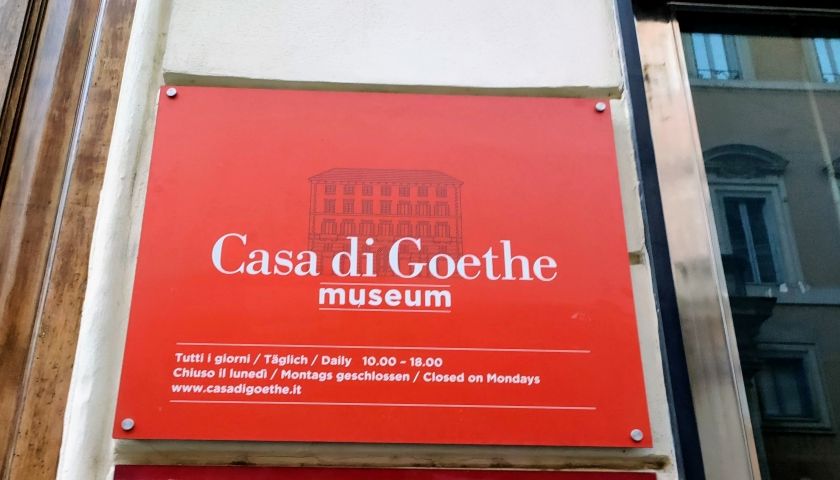
Situated near Piazza del Popolo, Johann Wolfgang Goethe lived here with his friend, German painter Johann Heinrich Wilhelm Tischbein from 1786 to 1788. Now open as a museum honoring the celebrated German writer, this 600-square-meter facility offers permanent and temporary exhibitions, as well as special events, including lectures, readings, concerts, and films. Visitors and scholars, by appointment only, may also visit the library, which has a fine selection of first and illustrated editions, and secondary resources.
52. Hadrian's Villa (Italian: Villa Adriana)
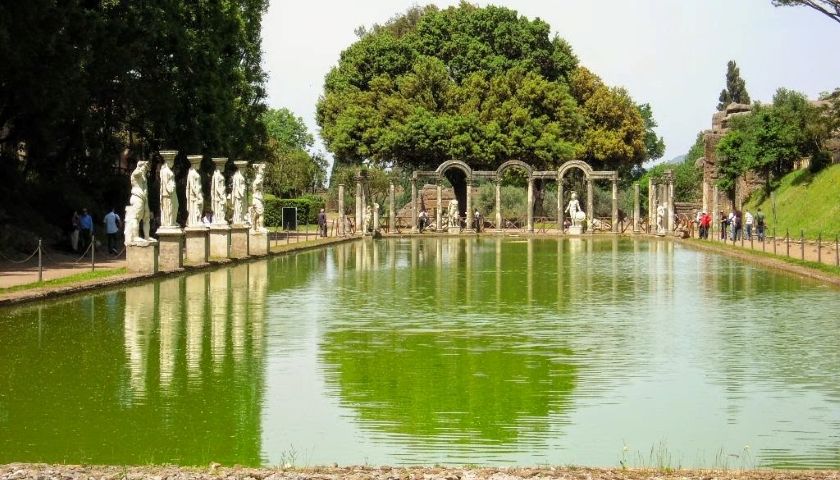
Archaeological treasures await at this extensive and impressive complex located northeast of Rome in Tivoli. Hadrian's Villa is a sprawling estate that was constructed for the Roman Emperor Hadrian during the second century to serve as a retreat. The property features excellent reproductions of buildings constructed in the traditional Egyptian and Greek architectural styles, a large pool with an island connected by drawbridge, columns, painting studios and more. In what started as a summer retreat for the mighty emperor became one of the most extensive ancient Roman villas. The villa was eventually deserted with the fall of the Roman Empire, but was later excavated, although much of the property has still yet to be unearthed. This substantial villa covers nearly 200 acres of land and is today a UNESCO World Heritage site for its significant collection of historical archaeological, architectural, and artistic treasures. Villa Adriana, as it's known in Italian, is a major tourist destination offering visitors the chance to step back in time and imagine the grandeur of this villa in its prime.
53. Holy Stairs (Italian: Scala Santa)

Located adjacent to the Basilica of St. John Lateran, the Holy Stairs is considered a sacred place where pilgrims flock to kneel on these sacred steps. The 28 steps are believed to have been the set of stairs that Jesus climbed to praetorium of Pontius Pilate's palace in Jerusalem during the Passion. The stairs arrived in Rome in the fourth century after St. Helena (Emperor Constantine's mother) brought them from Jerusalem. The marble steps are now covered in wood to protect them, but this Christian relic remains one of the best things to see in Rome for pilgrimages and worshipers to come and pray on each of the 28 steps.
54. House of Lorenzo Manilio (Italian: Casa di Lorenzo Manilius)
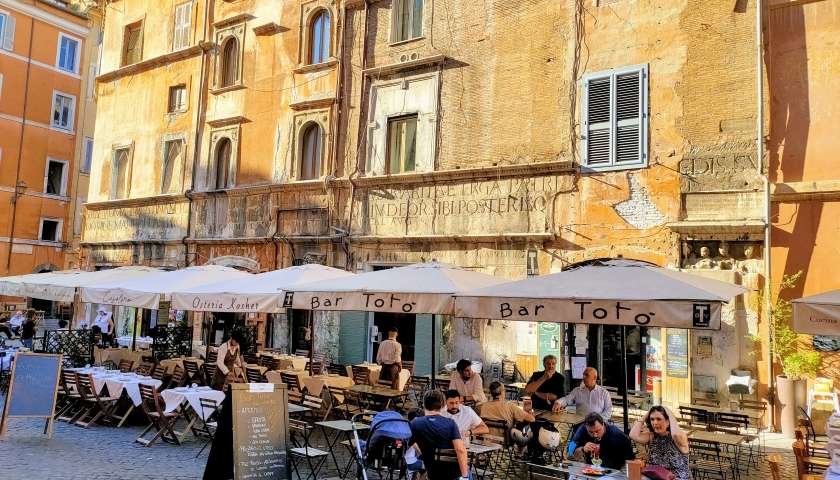
Though visitors cannot enter this historic home, the House of Lorenzo Manilio can be viewed from the exterior at 1 and 2 Via del Portico d'Ottavia. The building features notable inscriptions of his name in both Latin and Greek as well as the date of the structure, 1497. Lorenzo Manilio isn't necessarily a significant character in Rome's history, but rather is known for the inscription on his once home, which suggested the importance of Rome returning to its original splendor.
55. Imperial Forums (Italian: Fori Imperiali)
Comprised of five distinct areas, the Imperial Forums is one of the largest archeological sites in the world where digging and research are still underway. Each of the smaller forums -the Forums of Caesar, Nerva, Trajan, Augustus, and the Temple of Peace -were constructed in Rome between 46 BC and 113 AD. The heart of the late Roman Republic and of the Roman Empire, each of these public squares served as centers of politics, religion, and economics.
56. Janiculum Hill (Italian: Gianicolo)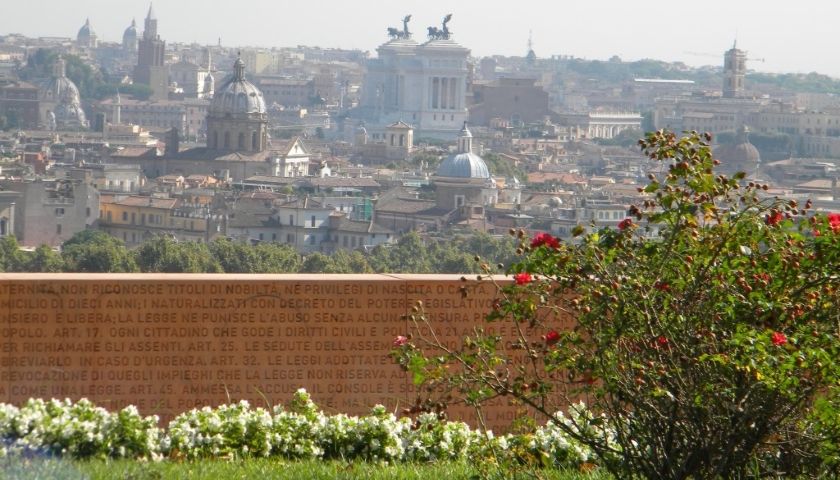
Janiculum Hill is one of Rome's seven signature hills. Janiculum in particular offers sweeping views of the surrounding skyline of church towers of Rome and is considered one of the city's tallest hills. Historically, the hill is known as the site where St. Peter was crucified where the church San Pietro in Montorio is now located. Located in Western Rome, its history and name stems from when the area was home to the cult of the god Janus. Today, the Janiculum Hill is home to part of the Acqua Paola aqueduct, a Baroque fountain commissioned by Pope Paul V, and a number of foreign institutions and universities.
57. Jewish Museum of Rome (Italian: Museo Ebraico)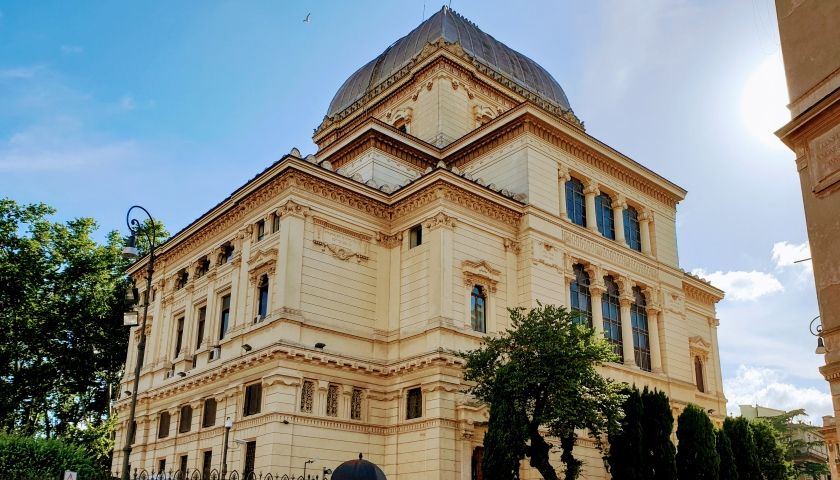
The Jewish Museum of Rome is located at the Great Synagogue, which is located within the historic Jewish Ghetto of Rome. Though the museum first opened in 1960, it was renovated and reopened to the public in 2005 showcasing significant cultural artifacts throughout its exhibition halls. The museum tells the story of the Jewish people's history in Rome from ancient times to modern day, through the many years of the ghetto and accounts of World War II and Nazi occupation. The museum celebrates the Roman Jewish community through its historic collection of artifacts, exhibits, as well as its location in the heart of the Roman Jewish community at the Great Synagogue facing the Tiber River. Admission to the Great Synagogue and Spanish Synagogue will grant admission to the Jewish Museum of Rome.
58. Keats-Shelley House (Italian: Casa di Keats e Shelley )
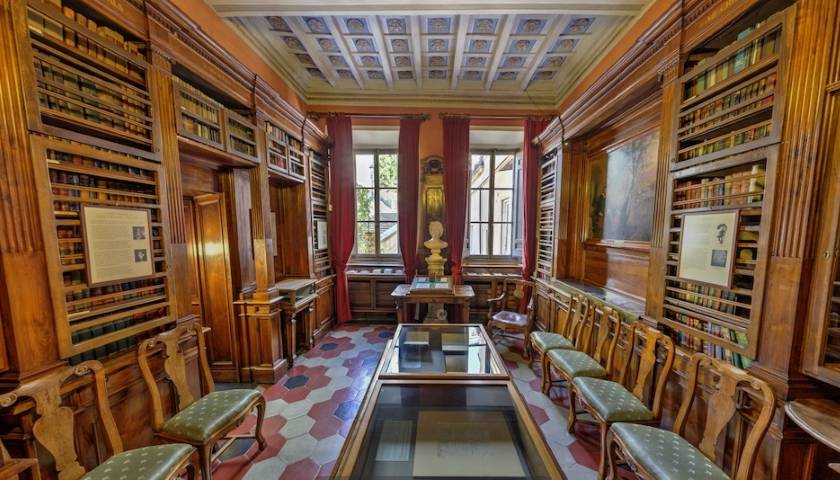
Situated next to the Spanish Steps, Piazza di Spagna 26 was the house where John Keats spent the last few months of his life in his fatal battle with consumption. Now serving as a shrine to the life works of Keats and the other Romantic poets, the museum offers an extensive collection of paintings, objects, and manuscripts. The extensive library, books of which may be consulted by request only, includes a reliquary containing a lock of Milton and Elizabeth Barrett's hair, and a manuscript and poem by Oscar Wilde.
59. Knights of Malta Square (Italian: Piazza dei Cavalieri di Malta)
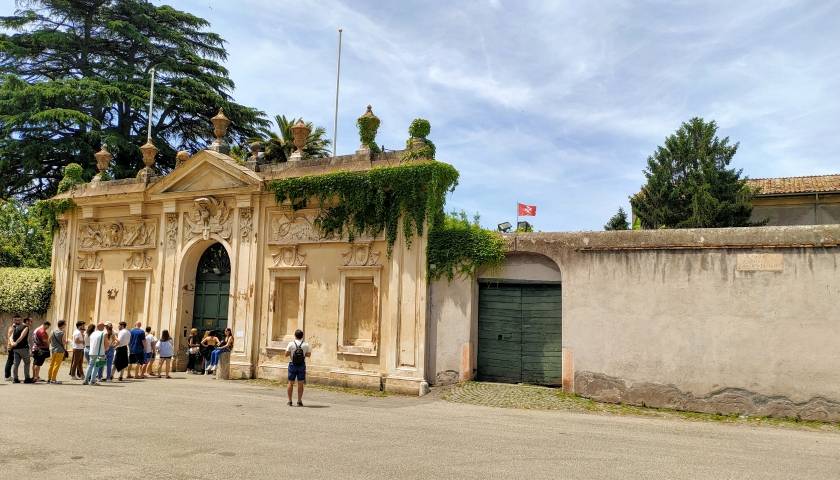
This small piazza provides visitors with a very unique view of St. Peter's through the keyhole of the gate leading to the private Knights of Malta complex. The keyhole found at the Knights of Malta Square offers a surprisingly picture-perfect view of St. Peter's Basilica framed by trees. The walled-in complex is the Roman headquarters to the Knights of Malta, which is a Roman Catholic religious order and considered the world's oldest surviving order of chivalry. The public is only allowed to get as close as the peep-hole, but visitors line up for the famous view.
60. Madama Lucrezia (Italian: Statua Madama Lucrezia)
Madama Lucrezia is one of the five Talking Statues of Rome, also known as the Congregation of Wits. During the 16th century, it was popular for Rome's opinionated citizens to voice their concerns and criticisms by posting poems and expressions on or next to these five statues. Madame Lucrezia is the only female talking statue and is a large Roman bust of a woman that sits in the corner of the Piazza di San Marco. While the bust is largely mutilated and disfigured, it is thought to be the likeness of the Egyptian goddess Isis. It is also thought that the statue was given to Lucrezia d'Alagno, the King of Naples Alfonso d'Aragona's mistress.
61. Madonnelle

Adorning corners of buildings all over the city of Rome are statues, paintings, and shrines depicting the Mother Mary, known collectively as Madonnelle (little Madonnas). These figures have been a popular practice in Rome since the Middle Ages, however the majority of these were placed during the 17th through the 19th century. The variations are plenty for the hundreds of Madonna altars still found throughout the city, but some are held up by sculptures of angels, others were lit by oil lamps, while others were framed in Baroque stucco reliefs. The majority of these can be found in Rome's historic central districts mostly on the corners of buildings located between the ground and second floor, protected from the bustle of the street below.
62. Maggiore Gate (Italian: Porta Maggiore)
The Maggiore Gate is a remnant of the ancient Aurelian Wall surrounding Rome. Dating back to the third century, this gate features a double archway serving two of the city's ancient roads, Via Praenestina and the Via Labicana. The gate also served as a crossing point for an aqueduct bringing drinking water to the Romans. The gate was first called Porta Prenestina, but was later renamed for its proximity to the church of Santa Maria Maggiore. Today, the Piazza di Porta Maggiore where the gate remains is a popular place for the whirlwind of Roman traffic.
63. Mamertine Prison (Italian: Carcere Mamertino)
Legend dictates that this prison was where St. Peter was held captive until his crucifixion. The Mamertine Prison is located at the foot of Capitoline Hill and dates back to as early as the seventh century B.C. Criminals were incarcerated and executed in the lower level, referred to as the Tullianum, of the structure. The upper room would have been at ground level during Ancient Roman times is now below street level and features plaques naming some of the more notable prisoners held here. During the 16th century, the church of San Giuseppe dei Falegnami was constructed on top of the ancient prison.
64. Mausoleum of Augustus (Italian: Mausoleo di Augusto)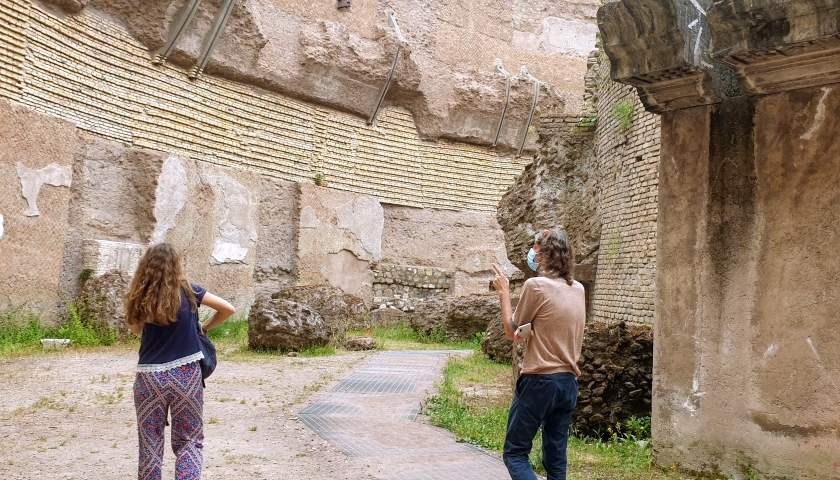
This family tomb was constructed by the first Roman Emperor Augustus in 28 B.C. The Mausoleum of Augustus held the remains of not only Augustus, but fellow emperors and family members. Burials took place at this mausoleum between its construction through the first century. The massive monument was excavated in the 1930s. Two obelisks (which have since been relocated) once marked the entrance to the circular-shaped structure that was once adorned with white marble, bronze doors, large statues. Today, the Mausoleum of Augustus is located at the Piazza Augusto Imperatore and with restoration underway is becoming one of the best things to see in Rome.
65. Mausoleum of St. Constance (Italian: Mausoleo di Santa Costanza)
This mausoleum turned church is dedicated to St. Constance who was the daughter of Emperor Constantine the Great. The round-shaped structure was built in the fourth century along with a funerary hall and baptistery at this larger Santa Costanza complex. The mausoleum's striking architectural features in its interior include a 12 pairs of granite columns surrounding the central circular space. The building also features well-preserved mosaics and early Christian art.
66. Milvio Bridge (Italian: Ponte Milvio)
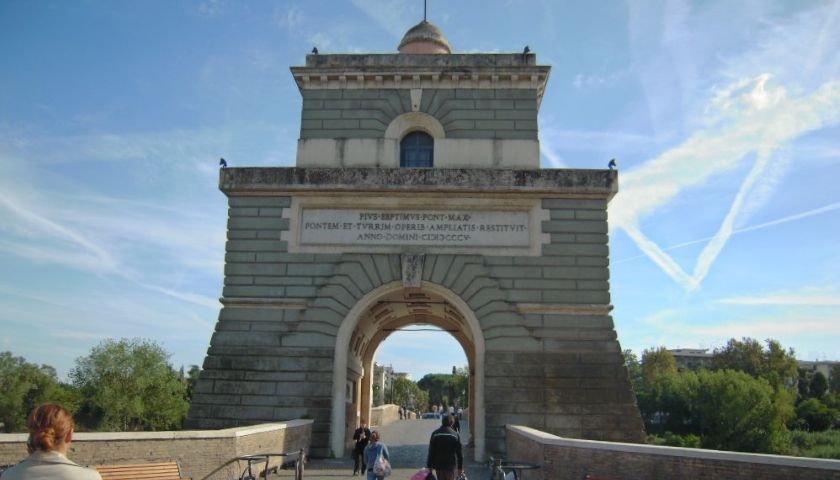
The Milvio Bridge is thought to date back to the third century B.C. when it was originally made of wood and was then reconstructed as a brick structure in the second century B.C. Located in the northern part of the city, this bridge played a significant role in Rome's history providing a route across the Tiber River and most notably as the scene for the nearby Battle of the Ponte Milvio in which Constantine battled and defeated his rival Maxentius. Watchtowers were added to this bridge in the 15th century and later in the 19th century, the bridge had to be restored due to damage from the Garibaldians.
67. Monument to Giordano Bruno (Italian: Monumento a Giordano Bruno)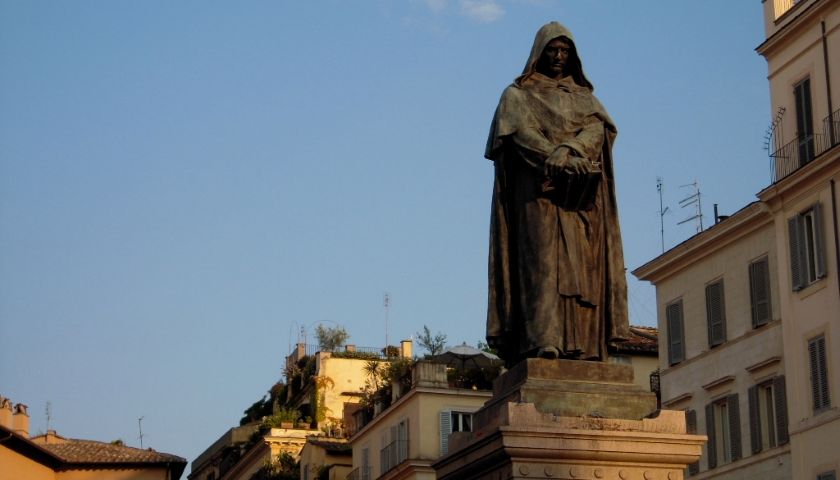
Located in the center of the Piazza Campo de' Fiori is a somber statue in honor of Giordano Bruno. It was in this very square that Bruno was burned alive for his unpopular theories in February of 1600. The 16th-century philosopher was ultimately punished for his thoughts on astronomy, the church, and mathematics. Although many executions took place in this public square, it was Bruno's that is most remembered and was memorialized when this bronze statue depicting a cloaked Bruno was erected in 1889 by Ettore Ferrari. The monument remains a symbol for freethinkers.
68. Monument to Victor Emmanuel II (Italian: Vittoriano) 
This grand (some would say grandiose) monument was erected to celebrate King Victor Emmanuel II, also known as Il Vittoriano, the first ruler of a modern day unified Italy. Adjacent to the ancient Roman Forum, the "altar of the father" offers a striking contrast to the ruins of Rome's glory. Built between 1885 and 1911, the monument, both by its placement near the Forum and its colossal design, clearly hopes to recapture the faded triumphs of the Empire. This ambition has not prevented Italians from indulging in one of their favorite pastimes of assigning it derisive nicknames, ranging from "the wedding cake" to "the typewriter." A museum archiving the process of unification, or Risorgimento, is located inside. The monument also offers spectacular views of the Rome cityscape.
69. Most Holy Trinity on the Mounts (Italian: Santissima Trinità dei Monti) 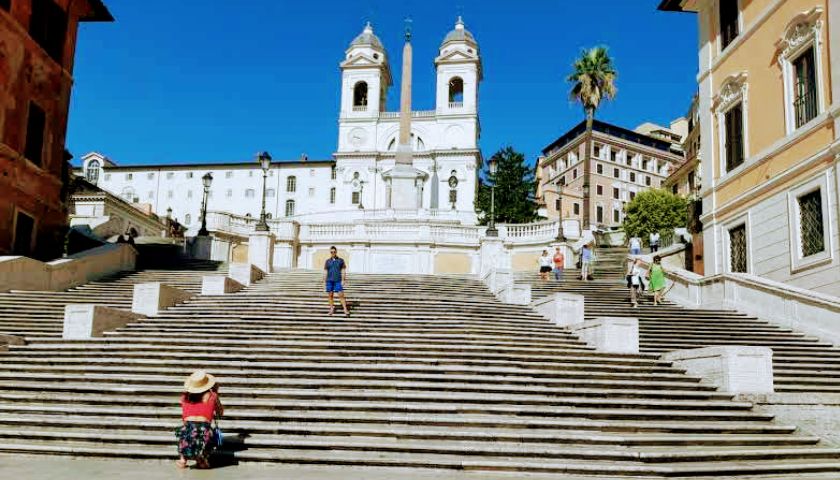
Perched above the famed Spanish Steps is the impressive church of Most Holy Trinity on the Mounts. Dedicated to the Holy Trinity, this basilica was constructed in at the beginning of the 16th century by King Louis XII of France but it was not consecrated until 1585 by Pope Sixtus V. The architectural features of this church include a neo-classical facade with an overall Gothic style. Notable interior features include paintings by Michelangelo's pupil, Volterra, frescoes and an altarpiece by Naldini, and the Mater Admirabilis painting of the Blessed Virgin.
70. Mouth of Truth (Italian: Bocca della Verità)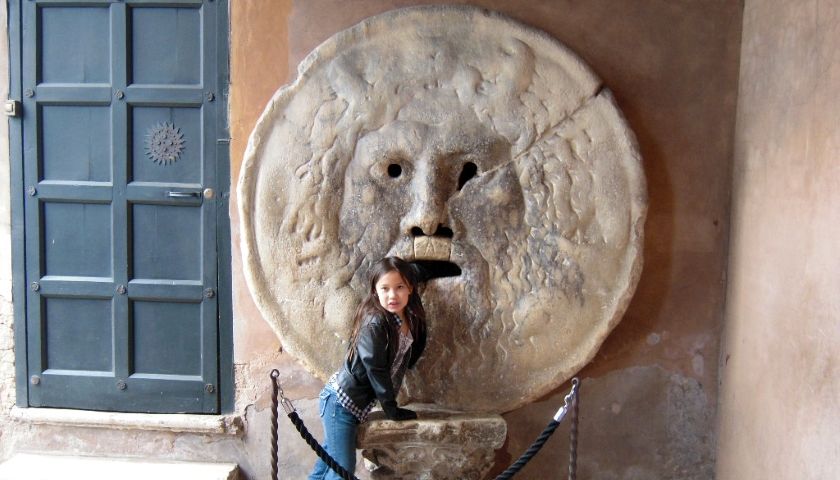
The Mouth of Truth may be a grim looking piece of ancient Roman statuary, but it also carries a sheen of romance since being featured prominently in one of the most romantic movies ever made, Roman Holiday, with Audrey Hepburn and Gregory Peck. The Bocca della Verità is believed to have been constructed before the 4th-century BC as a drain cover, but tradition has transformed its purpose into a lie detector: the powerful jaws will descend upon the hands of anyone who speaks lies. Watch out!
71. Museum of the Holy Souls in Purgatory (Italian: Museo delle Anime del Purgatorio)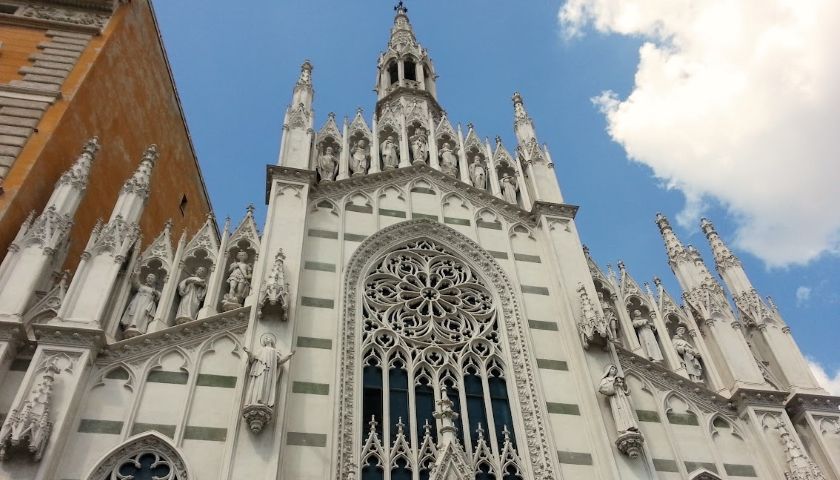
For a visit to a macabre museum that is certainly off the beaten track, look no further than the tiny one-room Museum of Souls in Purgatory. Located within the church of Sacro Cuore del Suffragio, this bizarre exhibit showcases examples of trapped souls in Purgatory. The collection was amassed by the French priest Father Jouet who gathered tangible evidence of what he believed were messages from the trapped souls to the living. Some examples of these messages from the dead include hand prints seared into a book and photographs of other pieces of evidence as found by Jouet from all over Europe.
72. Napoleonic Museum (Italian: Museo Napoleonico)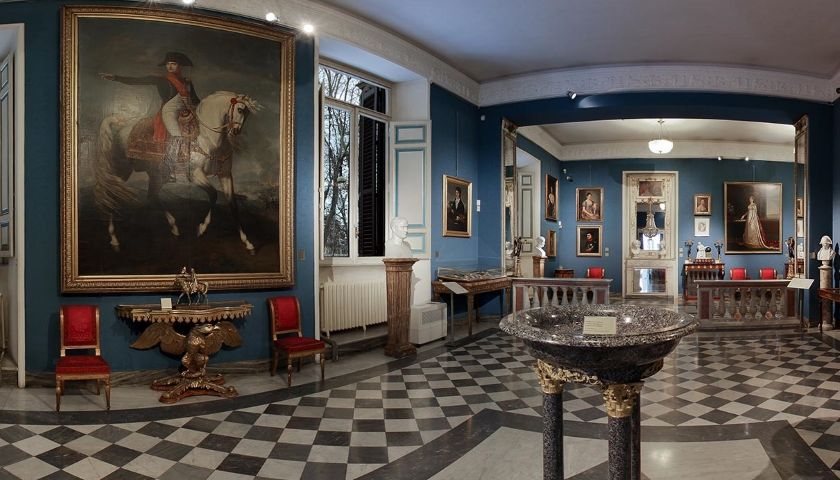
Housed within the Palazzo Primoli, the Napoleonic Museum features a collection of Napoleon artwork, relics, and mementos. This personal collection of Count Giuseppe Primoli's was donated to the city of Rome in 1927, the year of his death. Primoli was a distant relative of Napoleon himself and so his collection served as a showcase of the relationship between the Bonaparte family and that of Rome. The pieces in this small museum range from family portraits to personal clothing items from Napoleon and his close family members.
73. National Etruscan Museum (Italian: Museo Nazionale Etrusco di Villa Giulia)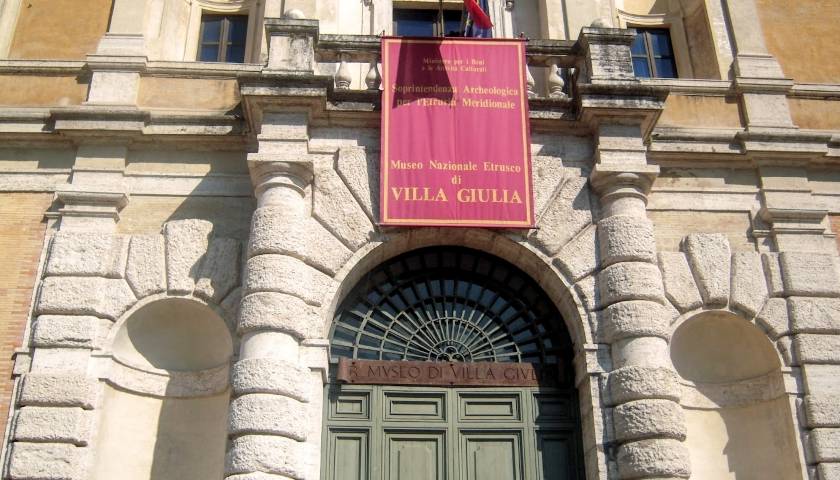
Housed within the beautiful Villa Giulia, the National Etruscan Museum features an extensive collection of Etruscan treasures. The unique and somewhat mysterious Etruscan Civilization dates back as early as the ninth century B.C. and was located throughout the Tuscan region of Italy. The Etruscan were especially known for their detailed art pieces including jewelry, bronze sculpture, and terracotta vases. This particular museum displays a fascinating array of historic pieces including the most famed funerary monument of a life-sized bride and groom.
74. National Gallery of Ancient Art of Corsini Palace (Italian: Galleria Nazionale d'Arte Antica di Palazzo Corsini)
 Housed in the Corsini Palace, the National Gallery of Ancient Art of Corsini Palace features an extensive collection of historic art. Much of the art on display came from the personal collection of the Corsini family, which was sold to the state along with the palace in the 1880s. The Corsini Gallery is part of the larger National Gallery of Ancient Art, which has an additional location at the Palazzo Barberini. The Corsini collection mostly includes art from the Renaissance through the 18th century with paintings, statues, and other works of art. Notable artists on display here include Caravaggio, Rubens, Van Dyck, among many other acclaimed artists of the era. The palace itself was built in the 18th century on the site of an earlier 15th-century villa and was the home of the famed art collector Neri Corsini, who was the nephew of Pope Clement XII.
Housed in the Corsini Palace, the National Gallery of Ancient Art of Corsini Palace features an extensive collection of historic art. Much of the art on display came from the personal collection of the Corsini family, which was sold to the state along with the palace in the 1880s. The Corsini Gallery is part of the larger National Gallery of Ancient Art, which has an additional location at the Palazzo Barberini. The Corsini collection mostly includes art from the Renaissance through the 18th century with paintings, statues, and other works of art. Notable artists on display here include Caravaggio, Rubens, Van Dyck, among many other acclaimed artists of the era. The palace itself was built in the 18th century on the site of an earlier 15th-century villa and was the home of the famed art collector Neri Corsini, who was the nephew of Pope Clement XII.
75. National Gallery of Modern Art (Italian: Galleria Nazionale Arte Moderna)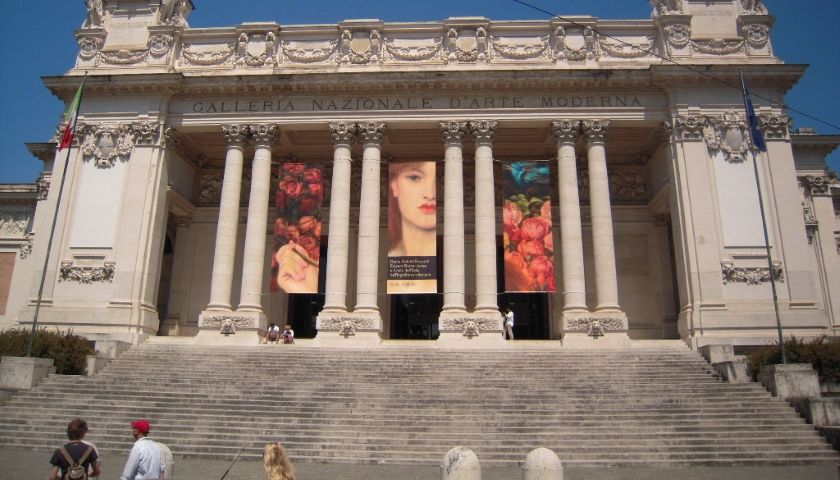
With the countless attractions dedicated to the ancient past, the National Gallery of Modern Art will catapult you to more modern times with excellent examples artwork from the 19th and 20th centuries. The collection is housed in a neo-classical palace building bordering the Villa Borghese. The museum was established in 1883 and features an impressive collection of both Italian national artists including Chirico, Morandi, Burri as well as international artists from around Europe such as Pollock, Van Gogh, and Cézanne.
76. National Museum of the Venetian Palace (Italian: Museo Nazionale di Palazzo Venezia)
Located at the central Palazzo Venezia, the National Museum of the Venetian Palace boasts an impressive collection of art from the Medieval and the Renaissance eras. Housed in the iconic Renaissance palace, this museum is notable for its pieces including tapestries, ceramics, paintings, and bronze figurines among other items.
77. Navicella Fountain (Italian: Fontana della Navicella)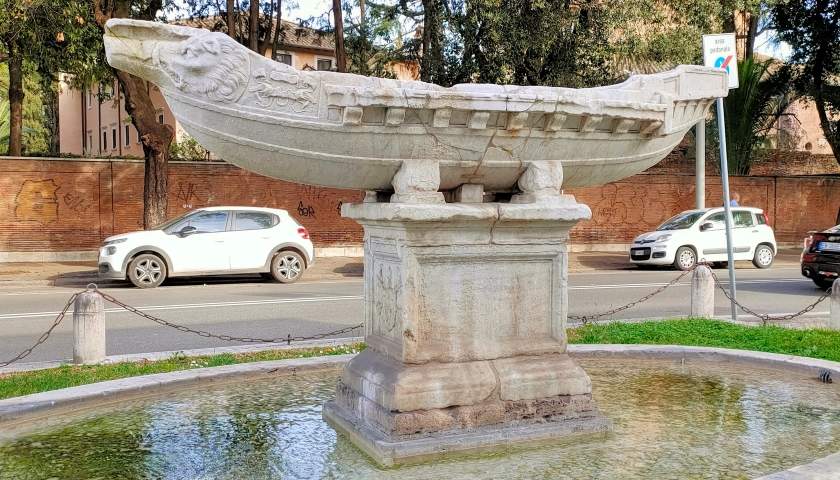
The Navicella Fountain is one of Rome's more unique fountains. Located directly in front of the Santa Maria in Domnica Church, this fountain features a beautifully sculpted boat perched above the water atop a rectangular base. This version of the fountain was created in 1520 when Pope Leo X was renovating the church and commissioned for this once-sculpture piece to be turned into a working fountain to face the front of the church. The boat itself is thought to have been a representation of an older boat found near the Colosseum.
78. Non-Catholic Cemetery for Foreigners (Italian: Cimitero Acattolico) 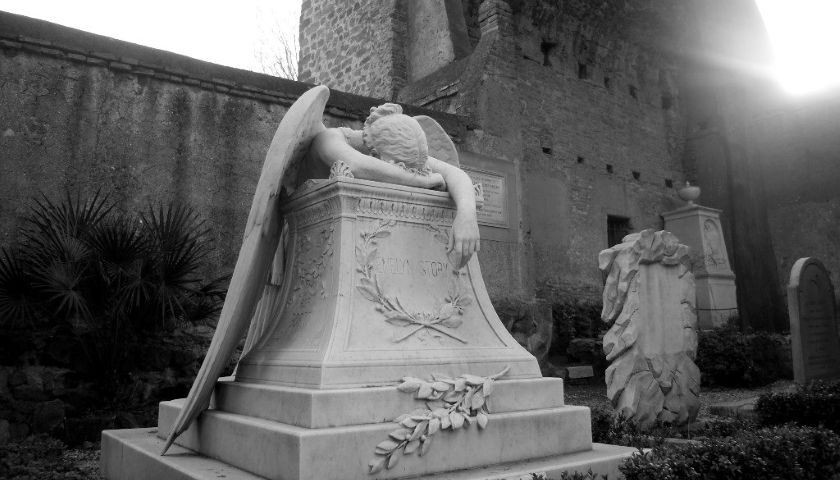
Nestled between the two ancient monuments of the Pyramid of Caius Cestius and pieces of the Aurelian Wall, this notable cemetery has been used since the 18th century to bury non-Catholics. The Non-Catholic Cemetery for Foreigners, also referred to as the Protestant Cemetery, is notable for the many highly esteemed people who are buried with its most famous grave sites belonging to the English poets John Keats and Percy Bysshe Shelley. The grave sites here are very diverse spanning faiths from Buddhism to Islam and nations from Japan to Bulgaria. Many of the most notable people buried here were from fields within the arts including sculptors, archaeologists, and architects.
79. Obelisk of Montecitorio (Italian: Obelisco di Montecitorio)
The obelisk that can be seen today at the Piazza di Montecitorio is from ancient Egypt dating back to the sixth century B.C. It wasn't until the year 10 B.C. that Roman Emperor Augustus brought the 71-foot red-granite structure to Rome to be used as a large sundial. During the Middle Ages, the obelisk disappeared and wasn't rediscovered until the 16th century. By the 18th century, Pope Pius VI repaired the sky scraping statue and it was finally erected in its current location in the Piazza di Montecitorio in front of the Italian Chamber of Deputies buildings.
80. Octavia's Portico (Italian: Portico di Ottavia)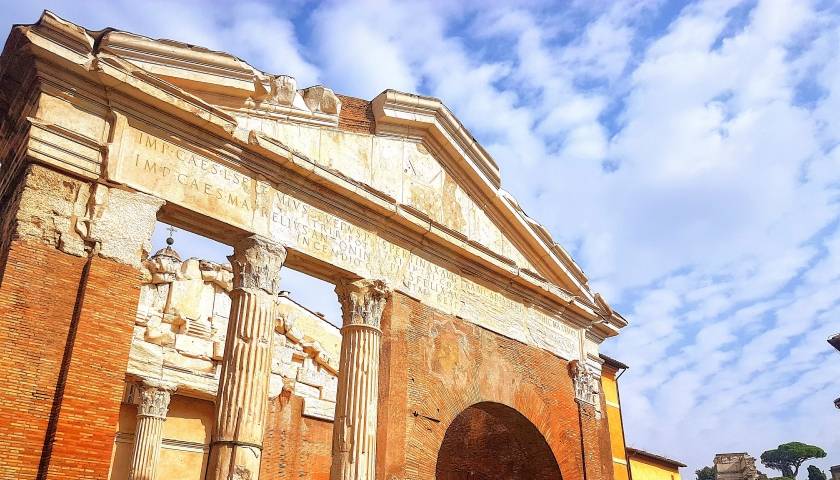
The remains of this ancient structure stand in the same complex where the Sant'Angelo in Pescheria and other archaeological gems are found today. Octavia's Portico was built by Augustus for his sister, Octavia near the year 27 B.C. The structure originally featured a colonnaded promenade with a lavish decor of paintings and sculptures. It also housed Octavia's Library and the temples of Jupiter and Juno. The structure was damaged and renovated over the years, but a portion of the ruins can still be seen and visited today. The Portico was also the site of the medieval fish market and the central area of the walled-in Jewish Ghetto.
81. Oppian Hill Park (Italian: Parco del Colle Oppio)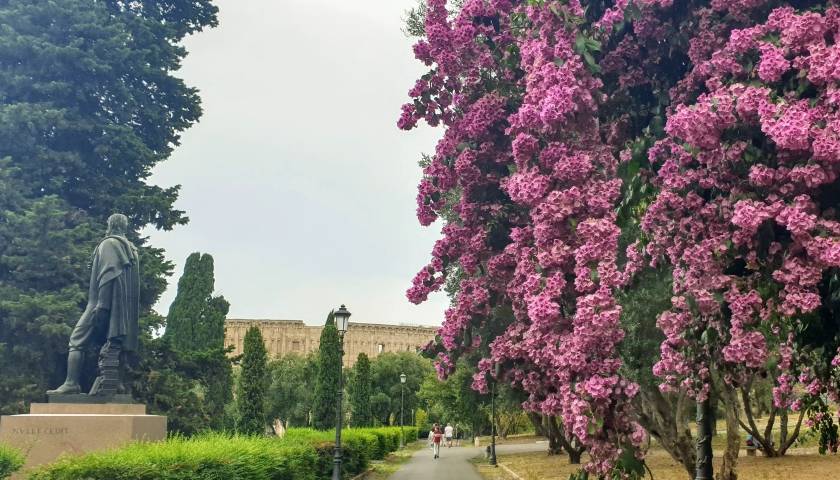
Oppian Hill Park is located adjacent to one of Rome's most visited attractions, the Colosseum. Oppian Hill is part of the Esquiline Hill, which is one of the famed Seven Hills of Rome. The park is considered a focal point of the city due to its proximity to the Colosseum and was once the site of Nero's villa. In more modern times, the park was constructed as Napoleonic Park featuring walking paths, gardens, and fountains. The park is also considered an archaeological park with its ancient ruins, making for a pleasant place to enjoy a stroll in the center of the city.
82. Our Lady of Peace (Italian: Santa Maria della Pace)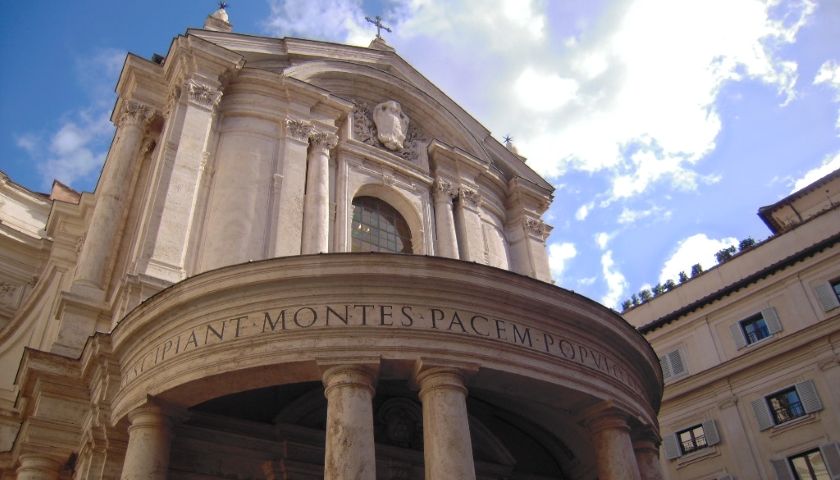
Dedicated to Virgin Mary, the Our Lady of Peace Church was constructed by Pope Sixtus IV toward the end of the 15th century. Not only in honor of Our Lady of Peace, but the church was constructed after peace was restored in Rome following wartime conflict. The striking structure is tucked away on a smaller street west of the Piazza Navona and features a Baroque facade, which was added later in the 17th century, and a semi-circular portico. The octagonal-shaped interior features domed ceilings adorned with frescoes, one of which is by Raphael. The high altar features the iconic Blessed Virgin and the Diving Child painting, which according to legend the image of the Mother Mary bled blood in the 1400s, leading to the construction of this church in her honor at this site.
83. Our Lady of the Altar of Heaven (Italian: Basilica di Santa Maria in Aracoeli)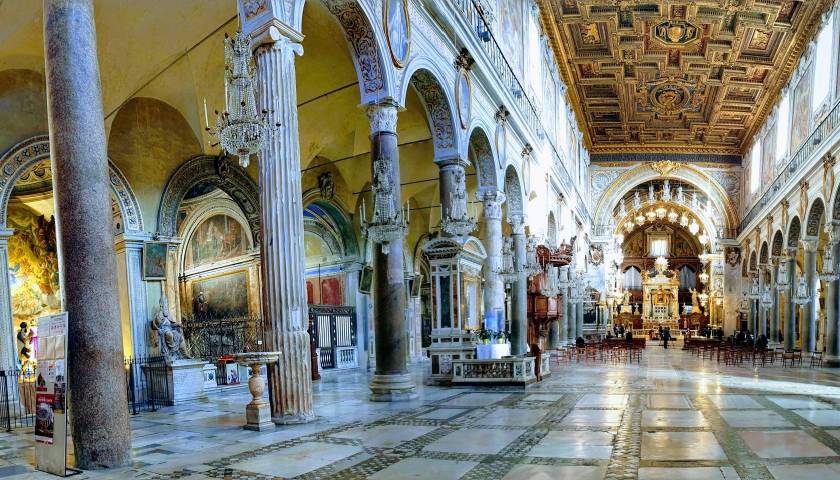
Perched atop the Capitoline Hill of Rome is the Basilica for Our Lady of the Altar of Heaven. The church, which dates back to the 13th century, is also considered the church of Rome's city council and is dedicated to the Virgin Mary. The church sits on a site that was once used as a temple to the pagan goddess Juno. The site is thought to have been significant according to a legend that Emperor Augustus was visited by a vision of the Mother Mary in addition to an oracle of the coming of Christ. The interior of the church once featured frescoes by Cavallini, most of which were removed during later renovations, however there are still many notable interior decorations including paintings and recycled columns. The most striking feature of this church is the imposing presence it retains on the hilltop with 124 stairs to climb to reach the structure.
84. Our Lady of the Conception of the Capuchins (Italian: Santa Maria della Concezione dei Cappuccini)
Our Lady of the Conception of the Capuchins was commissioned by Pope Urban VIII for his Capuchin friar brother, Antonio Barberini. The church first opened in 1626 and is dedicated to the Blessed Virgin Mary. The Capuchin order separated from the Franciscans in 1525 and traditionally follow a genuine and simple way of life servicing the poor and sick. They are identified by their hooded tunic and sandals, which can still be seen at this church today. The most striking aspect of this particular church is its ossuary. Upon the building of this new church, thousands of Capuchin friars remains were exhumed and transferred to the crypt here. Since then, this crypt has become the final resting place for over 4,000 friars. The skulls and bones have been used to decorate the walls in a macabre fashion creating symbols and designs. While the unique Capuchin Crypt is a major draw for visitors to this church, its interior space also features significant paintings and a reconstructed facade.
85. Our Lady of Victory (Italian: Chiesa di Santa Maria della Vittoria )
Our Lady of Victory Church is best known for its Bernini masterpiece of the Ecstasy of St. Teresa located in the church's Cornaro Chapel. The church is considered one of Rome's minor basilicas and is dedicated to the Virgin Mary. Originally the church was built in 1605 for Saint Paul, but was later renamed after a Catholic victorious battle took place in 1620. The Baroque facade was added in the 1620s and was influenced by the nearby Santa Susanna church. The interior boasts several other significant works of art including pieces by Guidi, Monnot, and Domenichino.
86. Palatine Hill (Italian: Palatino)

This city is famous for its Seven Hills of Rome, and Palatine Hill is one of the most impressive as it is centered within the city's most ancient districts. Offering sweeping views of the ancient city, this hill is in the midst of some of Rome's most notable and ancient attractions including the Colosseum, the Roman Forum, and Circus Maximus. Palatine Hill itself is about 40 meters in height and is believed to be the setting for the legendary Roman mythological tale of Romulus and Remus, siting that this was the scene for the cave where the infants were found and cared for by the she-wolf--a scene that has been forever immortalized in art history. Beyond the tale of these twins, it's been discovered that Romans have been living on this hill since as early as the 10th century BCE. Throughout Rome's early history, many of its most powerful rulers built palaces in this area and the ruins still exist today from Augustus, Tiberius, and Domitian. Today, Palatine Hill is an open-air museum with plenty of significant archaeological gems to discover, which have all played an important role in the history of Ancient Rome.
87. Palazzetto Zuccari
Named after and originally built by famed fresco artist and architect Frederico Zuccaro, Palazzetto Zuccari is one of Rome's more bizarre architectural examples. The building was designed and constructed toward the end of the 16th century and has undergone many renovations and redesigns in the years since. Though this structure is not open to the public, it does attract its share of passerby as the most notable feature of the building is the monstrous design. The door and windows were designed to resemble the face and open mouth of a monster, creating a noticeable facade. The home's history also includes serving as home to the Toscanelli family during the 17th century and then the Queen Mary Casimira of Poland in the 18th century. It was later used as an inn attracting artists and finally in the 20th century, it became the home of the Hertzian Library of Art History.
88. Palazzo Altemps 
Showcasing an impressive collection of Greek and Roman Statues, the Palazzo Altemps is a branch of the National Roman Museum. Housed within a 15th-century palace, this museum features plenty of masterpieces dating back as early as the third century BCE through the 17th century. The collection was pieced together from the personal collections of families of the Roman nobility.
89. Palazzo Farnese
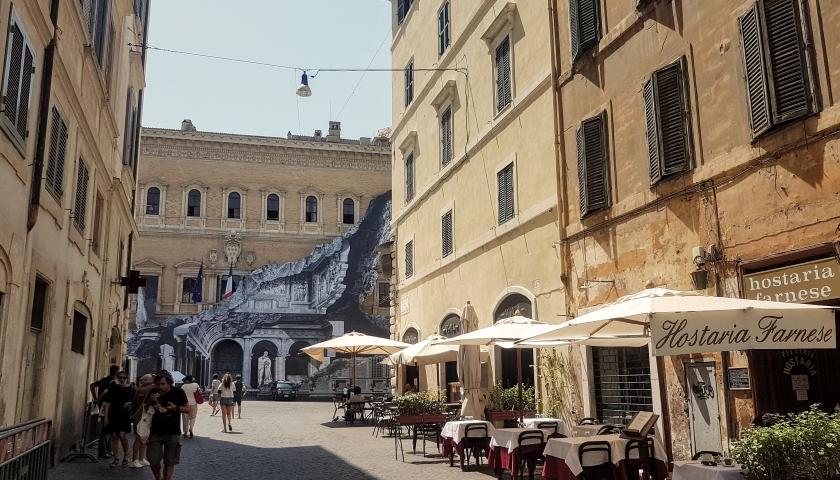
Housed in the lovely Renaissance palace once home to the Farnese family, the Palazzo Farnese currently serves as the French Embassy. The building was first started in 1514 with designs by Antonio da Sangallo the Younger and finishing touches by Michelangelo. The construction of the palace was commissioned by then Cardinal Alessandro Farnese, who later became Pope Paulus III. The interior space is flanked with historical Renaissance frescoes and the family amassed a significant collection of paintings and sculpture, some of which remain on property while others are now displayed in other museums. The palace is only open for pre-booked visitors to the embassy.
90. Palazzo Venezia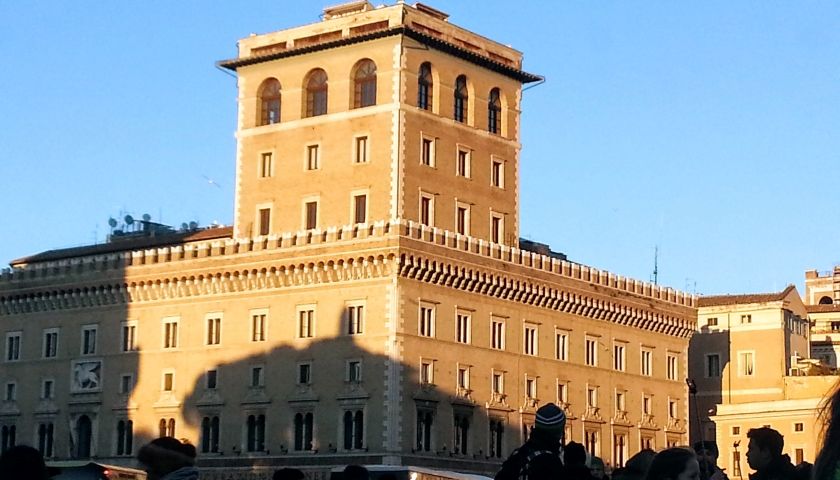
This centrally-located palace was once the Palace of St. Mark and today houses the National Museum of the Palazzo Venezia. The origins of the building at this site began as a medieval house complex. It was then expanded upon to become the papal palace for Pope Paul II. The palace has undergone many redevelopments over the years and has served as both the seat of the French administration under Napoleon and even offices for Mussolini. Today, the Palazzo Venezia remains an important building in Rome's history and houses both the National Museum of the Palazzo Venezia and the library of the National Institute of Archaeology and History of Art.
91. Pantheon

Certainly one of Rome's most visited attractions, the Pantheon is one of Ancient Rome's great surviving buildings. The striking structure features a circular construction with a portico facade featuring Egyptian marble columns along with the signature large-scale dome. Originally, the Pantheon was commissioned by Marcus Agrippa in the first century as a temple dedicated to Pagan gods. The building was later restored, rebuilt, and added on to throughout the Ancient Roman Era. By the sixth century, the previously pagan building was transformed into a Christian church by Pope Boniface IV. The Pantheon has also served as a tomb and the final resting place for many acclaimed artists, architects, and even two kings of Italy. Visitors flock to the historic building to enjoy the vaulted ceilings of the large rotunda dome with the single circular opening in the center providing the natural lighting for the interior.
92. Pasquino Statue (Italian: Pasquino)
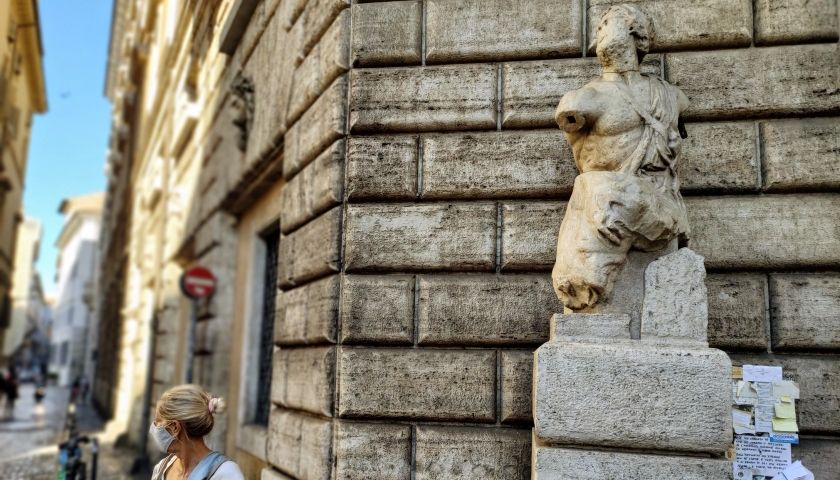
The mysterious Pasquino Statue (Statua di Pasquino) is considered the first of Rome's Talking Statues, also known as the Congregation of Wits. During the 16th century, it was popular for Rome's opinionated citizens to voice their concerns and criticisms by posting poems and expressions on or next to these five statues. Pasquino specifically is thought to date back to the third century BCE. The statue was excavated during the 15th century and though damaged, it was perched on within a small Roman piazza. The Talking Statues tradition began when Cardinal Oliviero Carafa made a statement on this statue then inspiring others to use this new form of public expression.
93. Pharmacy at Our Lady of the Stairs (Italian: Antica Farmacia S. Maria della Scala)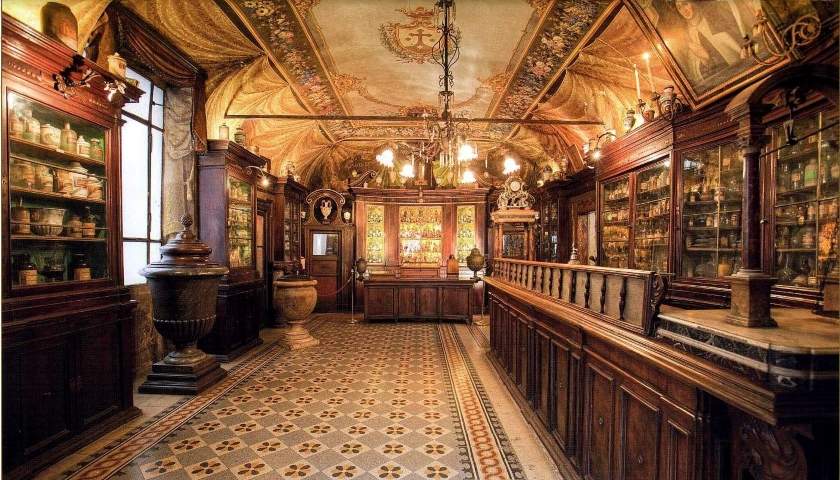
Located adjacent to the church of Santa Maria della Scala, this pharmacy was started in the 1700s to serve the medicinal needs of the papal court. The pharmacy was first established by the neighboring church, which was run by the Order of Barefoot Carmelites who researched and grew herbs for the use in treating the sick throughout Rome. This pharmacy served an important service in the Trastevere treating its residents and Rome's popes. The Carmelite monks still oversee the pharmacy, which is mostly intact the same way it has been for hundreds of years with a workshop and sales room. Visits are strictly by appointment and can be made by calling +39- 06-580.6233.
94. Piazza del Campidoglio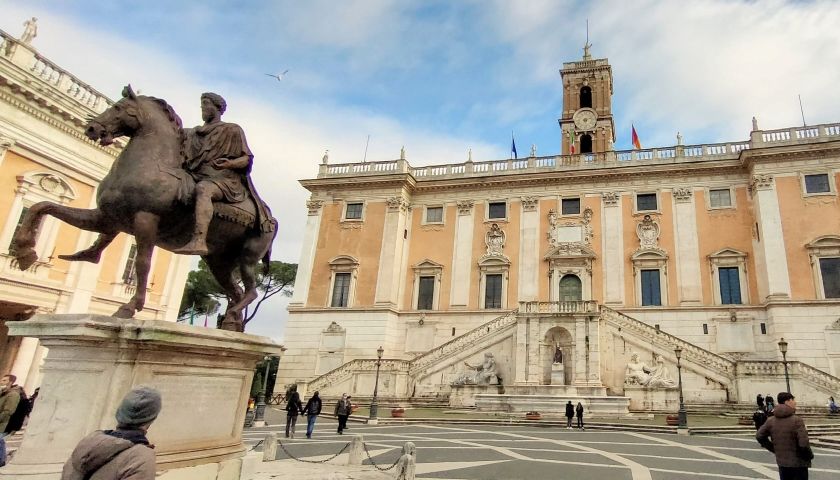
Decidedly one of Rome's most beautiful public piazzas, the Piazza del Campidoglio was designed by Michelangelo in 1538 as part of a revitalization plan for Capitoline Hill. The piazza sits upon Rome's famed Capitole Hill, which serves as modern-day Rome's government center and where Rome began. The site once housed many temples and ancient structures. The three prominent buildings that flank the piazza today are the Palazzo Senatorio, Palazzo Nuovo, and the Palazzo dei Conservatori, all of which Michelangelo played a role in designing. A long staircase known as the Cordonata leads to the piazza in the center of which stands a statue of Marcus Aurelius.
95. Piazza del Popolo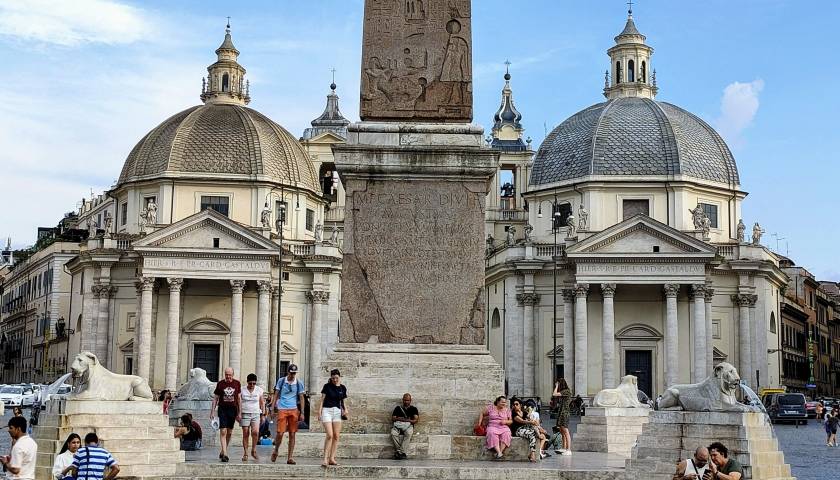
This large oval piazza is centered by a towering ancient Egyptian obelisk that dates back to the 13th century BCE and was placed in the square in 1589 by Pope Sisto V. The Piazza del Popolo has served as the northern entrance point into the city of Rome at the Porta Flaminia and is located between the Tiber River and the Villa Borghese to the east. Surrounding the square are many significant structures including the church of Santa Maria del Popolo as well as the twin churches of Santa Maria dei Miracoli and Santa Maria in Montesanto.
96. Piazza della Repubblica
This semi-circular shaped square features the large Fountain of the Naiads as the central focal point. Piazza della Repubblica's unique shape follows the layout of the ancient Baths of Diocletian complex. The piazza is lined with neoclassical colonnades and porticos as well as the church of Santa Maria degli Angeli e dei Martiri.
97. Piazza Navona
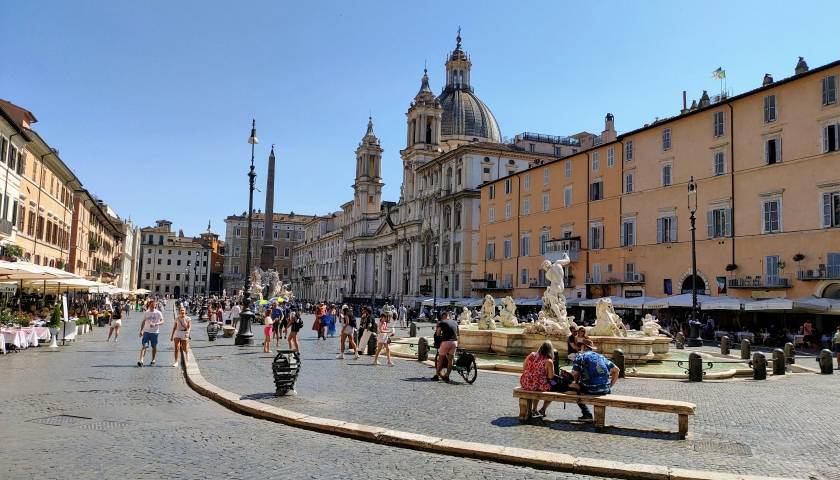
Today's long Piazza Navona was once the site of the Stadium of Domitian in the first century and the piazza today still retains that arena shape. Featuring three elegant fountains including the Bernini masterpiece of the Fountain of four Rivers and fronting the baroque church of Sant'Agnese in Agone, this piazza is one of Rome's most popular. The piazza is lively with activity day and night offering plenty of cafes, shops, and nightlife options.
98. Piazza Venezia
While not a cozy pedestrian square like some of Rome's other charming piazzas, the Piazza Venezia is surrounded by busy roads and traffic and is located within the heart of the city. The standout monument dominating this city square is Il Vittoriano dedicated to Italy's first King, Victor Emmanuel II. The sizable structure features gleaming white marble and striking statues. The steps leading up to the monument is home to the Unknown Soldier from World War I with permanent armed guards in place. The Piazza Venezia is located at the foot of Capitoline Hill and is surrounded by the Palazzo Venezia, Palazzo Generali, and the Palazzo Bonaparte.
99. Pincio Gardens (Italian: Giardini Del Pincio)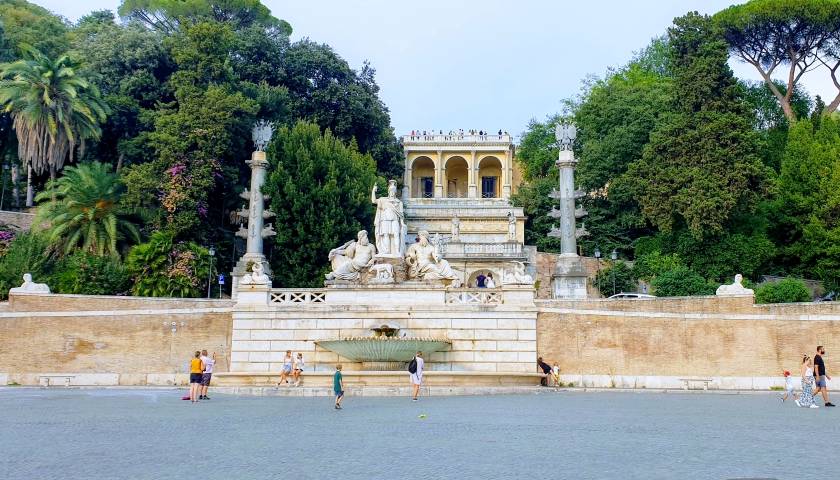
The Pincio Gardens overlook the Piazza del Popolo and lie adjacent to the Villa Borghese. The lovely space was planned and developed in the 19th century by architect Giuseppe Valadier and commissioned by Napoleon. However, there have been gardens on this land since ancient Roman times. Today, the gardens offer a popular place for strolling with plenty of plant life and panoramic vistas.
100. Ponte Sant'Angelo

Flanked with decorative angels, the Ponte Sant'Angelo dates back to the second century commissioned by Roman Emperor Hadrian and thus is also referred to as Hadrian's Bridge. Hadrian planned to link the heart of the city to his mausoleum, which is the present day Castel Sant'Angelo. The bridge features the iconic archways along with a series of decorative angel statues that were added to the bridge during the Baroque era with its characteristic style. The angels were designed and sculpted by Bernini and his pupils and each figure is holding symbols and relics from the Passion of Christ. This beautiful bridge is one among Rome's most beautiful and today is pedestrian only.
101. Porter's Fountain (Italian: Fontanella del Facchino)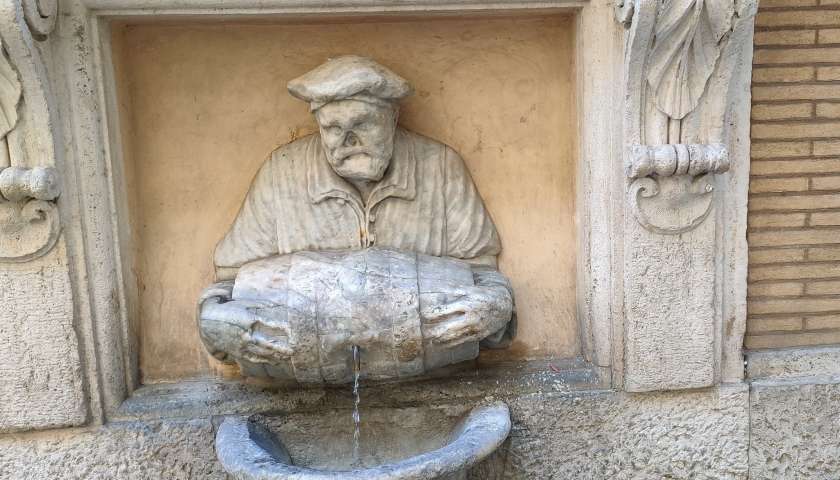
Located along Via Lata, the Porter's Fountain is one of Rome's many Talking Statues, also known as the Congregation of Wits. During the 16th century, it was popular for Rome's opinionated citizens to voice their concerns and criticisms by posting poems and expressions on or next to these five statues. It's unclear of the exact origins of this particular fountain but it is thought to have dated back to the 16th century but was originally located on the facade of the Palazzo de Carolis. The fountain depicts a man carrying a barrel, most likely one of the water sellers who would carry water from the river to sell to the public in the streets.
102. Pulcino della Minerva Elephant and Obelisk (Italian: Obelisco della Minerva)
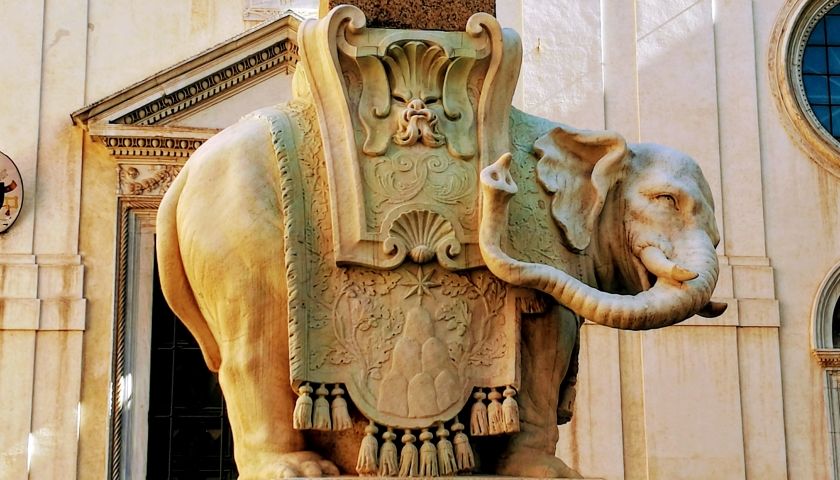
Though Rome is home to many Egyptian obelisks, the Pulcino della Minerva is unique in that the obelisk is supported by the statue of an elephant. Located in the Piazza della Minerva, this statue was designed by legendary Baroque sculptor Bernini and sculpted by his apprentice Ercole Ferrata in the 1660s. The obelisk was first discovered at another building site in the 17th century and is thought to date back to the sixth century BCE and the brought from Egypt to Rome in the third century. It's considered the shortest of the obelisks erected in Rome and is located just in front of the Basilica of St. Mary above Minerva close to the Pantheon.
103. Pyramid of Cestius (Italian: Piramide di Caio Cestio)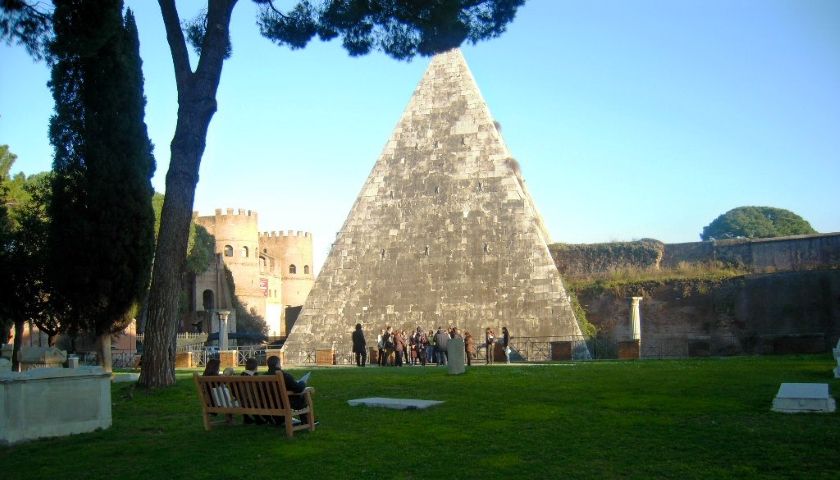
Erected as a tomb monument for Caius Cestius, the Pyramid of Cestius is definitely one of Rome’s more unusual sights. This monument was part of a larger movement in Rome to copy Egyptian design and architecture. The 120-foot-tall pyramid was constructed in the first century BCE from concrete, brick, travertine, and marble blocks. The pyramid was even incorporated into the Aurelian Walls of Rome. The interior of the structure housed a burial chamber, which was once lined with fresco paintings and other treasures that no longer exist. Later excavations in the 17th century revealed pieces of columns, marble bases, and inscriptions about Cestius.
104. Quartiere Coppedé
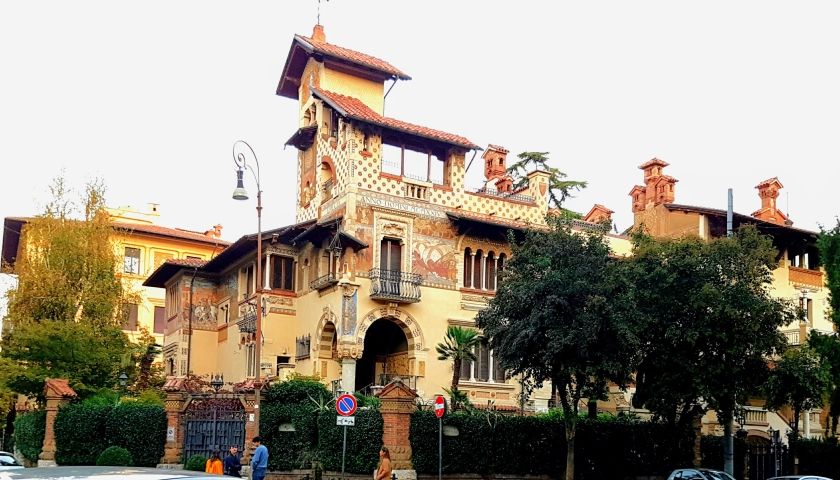
Located in the Trieste district of Northern Rome, Quartiere Coppedé is a unique little neighborhood that was designed by architect Gino Coppedè in the 1920s. The eclectic variety of architectural and design features such as the Art Deco style make for a charming neighborhood along Via Tagliamento and Via Dora and the Piazza Mincio featuring the Fountain of the Frogs (Fontana delle Rane).
105. Quirinal Palace (Italian: Palazzo del Quirinale)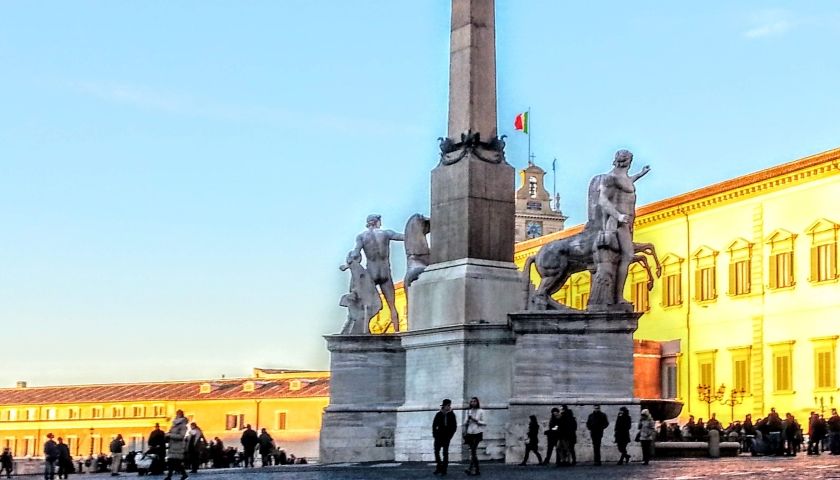
This historically significant palace is located on Rome's tallest of the seven hills, Quirinal Hill. Situated on the Piazza del Quirinale, the Quirinal Palace was commissioned by Pope Gregory XIII in the 1580s to serve as a papal residence perched above the city on Rome's most coveted hill. This palace has housed multiple popes, and after the unification of Italy in 1870 it became the official royal residence for the country. It also served as the presidential palace housing Italy's current president ever since. The building features designs by various architects during the evolution of its construction. Today, visitors can enjoy the palace gardens.
106. Roman Forum (Italian: Foro Romano)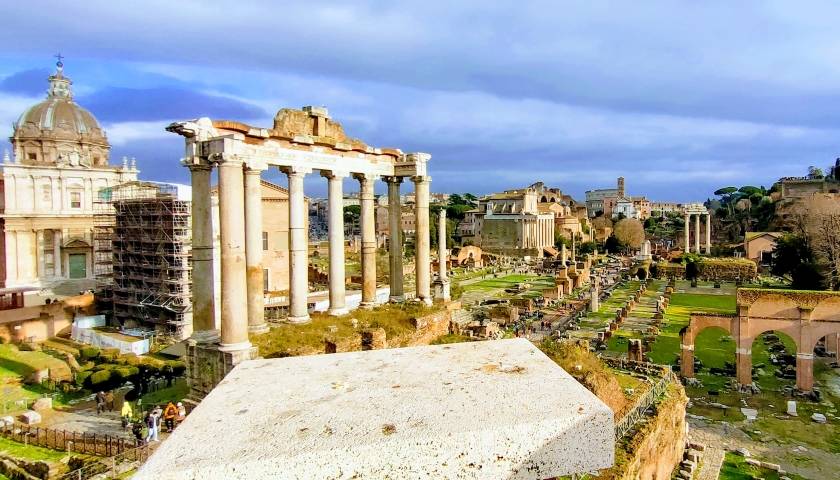
The Roman Forum was the city's original central public gathering place, a true hub for the economic, political, and social activity of the city. The rectangular piazza is located in the valley that lies between Rome's Capitoline Hill and Palatine Hill. Before the Forum was built up it was a marshy swamp land that was converted into an ancient sewer system as early as the seventh century BCE. It was then used as an open marketplace for the residents of the area. Because of its central location and popular place for gathering, the Forum area soon saw construction of temples and housing and later buildings dedicated to the senate and businesses. Today, a number of the buildings in part have survived and the remaining ruins are one of Rome's most popular attractions since the Forum is one of the oldest parts of the city. Visitors can stroll among the preserved columns, arches, and steps and imagine what ancient Rome may have been like.
107. Roman Insula Apartments (Italian: Insula dell'Ara Coeli)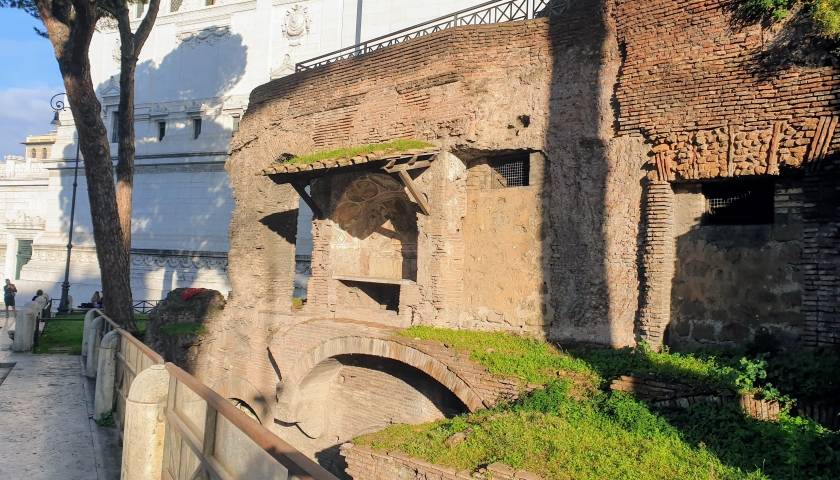
Located adjacent to the steps of Aracoeli Basilica is one of the remaining examples of early Roman apartment blocks. The ruins of the Roman Insula Apartments (Insula Romana) feature a crumbling building that was once used as an apartment building, which was a popular form of housing for the middle and lower classes of early Rome. These "insula" buildings generally had businesses on the ground floor and these ruins reveal about six stories of the structure.
108. Saint Ignatius of Loyola at Campus Martius (Italian: Sant'Ignazio di Loyola a Campo Marzio) 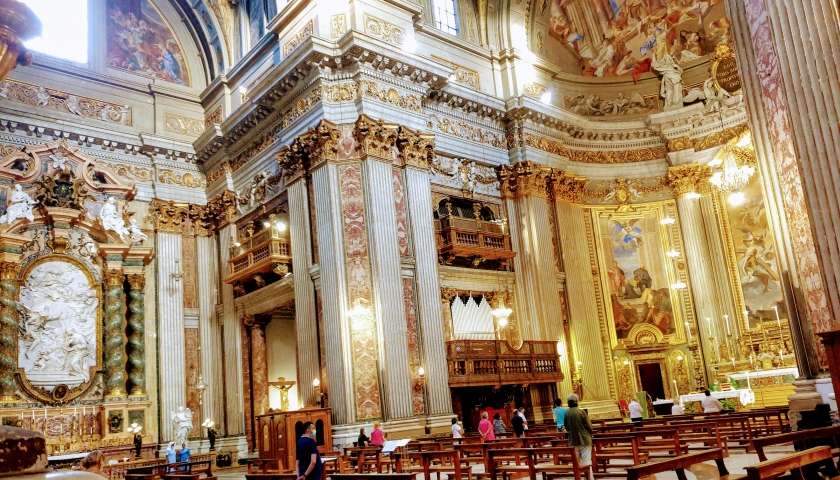
Dedicated to Ignatius of Loyola who was the founder of the Jesuits, the church of Saint Ignatius of Loyola at Campus Martius was commissioned by Cardinal Ludovici Ludovisi and built between 1626 and 1650. Originally, it was built to serve as the church to the then-adjacent Collegio Romano, which was later moved to another location. The church was designed in the Baroque architectural style. The most notable feature of this church are the acclaimed frescoes of Andrea Pozzo. Though the church has a barrel vault shaped ceiling, Pozzo created a trompe l'oeil fresco that spans the nave ceiling and gives the effect of a vaulted cupola ceiling open to the sky above. There is also a trompe l'oeil painting that gives the illusion of a domed ceiling. Visitors can look for markers of where to stand within the church to get the full effect of the masterful artwork adorning the ceiling.
109. San Crisogono
Dedicated to the martyred Saint Chrysogonus, the Church of San Crisogono is located within the Trastevere district of Rome. Although an earlier church existed at this location dating back to as early as the fourth century, this church was constructed during the 12th century along with the bell tower. Baroque touches, including the facade, were added later during the 17th century. Visitors can tour the older structures located underground including remnants of ancient Roman houses.
110. San Francesco a Ripa
Originally, the Benedictine monastery had a church at this location that was dedicated to St. Blaise dating back to the 12th century. The church was known to accommodate traveling pilgrims. Because it is believed that St. Francis of Assisi stayed here during his travels, the present-day church is dedicated to his honor. The current structure was built in the 17th century with the facade designed by Mattia de Rossi. The interior is best known for housing the sculpture Santa Teresa in Ecstasis depicting a reclining Blessed Ludovica Albertoni, considered a masterpiece by Bernini.
111. Sant'Angelo in Pescheria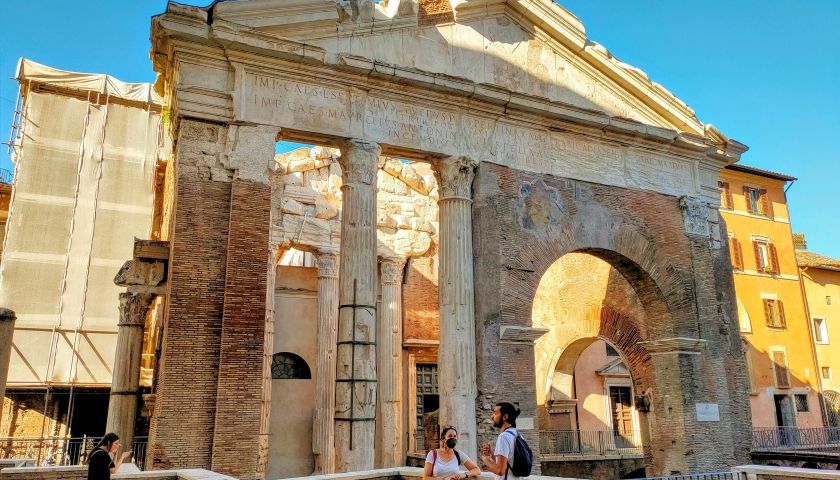
The church of Sant'Angelo in Pescheria was built in the year 755 atop the ancient ruins of the Portico of Octavia (Portico di Ottavia). The church gets its name of in Pescheria since this was also the site of a booming fish market during the 12th century. The structure of the church was redone during different periods within both the 15th and 16th centuries. The church features frescoes painted by Benozzo Gozzoli, most notably the Madonna with Child and Angels.
112. Santa Cecilia in Trastevere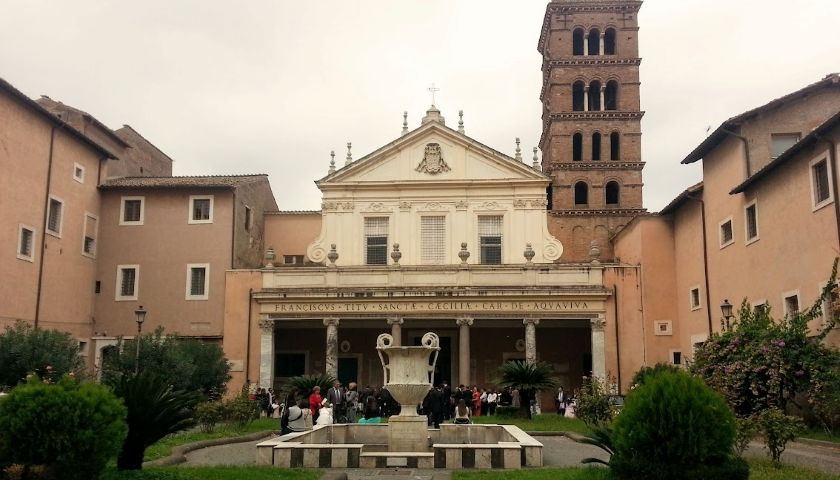
Dedicated to the third-century martyr St. Cecilia, there has been a church at this site since at least the third century. Santa Cecilia in Trastevere is thought to have been built on the site of St. Cecilia's home and the church has been rebuilt numerous times first in the ninth century by Pope Paschal I and then again in the 18th century with the addition of the facade that is visible today along with the restored interior. St. Cecilia is the patron saint of music and was persecuted for her devout Christian beliefs and was forever remembered for singing to God as she was murdered. Visitors can tour the remains of her ancient Roman home underneath the church and there is a notable statue located within the church depicting how her body was found at the time of 16th-century excavations. Notable characteristics of this church include the facade with its courtyard featuring mosaics and columns along with the 13th-century The Last Judgment fresco by Pietro Cavallini in the interior.
113. Santa Francesca Romana 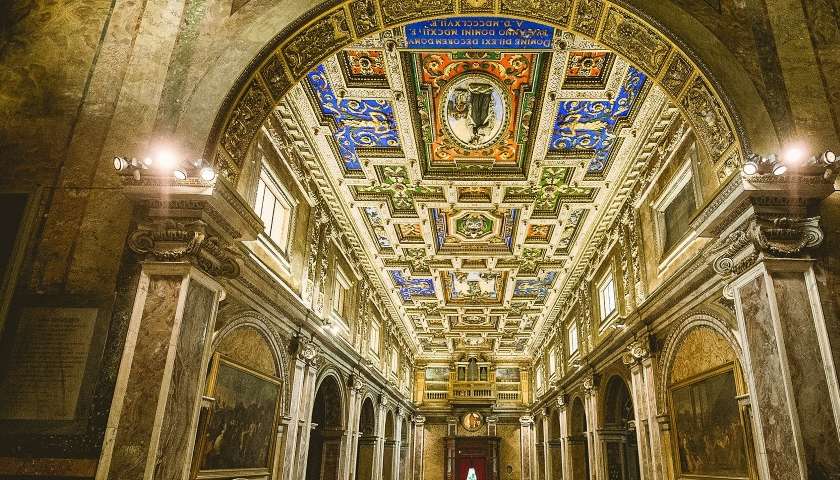
Previously referred to as Santa Maria Nova, Santa Francesca Romana is a church located adjacent to the Roman Forum and built over the ruins of Hadrian's Temple of Venus and Rome. The titular minor basilica was originally built by Pope Paul I in the 8th century dedicated to St. Peter and St. Paul, but was later damaged and abandoned. The current structure incorporated the original oratory during a new construction in the 10th century and it was added to and reconstructed many times in the 12th and 13th centuries. The Lombardi designed facade was added in the 17th century. The interior features a Baroque design with wooden coffered ceilings. Visitors can tour the crypt where the remains and relics of St. Frances are kept. The church is also home to the tomb of Pope Gregory XI.
114. Santa Maria in Vallicella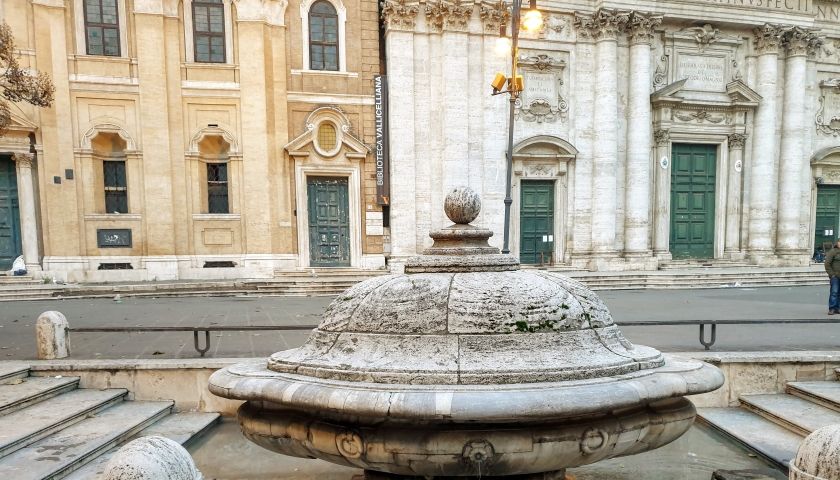
The first church built at this site dates back to the sixth century, but it's most revered as the church that was built for St. Philip Neri in the 16th century. This "new church" (Chiesa Nuova) for Santa Maria in Vallicella was built in the Roman Baroque architectural style to serve as the congregation of secular priests known as the church of Oratorians as founded by Neri. With the blessing of Pope Gregory XIII, the new church's construction began in 1575 and the final facade was finished in 1605. The interior of the church is full of masterpiece artwork adorning the altarpieces, ceilings, and the walls of the nave and transept.
115. Servian Walls (Italian: Mura Serviane) 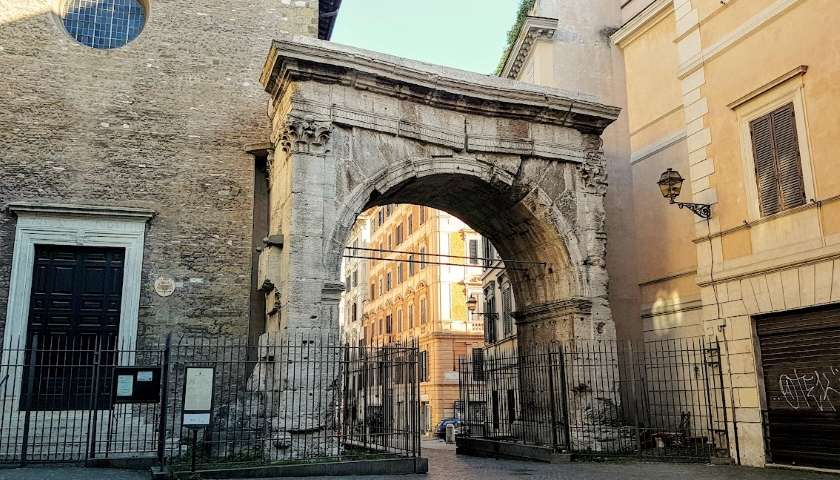
Though the Servian Walls only exist today in mere fragments and scattered ruins, these walls once surrounded ancient Rome and stretched over 11 kilometers in length. The walls were constructed in the fourth century BCE and named after Rome's sixth King, Servius Tullius. The walls served as a defense mechanism to the city during the Roman Republic era, but with the rise in military strength and the expansion of the city, the walls were eventually no longer necessary. Today, only a few remaining stretches and pieces of the original Servian Walls remain with the best preserved example located near the Esquiline Hill.
116. Sistine Chapel (Italian: Cappella Sistina)
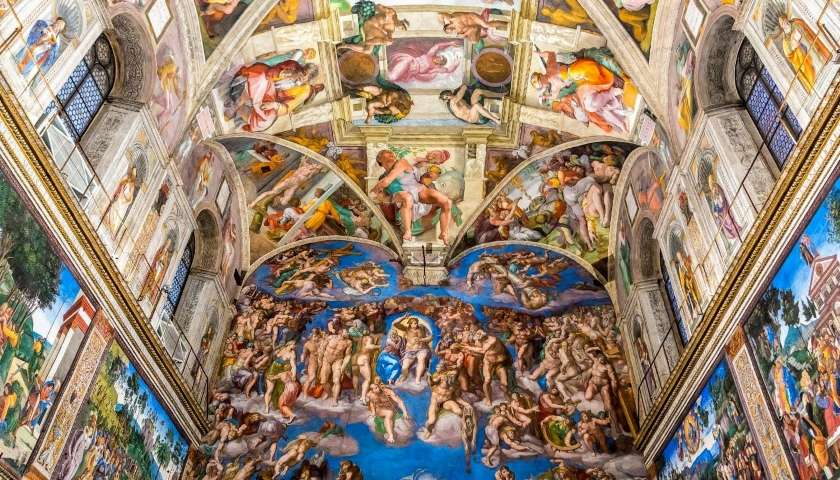
Revered as one of Rome's most beautiful attractions, the Sistine Chapel is located within the Vatican and features the famed ceiling frescoes painted by the legendary Michelangelo. Designed as the pope's chapel, this structure was commissioned by Pope Sixtus IV in 1475 and consecrated in 1483 dedicated to Our Lady of the Assumption. The interior space was flanked with frescoes from renowned Renaissance painters including Botticelli, Rosselli, Perugino, and Ghirlandaio. Although the chapel's ceiling was originally painted with other frescoes and designs, it was Pope Julius II della Rovere who commissioned Michelangelo to repaint the ceiling in 1508 and he spent years crouched upon scaffolding to create what became one of his most famous works of art. The famed ceiling features the 12 apostles and the notable piece The Last Judgment, which was finally completed in 1541. Today, the extensive collection of art housed within the chapel has been cleaned and restored providing visitors with the ability to view the masterpieces in their original glory.
117. Spada Gallery (Italian: Galleria Spada) 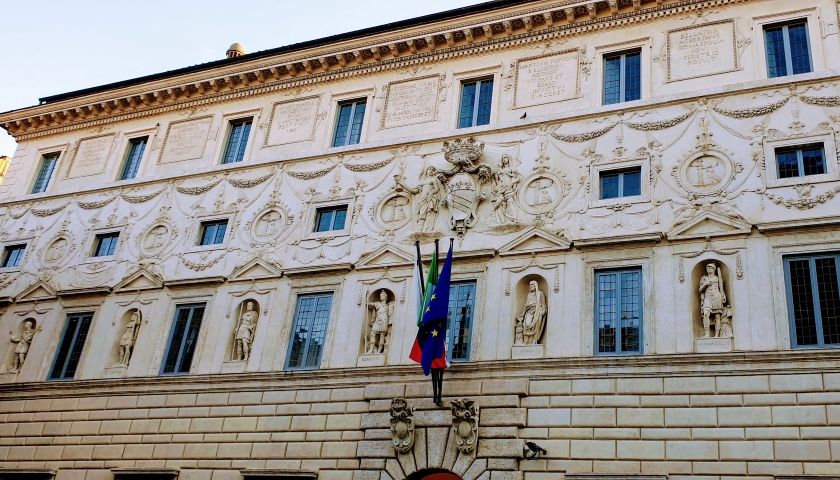
Housed within the 16th-century Palazzo Spada, the Spada Gallery features the personal collection of Cardinal Bernardino Spada who resided in the palace during the 17th century. The Spada family famously collected art throughout the years and the collection that amassed spans four gallery rooms. The gallery features masterpiece works from artists such as Caravaggio, Brueghel the Elder, Rubens, Titian, and Guercino.
118. Spanish Steps (Italian: Piazza di Spagna)

The picturesque Spanish Steps are one of Rome's most visited and favorite attractions. The 138 steps scale the sloping hill that connects the French church of Trinità dei Monti with the Spanish Square below. The steps were built in 1725 by architects Francesco de Sanctis and Alessandro Specchi, but the idea of the steps was formed much earlier by the French King Louis XIV. Other notable features of the Piazza di Spagna include the Fontana della Barcaccia, which is a fountain depicting a small boat designed by Bernini; the obelisk that Pope Pius VI moved here in 1788; and the column of the Immaculate conception.
119. St. Agnes in Agone (Italian: Santa Agnese in Agone)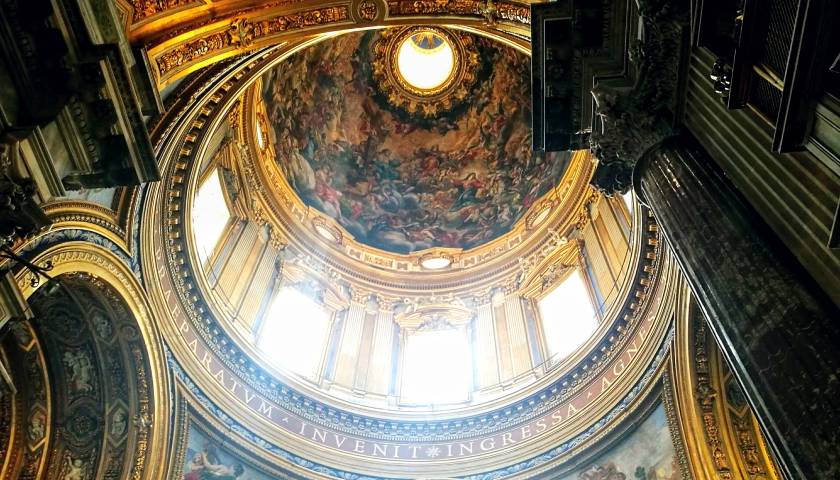
Facing the Piazza Navona, St. Agnes in Agone is a striking 17th-century church built in the Baroque architectural style. The present-day church sits on the site of previous churches and worshiping places for St. Agnes, who was martyred at this location. Pope Innocent X commissioned the work of this new church to serve as their family's chapel, which sat directly next to his family palace, Palazzo Pamphili. The famed facade was begun by Rainaldi and later finished by Borromini. The exterior features grand elements such as the twin bell towers and a detailed marble facade. The interior space follows the Greek cross plan with a soaring dome flanked by red marble columns and plenty of detailed marble sculptures and frescoes.
120. St. Agnes Outside the Walls (Italian: Santa Agnese fuori le Mura)
St. Agnes Outside the Walls is dedicated to Saint Agnes, whose remains are located under the high altar where visitors can enter the catacomb of St. Agnes. The present day church dates back to the seventh century and was built by Pope Honorius I, however the mausoleum to St. Agnes area dates back to the fourth century when Costanza commissioned the construction. Visitors will notice that the church sits at the same level of the catacomb floor so that the public must enter the structure via the second floor gallery. Once inside, the church follows a basilica style plan with marble columns, Byzantine mosaics, a Baroque canopy at the high altar, and of course the entrance to the catacombs.
121. St. Andrew's at the Quirinal (Italian: Sant'Andrea al Quirinale)
Considered one of Bernini's best examples of Baroque architecture, St. Andrew's at the Quirinal church was built for the Jesuits and is location on the Quirinal Hill. The church's construction took place between 1658 and 1671 and was the third Jesuit church in Rome, a religious order founded in 1540. Notable features of this church include its rich pink marble and gold leaf decor inside with the exterior facade facing the Via del Quirinale and featuring two columns supporting the semi-circular portico. The altarpiece sculpture of St. Andrew's Martyrdom was created by Il Borgnone along with frescoes and paintings by Mazzanti and Chiari.
122. St. Andrew's in the Valley (Italian: Sant'Andrea della Valle)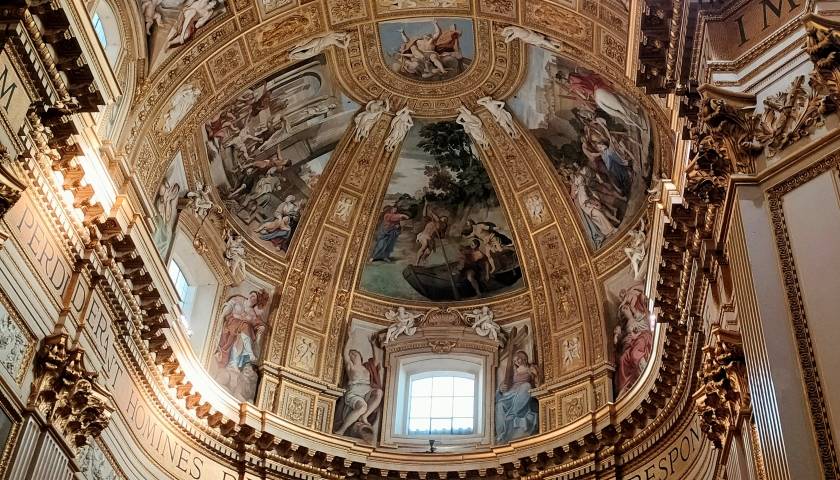
Showcasing one of Rome's largest domes, St. Andrew's in the Valley church serves as the seat for the Theatines religious order. The church is dedicated to St. Andrew the Apostle and was commissioned when the duchess of Amalfi (who was a descendant of Pope Pius II) bestowed her family palace and church in Rome to the Theatines once she retired to Naples. Construction on the church started in 1590 and was not complete until 1650. The Baroque church was also used as the setting of Puccini's Tosca Opera. Featuring a Baroque facade with design contributions from Maderno, Rainaldi, and Fontana, the church's interior is complete with a soaring dome, lavishly painted ceilings, and ornate gold leaf decor and carvings.
123. St. Charles at the Four Fountains (Italian: San Carlo alle Quattro Fontane)
Dedicated to St. Charles Borromeus, this church was one of Francesco Borromini's first architectural commissions for Spanish monks and is located on Rome's Quirinal Hill. Consecrated in 1646, St. Charles at the Four Fountains (San Carlo alle Quattro Fontane) was designed in the Baroque architectural style and is named after the four fountains found in the intersection fronting the church. The church is also known for its small scale design inspired by St. Peter's Basilica, and often Romans dub the church San Carlino for its petite proportions. Its facade is made from travertine and features an undulating concave and convex design.
124. St. John of the Florentines (Italian: San Giovanni dei Fiorentini)
This church was built in the 16th century to accommodate the flourishing Florentine population of Rome. St. John of the Florentines (San Giovanni dei Fiorentini) is dedicated to the patron saint of Florence, St. John the Baptist. The structure is located within the Ponte Sant' Angelo district of Rome and houses notable Baroque artwork and sculptures in its interior. Interestingly, the construction of this church started out as a competition. Pope Leo X designed a contest for the design of the church and competitors included some of the era's best architects including Raphael. Jacopo Sansovino ultimately won the competition, but Antonio da Sangallo the Younger ended up proceeding with the project's designs. Michelangelo even submitted designs, but they were never adopted. It was eventually during the end of the 16th century that construction began with the architect Giacomo della Porta and later Carlo Maderno in the 17th century. The facade was added by Alessandro Galilei later in the 18th century.
125. St. Louis of the French (Italian: San Luigi dei Francesi) 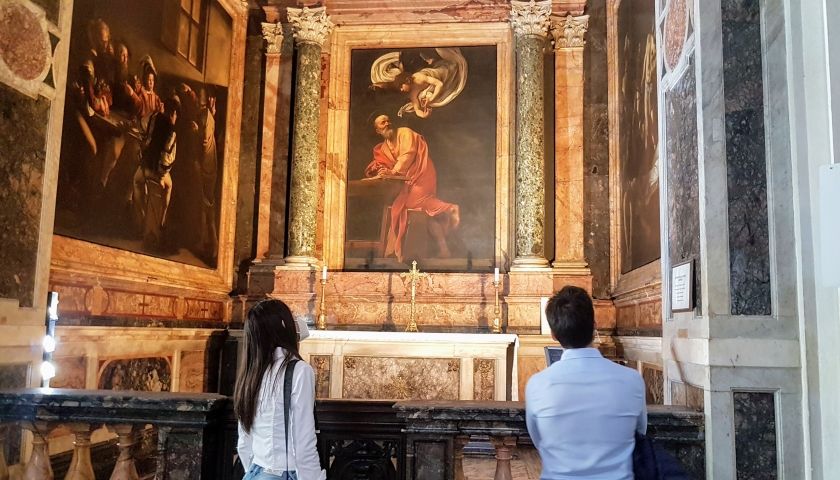
This church serves as the national church of France in Rome and is dedicated to St. Louis IX, King of France. Located just a couple of blocks from the popular Piazza Navona, the Church of St. Louis of the French was commissioned in 1518 by Cardinal Giulio de' Medici (later known as Pope Clement VII) to serve as the church for the growing French community of Rome. Notable features here include the travertine marble facade featuring statues and decor motifs acknowledging French royalty. The interior space of the church is best known for housing three of Caravaggio's masterpiece paintings.
126. St. Mark The Evangelist (Italian: San Marco Evangelista al Campidoglio)
Dedicated to St. Mark the Evangelist, the patron saint of Venice, this church dates back to 336 when it was originally built by Pope Mark. The church is located on the Piazza di San Marco next to the larger Piazza Venezia. The structure was renovated and rebuilt a number of times, most significantly by Pope Adrian I in 792, then in 833 by Pope Gregory IV, and again in 1465 by Pope Paul II. The bell tower was added in the 12th century and the final Baroque touches were added in the 17th and 18th centuries. During the 15th century renovations, the church became the cathedral church of the Roman Catholic Archdiocese of Venice to serve the growing Venetian community within Rome. The exterior features a Renaissance-style facade while the interior is comprised of a basilican plan. Images of Venice's symbolic lion can be found in the decor and the relics of the church's founder Pope St. Marcus (Mark) can are located under the high altar.
127. St. Mary of the People (Italian: Santa Maria del Popolo)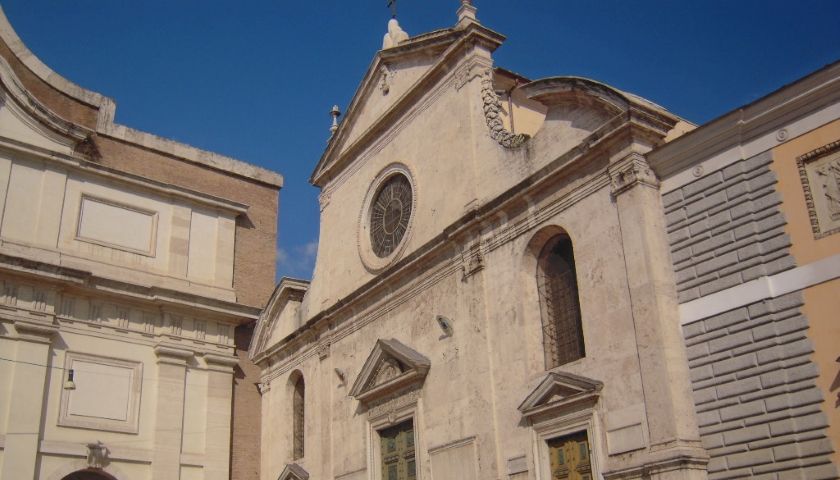
St. Mary of the People is a historic church located on the northern end of the Piazza del Popolo. The church's origins began in 1099 when Pope Paschal II constructed a chapel to the Madonna. By the 13th century, the chapel was given to the Augustinians and the church was rebuilt in the 15th century in the Italian Renaissance architectural style with an updated Baroque facade added in the 17th century. The interior is best known for its masterpiece artwork including paintings by Caravaggio found in the Cerasi Chapel, sculptures by Raphael and Bernini in the Chigi Chapel, stained glass windows by French artist Guillaume de Marcillat, and the apse was designed by Bramante for Pope Julius II.
129. St. Peter in Chains (Italian:San Pietro in Vincoli)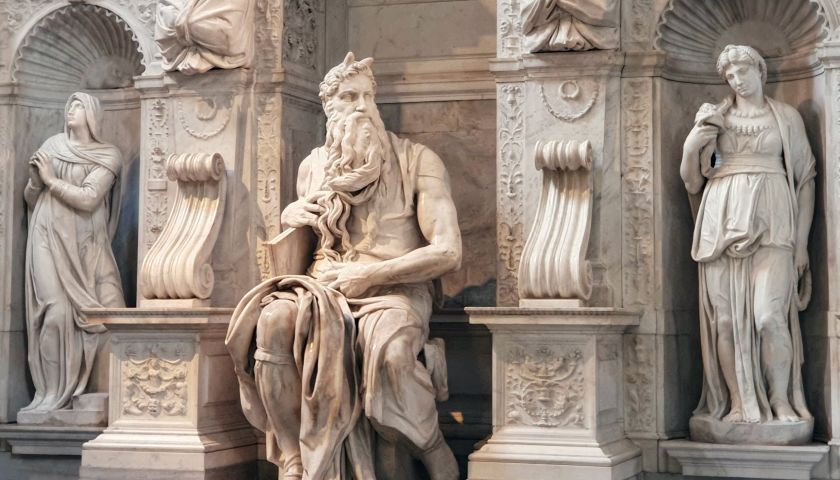
This church is best known for two of its most prized pieces found in the interior: the chains that were used to bind St. Peter during his imprisonment in Jerusalem, as well as the impressive Michelangelo statue of Moses from the 16th century. This minor basilica known as San Pietro in Vincoli was first built in the 5th century for the purpose of housing the historic chains, which remain on display to visitors through a glass box. Tradition states that the chains were gifted to Pope Leo I from Emperor Valentinian III's wife, Empress Eudoxia and that while holding the chains, the Pope watched them fuse together, which became a legendary miracle. Michelangelo's masterpiece statue of Moses was originally intended to be used at the tomb of Pope Julius II along with over 40 other statues, but this project never came to fruition. The interior also features important paintings by Guercino, a significant mosaic of Saint Sebastian from the seventh century, as well as the tombs of Cinzio Passeri Aldobrandini, and the Florentine artist Antonio Pollaiuolo.
130. St. Peter's Basilica (Italian: Basilica di San Pietro) 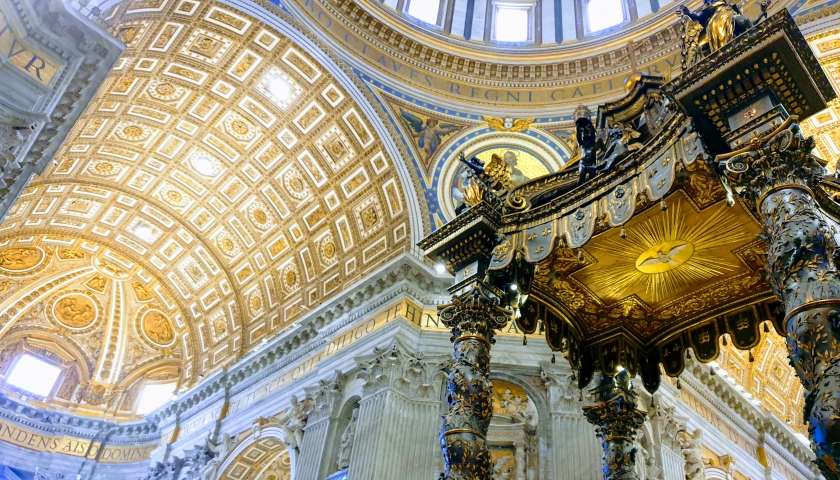
Certainly one of Rome's most popular tourist attractions, St. Peter's Basilica is the heart of Vatican City and one of the most significant sites of the Catholic Church. Fronted by the magnificent St. Peter's Square, this monumental basilica stands at the site of St. Peter's crucifixion and burial. The church was originally constructed under Constantine in the fourth century, but later transformed into the Renaissance masterpiece that can be seen today during the 16th century with designs from such masters as Michelangelo, Bernini, and Bramante. The spacious structure was once considered the largest church in the world and continues to be one of the most visited. Michelangelo's soaring dome wasn't fully completed by the time of his death but continues to be an architectural feat. The massive interior is extremely impressive in its scope, size, and decor. It houses the famous Pietà sculpture by Michelangelo and Bernini's baldacchino canopy structure over the papal alter.
131. St. Peter's in Montorio (Italian: San Pietro in Montorio) 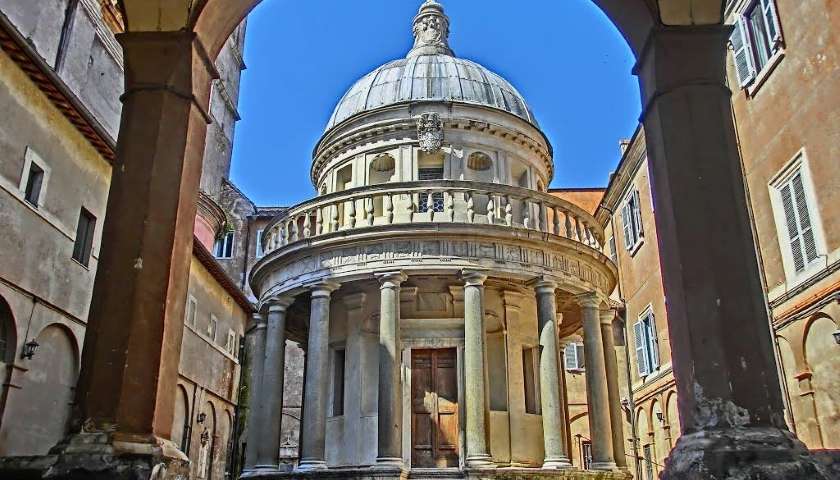
Perched on the Janiculum Hill above the Trastevere district, St. Peter's in Montorio is a Roman church dedicated to St. Peter. This site originally featured another church dedicated to St. Peter constructed in the 9th century as tradition stated that this was the site of St. Peter's martyrdom. The property fell into the hands of the Franciscan Order in the 15th century when the King and Queen of Spain commissioned the construction of the new church here, designed by Baccio Pontelli and Meo del Caprina. One of the church's more striking features is the Tempietto structure in the courtyard designed by Donato Bramante in the early 16th century. The interior features several art pieces from the 16th and 17th centuries.
132. St. Peter's Square (Italian: Piazza San Pietro)
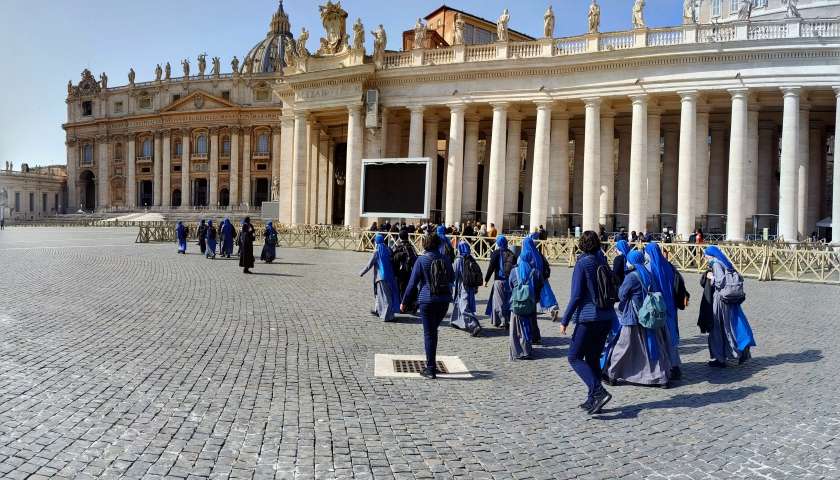
St. Peter's Square is the famous piazza fronting St. Peter's Basilica in the heart of Vatican City. The iconic piazza hosts millions of tourists every year who flock to Rome to tour the basilica and to sneak a peek at the Pope during the Sunday blessings that take place in this square. The spacious design was the masterpiece design of Gian Lorenzo Bernini from the guidance of Pope Alexander VII and Pope Clement IX between 1656 and 1667. The elliptical-shaped square is flanked by 284 Doric-style columns, 88 travertine marble pilasters, and 140 statues. An ancient Egyptian obelisk stands at the center of the monumental piazza.
133. St. Sebastian Outside the Walls (Italian: San Sebastiano fuori le Mura)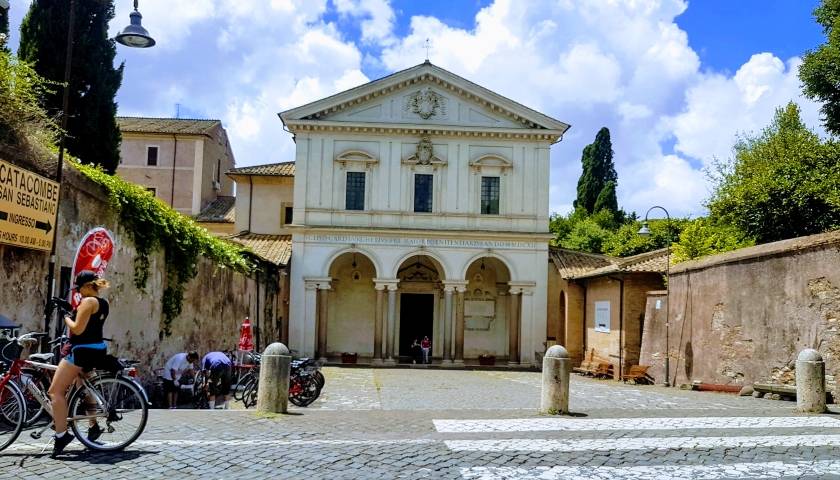
St. Sebastian outside the Walls was one of the Seven Pilgrim Churches of Rome, up until the Pope replaced it with Santuario della Madonna del Divino Amore for the Great Jubilee of 2000. Built at the site of one of the catacombs, the original 4th century basilica was rededicated in the 9th century to the martyr, Saint Sebastian, who was buried there. The last major reconstruction of the church's interior was started by Flaminio Ponzio in 1608, but several features have been added since, including the chapel situated above the tomb of St. Sebastian, which came later in the 17th century, and the wooden ceiling, which dates from the 18th.
134. St. Sebastian's Gate (Italian: Porta San Sebastiano)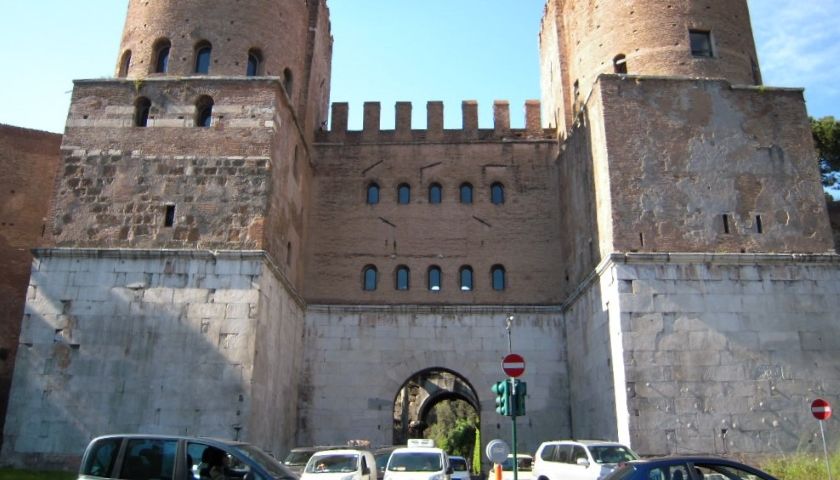
St. Sebastian's Gate is one of the best-preserved remaining gates that was originally part of Rome's Aurelian Walls. The wall was first constructed in the third century as a point of defense for the city and was later rebuilt and added on to in later centuries. The gate was originally called Porta Appia, but later renamed after the catacombs found nearby. A single archway still allows traffic to pass through and the marble and brick structure remains in good condition thanks to its preservation and restoration. The interior boasts a museum dedicated to the ancient Roman walls and gates.
135. St. Sylvester in Capite (Italian: San Silvestro in Capite)
This Roman Catholic minor basilica is best known as housing the head of St. John the Baptist as its most prominent relic. The church of St. Sylvester in Capite is named after and dedicated to Pope Saint Sylvester I and was first constructed in the eighth century for the purpose of housing the bones from the catacombs. The structure was rebuilt at the end of the 12th century with the addition of the bell tower and then later again redesigned in the current style in at the end of the 16th century. The relics of Pope St. Sylvester, Pope St. Stephen I, and Pope St. Dionysius are housed within this church. Its interior features a number of acclaimed paintings and frescoes as well as many design elements that are thought to have been influenced by Michelangelo. The church currently retains the role as the National Church of Great Britain.
136. St. Yves at La Sapienza (Italian: Sant'Ivo alla Sapienza)
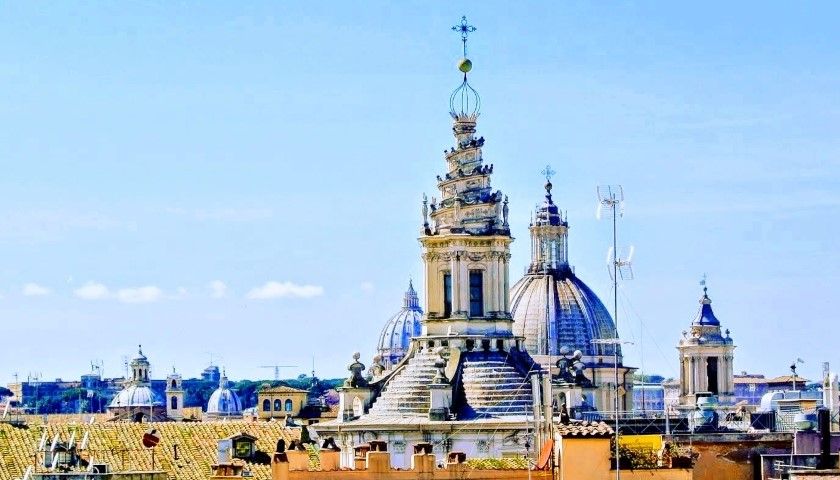
Constructed in the mid-17th century, St. Yves at La Sapienza is widely considered architect Francesco Borromini's Baroque masterpiece. The most recognizable characteristic of this church is its spiraling oval dome. Previous to its construction, there was a 14th century chapel for the University of Rome at this site. Dedicated to the Patron Saint of the jurists, St. Yves, this church features notable Baroque architectural elements and an interior altarpiece depicting St. Yves designed by Pietro da Cortona.
137. Stadium of the Marbles (Italian: Stadio dei Marmi)
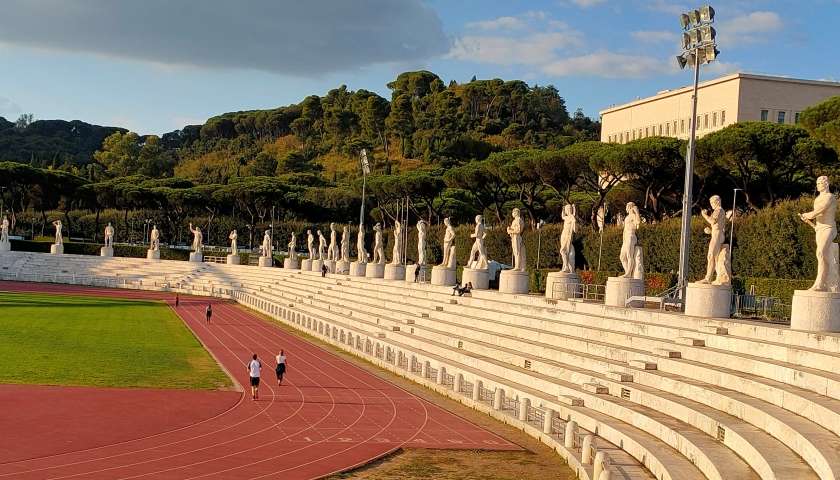
Located northwest of Rome's city center in the Foro Italico, the Stadium of Marbles is a stunning sports stadium flanked with 60 white marble statues. The stadium is part of a larger sports complex that includes the Olympic stadium. The outdoor Stadium of the Marbles was designed by Enrico Del Debbio in the 1920s and opened in 1932. The surrounding statues portray Italian athletes from Italy's different provinces.
138. Temple of Hercules Victor (Italian: Tempio di Ercole Vincitore)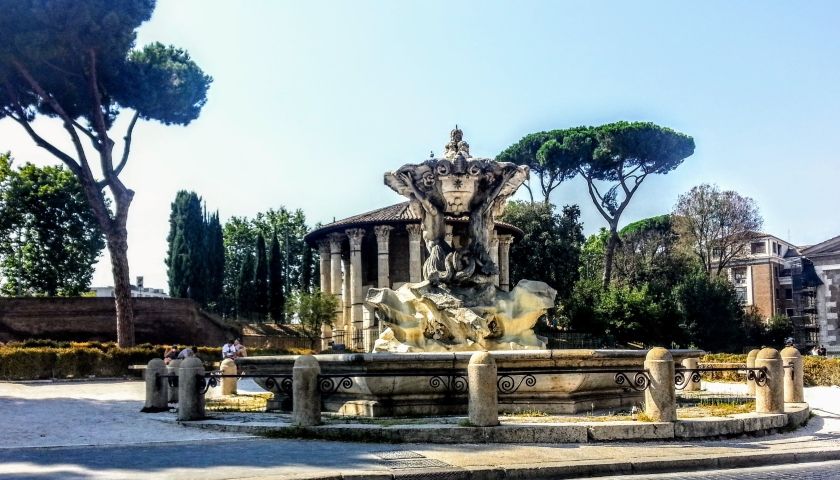
Remarkably, this structure has survived with the majority of its structure intact since its construction at the end of the second century BCE. The Temple of Hercules Victor is located at the Forum Boarium and features 20 columns that form a circular colonnade around the temple, in what's called a Corinthian monopteros. Devoted to Hercules, this temple is made from marble and travertine. Though the temple has been restored, it is considered one of the most well-preserved of its kind in Rome.
139. Temple of Portunus (Italian:Tempio di Portuno)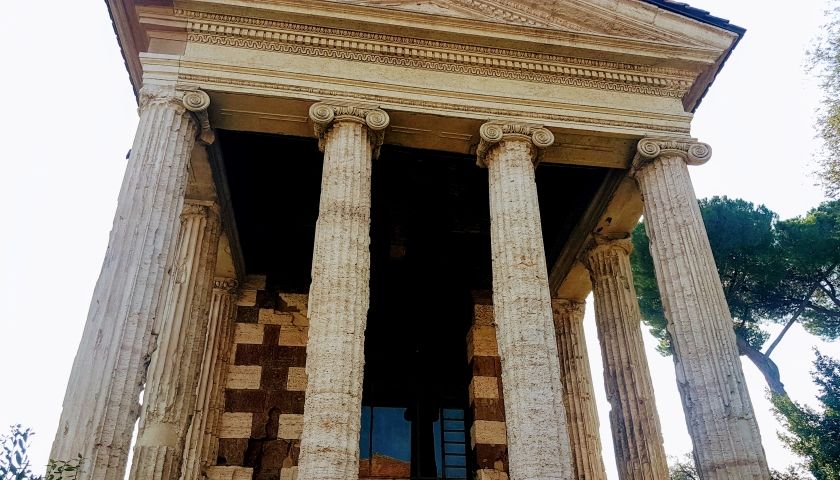
Located within the ancient Forum of Boarium, the Temple of Portunus dates back to the first century BCE when it was constructed overlooking the Tiber River as the god Portunus was the protector of harbors. The temple features a rectangular shape and a series of Ionian columns as well as a portico on the front of the building. The temple is distinct as being so well preserved and survived the centuries due to its conversion into a Christian church after the fall of the Roman Empire.
140. Testaccio
Testaccio is considered the 20th rione, or district, of Rome. Located along the banks of the Tiber River in Rome, this neighborhood was named after Monte Testaccio, which is a hill comprised entirely of antique clay pottery and figures, known as amphorae or testae, which were tossed aside during the Roman Empire and formed into this curious mound. Today, the neighborhood is most known for its abundance of Roman restaurants and bustling food market. Notable attractions found within Testaccio include the Pyramid of Gaius Cestius and the Non-Catholic Cemetery for Foreigners (Protestant Cemetery).
141. Three Fountains Abbey (Italian: Abbazia delle Tre Fontane) 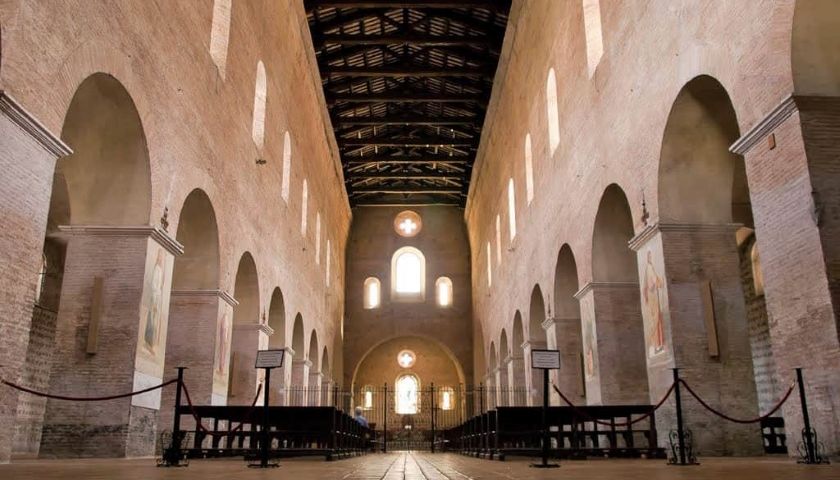
According to Christian tradition, during the martyrdom of St. Paul during the first century, he was decapitated and his head bounced in three places where springs miraculously arose. The Three Fountains Abbey is located at this historic place, which is near the modern suburban Roman district known as the EUR. The complex is home to three churches: San Paolo alle Tre Fontane, Santi Vincenzo e Anastasio, and Santa Maria Scala Coeli. Today, the Abbey serves the Trappist Fathers of the Cistercian Order within the Roman Catholic Church. The Trappist monks are known for their wool production from lambs raised on the property, as well as liquor processed from local eucalyptus, and chocolate. The monastery is located within a tranquil setting amongst eucalyptus trees.
142. Tiber Island (Italian: Isola Tiberina) 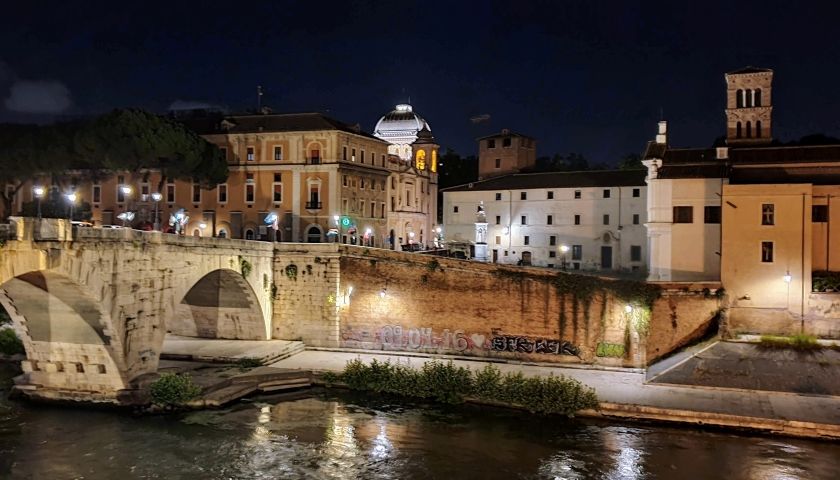
The Tiber Island is an island in the middle of the southern bend in the Tiber River in the heart of Rome. It's connected to each bank by the Ponte Fabricio and the Ponte Cestio bridges. The island is home to the historic San Bartolomeo church and also housed the Temple of Aesculapius, which was constructed in ancient time as a temple to honor the god of medicine and healing after Rome was hit by a damaging plague. Today, the boat-shaped island is home to a modern hospital and the renovated San Bartolomeo, which was built over the ruins of the Temple of Aesculapius.
143. Tivoli
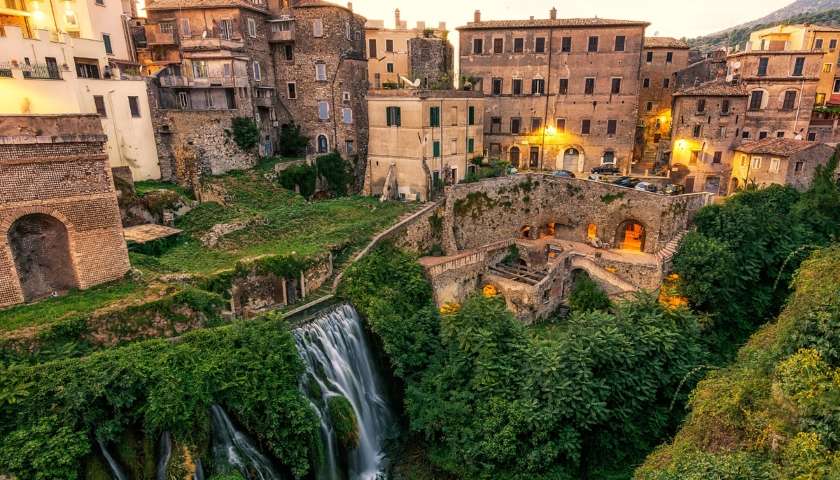
This ancient Italian town is located 20km outside of Rome at the falls of the Aniene River in the region of Lazio. Historical traces of original settlement in the area suggest it began as a colony of Alba Longa in the 13th century BC. The town was originally called Tibur. Over time that morphed into Tivoli, although the inhabitants are still called Tiburtini. The modern town of about 50,000 still offers traces of its rich past with remnants of a 4th century BC town wall, and 2nd century BC temples. Popular with Rome's moneyed elite since ancient times as a site for summer retreats, you can still bathe in the natural thermal pools down below the town's center. A trip to the charming town would not be complete without a visit to the beautiful gardens of the Villa d'Este, or to the considerable ruins of Hadrian's Villa.
144. Tomb of Cecilia Metella (Italian: Mausoleo di Cecilia Metella)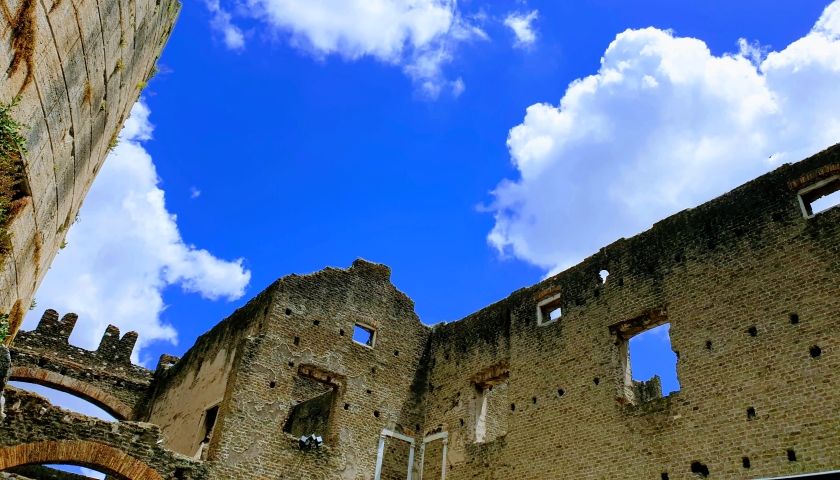
Marked by a cylindrical structure along the Appian Way lies the ancient Tomb of Cecilia Metella. The tomb is located among the other major catacombs of Rome along the Via Appia Antica. Cecilia Metella lived in the first century BCE and was the daughter-in-law to one a Roman consul to Julius Caesar, Triumvir Marcus Licinius Crassus. With the exception of the tower and fortress, which was added in the 14th century, the travertine tomb has stayed mostly intact from its original first-century-BCE construction.
145. Tombs of Via Latina (Italian: Parco delle Tombe di via Latina)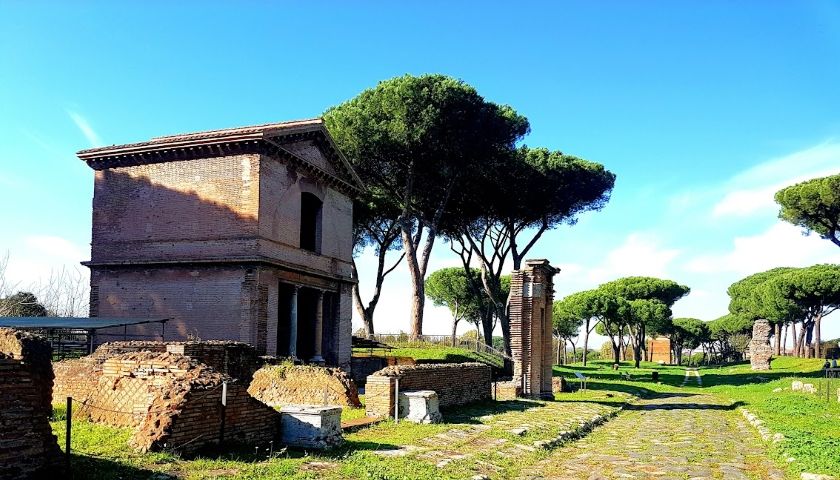
Located along a small stretch of the ancient Via Latina roadway, the Tombs of Via Latina date back to the second century. The well-preserved funeral monuments, tombs, and historic structures were excavated at this site in the 19th century and it has been preserved for visitors at the present-day archaeological park. Among the notable finds here are the Barberini sepulcher where the Barberini sarcophagus was discovered, which is currently on display at the Vatican.
146. Tortoise Fountain (Italian: Fontana delle Tartarughe)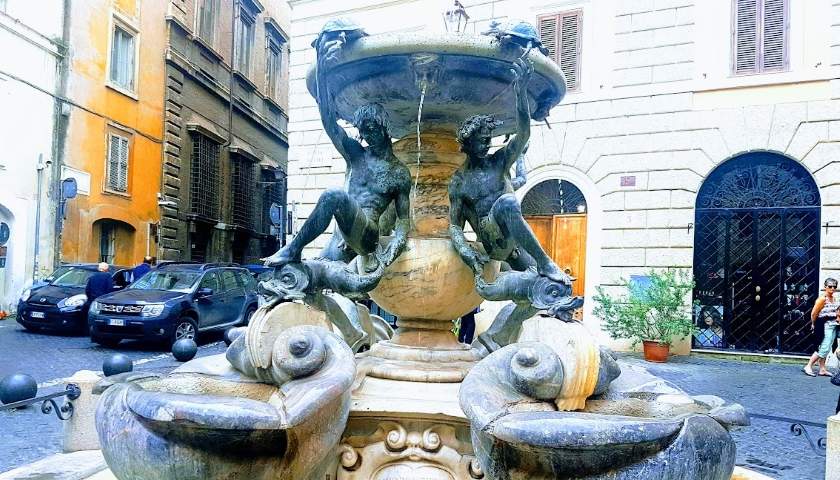
Nestled in the Piazza Mattei, the Tortoise Fountain dates back to the 16th century. Commissioned by the Mattei family, the fountain was designed by Giacomo della Porta and sculpted by Taddeo Landini. It features four boys grasping bronze turtle shells, which are thought to have been added in the mid-17th century. Many art historians argue about the meaning behind the figures and turtle additions to this classic Renaissance fountain.
147. Tower of the Militia (Italian: Torre delle Milizie) 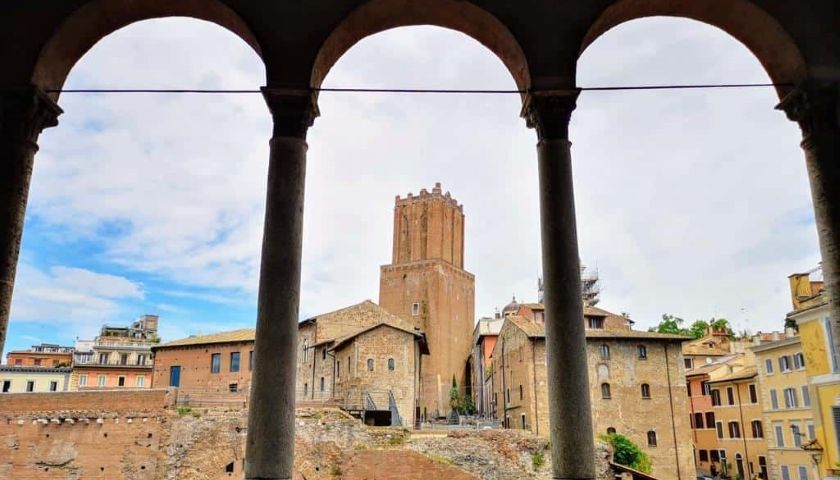
Considered one of the best examples of a medieval monument in Rome, the Tower of the Militia dates back to the 13th century. The tall red-brick tower is located adjacent to Trajan's Market. It is sometimes referred to as Nero's Tower, as it is believed that Emperor Nero watched the Great Fire of Rome during the first century from a tower at this same site. The medieval tower was owned by a number of notable and powerful Roman families. Though the tower suffered damage during an earthquake in the great 1348 earthquake, the tower can still be visited and remains a prominent figure in the Roman skyline.
148. Trajan's Column (Italian: Colonna Traiana)
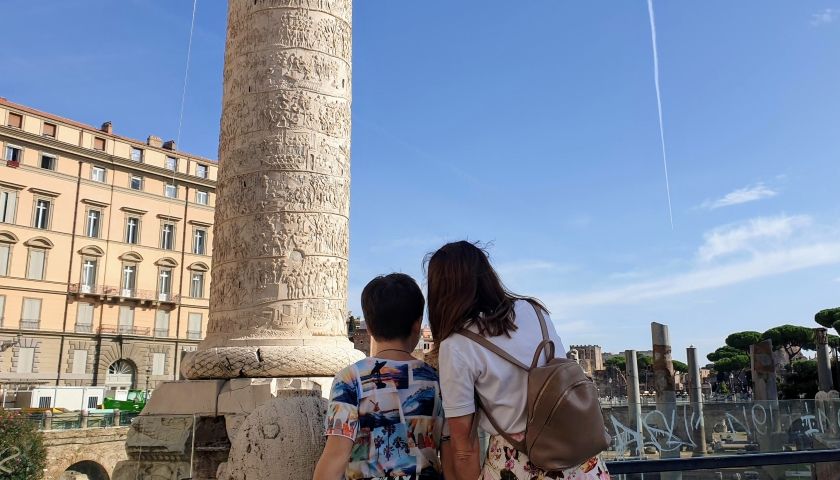
Dating back to the first century, Trajan's Column was erected in honor of the Roman emperor for his victory during the Dacian Wars. Trajan's many battle conquests and war stories are told on the iconic continuous spiral of bas relief depictions. A statue of St. Peter is currently perched atop the column, but it is thought that a statue of Trajan himself once adorned the nearly 100-foot structure. The legendary column stands within the Forum of Trajan, north of the Roman Forum. Its unique scroll of friezes is thought to have inspired other victory columns in Rome.
149. Trajan's Market (Italian: Mercati Traianei) 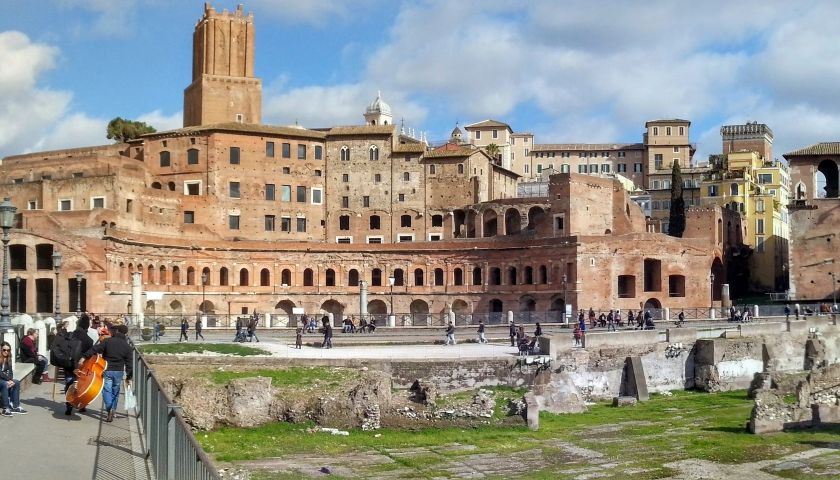
Built in the second century, Trajan's Market is Rome's most ancient marketplace. The expansive complex is comprised of the remaining structures that once housed at least 150 small shops and offices. The ancient complex was the hub for trade in the city and where all of the local merchants had establishments for selling everything from food to goods, an ancient version of a modern-day shopping center. Trajan's Market is located within close proximity of Piazza Venezia and the Roman Forum and in front of the Forum of Trajan.
150. Trastevere
This popular district is full of Roman charm, popular restaurants, and an overall inviting residential appeal. Trastevere literally translates as "beyond the river" and this popular neighborhood is truly located just across the Tiber River from the historical heart of Rome. Traditionally, Trastevere was once a district home to the city's many immigrants dating back to the Republican era, it was also a hub for Rome's Jewish community through the Middle Ages. Today, the charming neighborhood boasts narrow and winding cobblestone streets and a bustling nightlife with plenty winebars and restaurants to choose from. The richly residential area is also known for having many expatriates and American college students as residents. The heart of the district is at the Piazza di Santa Maria in Trastevere.
151. Trevi Fountain (Italian: Fontana di Trevi)
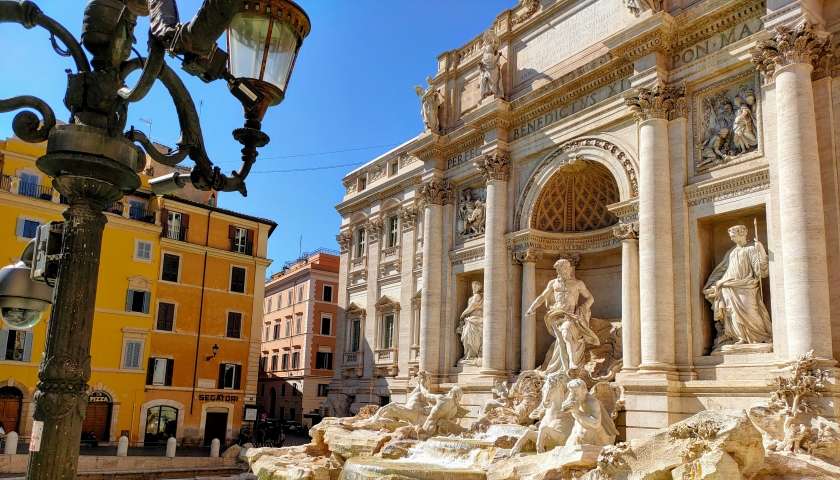
Rome's famed Trevi Fountain is the setting for the long-held tradition of throwing a coin over your left shoulder in order to ensure a return trip to Rome. This iconic fountain is one of the largest and most celebrated in the city. The impressive monument stretches over 85 feet high and 65 feet wide and features a distinct Baroque design. Located at the Piazza di Trevi, this site served as the meeting point of three roads and ending point of three aqueducts. The original fountain was far less stately and was simply a basin to hold the water at the end of the aqueduct in the mid-15th century. By the 17th century, Pope Urban VIII commissioned the work of Bernini to design a more elegant fountain at the site, but the project was discarded. By the 18th century, Pope Clement XII commissioned Nicola Salvi to build the fountain that can be seen today. The colossal fountain was completed by 1762 and features a rich Baroque design with a dramatic depiction of the god of the Sea, Neptune riding a shell-shaped chariot pulled by sea horses who are each guided by Triton. The rich sculptural fountain is certainly considered one of Rome's finest and remains a must-see attraction for visitors around the clock.
152. Triton Fountain (Italian: Fontana del Tritone)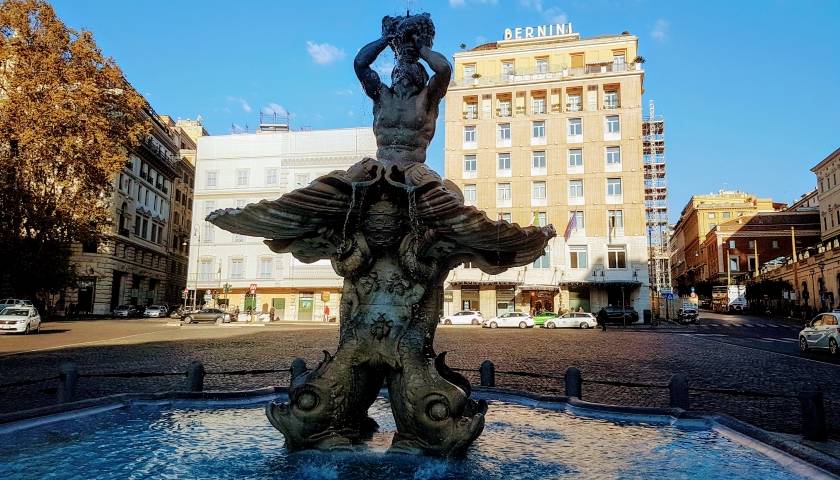
Located at the center of the Piazza Barberini, the Triton Fountain was created by master sculptor Bernini in the 17th century. Pope Urban VIII, born Maffeo Barberini, commissioned the statue for this piazza, which is set in front of his family's residence at the Palazzo Barberini. The travertine sculpture depicts the ancient sea god of Triton emerging from a shell supported by four dolphins. The fountain spurts water from the tip of the conch shell that Triton is holding.
153. University City Museums (Italian: Città Universitaria)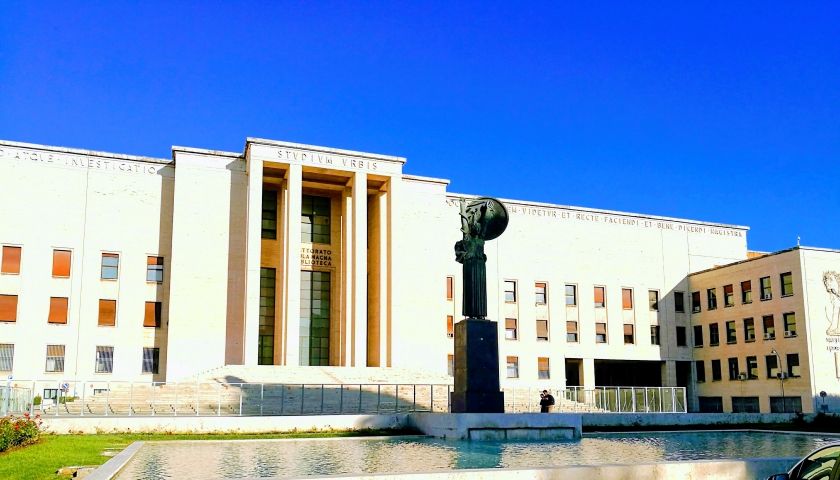
The Sapienza University of Rome or University City, is home to 20 different museums open to the public. Ranging from anthropology to art and science, this impressive collection of museums can be found within University City. This excellent grouping of museums is sure to please any number of visitors with varied interests.
154. Valdese Church (Italian: Chiesa Valdese)
Located at the Piazza Cavour, the Valdese Church is certainly strikingly distinct architecturally compared to Rome's other cathedrals, basilicas, and churches. The church was built in the early part of the 20th century and features a Byzantine and German Romanesque style with a clean white facade and twin bell towers.
155. Vatican City (Italian: Città del Vaticano) 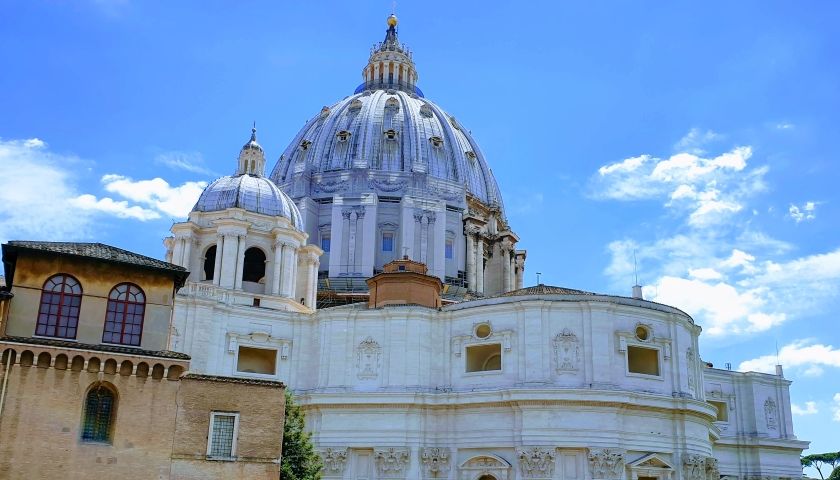
This historic and significant cultural site is actually a separate City State of the Holy See. Vatican City is the seat of the Holy Roman Catholic Church, home to St. Peter's Basilica, St. Peter's Square, the Sistine Chapel, the pope's residence, and many of the prominent events within the Catholic Church. The city itself is comprised of about 121 acres which makes it the world's smallest independent state. Vatican City was officially established as a city state by the Lateran Treaty in 1929 in an agreement signed between the Prime Minister Benito Mussolini for Italy and by Cardinal Secretary of State Pietro Gasparri for the Holy See. This historically significant site is immensely popular for tourists who flock year from around the globe. The walled-in territory is located west of the Tiber River from Rome's city center and north of the Trastevere district.
156. Vatican Corridor (Italian: Passetto di Borgo)
The Vatican Corridor was constructed in the 13th century to connect the Vatican with Castel Sant Angelo. Its name stems from its location in the Borgo district of Rome. The corridor was intended to be used in case of emergencies as an escape route for the pope and was used for just that reason by Pope Clemente VII during the Sack of Rome in 1527. The passageway sits atop a wall and stretches for about 800 meters. The wall and the corridor have been restored a number of times over the years to keep the historic path preserved.
157. Vatican Museums (Italian: Musei Vaticani)
A trip to Rome would not be complete without a visit to the Vatican Museums. The Vatican Museums are a series of galleries, exhibit halls, and other display places, housing some of the finest art treasures in the world. Actually, it is around 40 separate display areas presenting works from ancient Egypt and Rome, relics of the Etruscan civilization, and most famously, Michelangelo's Sistine Chapel. Plan to spend a day (or more!) delighting in the rich artistic history of humanity.
158. Vatican Obelisk (Italian: Obelisco di Piazza San Pietro)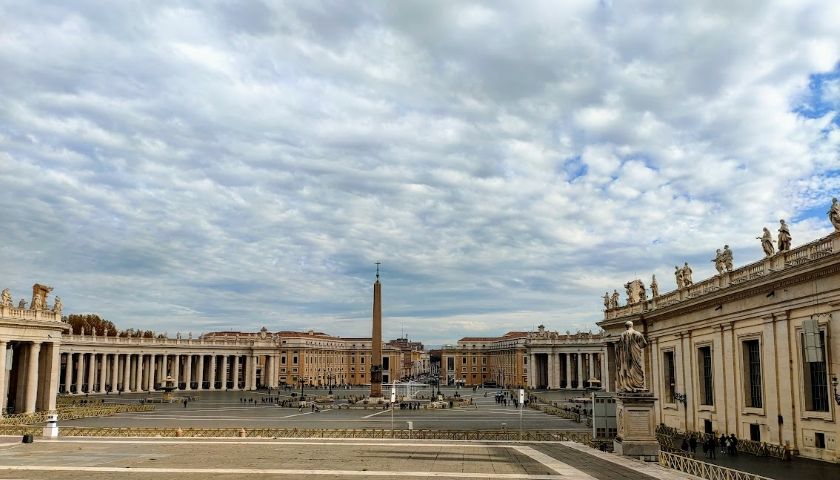
Positioned at the center of St. Peter's Square in the Vatican and in front of St. Peter's Basilica is an ancient Egyptian obelisk. Measuring over 83 feet in height, the Vatican Obelisk was originally brought from Egypt to Rome in the first century but was not moved to St. Peter's Square until 1586 by Pope Sixtus V. The method of moving and erecting the column goes to the credit of the engineer and architect Domenico Fontana. Made from red granite, the imposing structure is supported by a base decorated with bronze lions. It is perhaps most notable as the only obelisk of its kind to have survived and not crumbled since the ancient Roman era. Prior to the cross that adorns the top of the obelisk, there was a bronze globe, which legend states contained the ashes of Julius Caesar. Today, the obelisk remains a focal point for the center of St. Peter's Square and also acts as a sundial.
159. Via Condotti 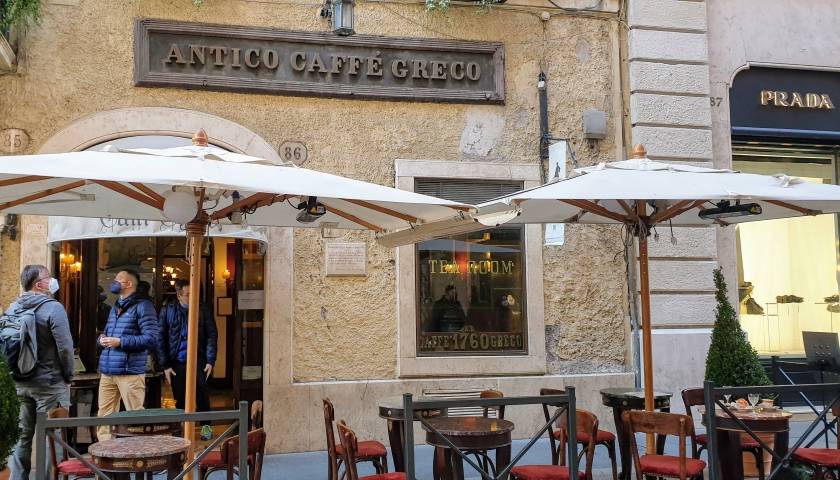
Home to some of Rome's finest shops, Via Condotti runs for about four blocks stemming from the Spanish Steps. The elegant street features Rome's most prestigious fashion stores including such well-known names as Bulgari and Valentino as well as the largely popular Caffé Greco. The street is wildly popular with fashionistas and tourists alike due to its proximity to the major tourist attraction of the Spanish Steps. Historically the street was used in ancient Roman times to allow people to access Pincio Hill.
160. Via dei Banchi Nuovi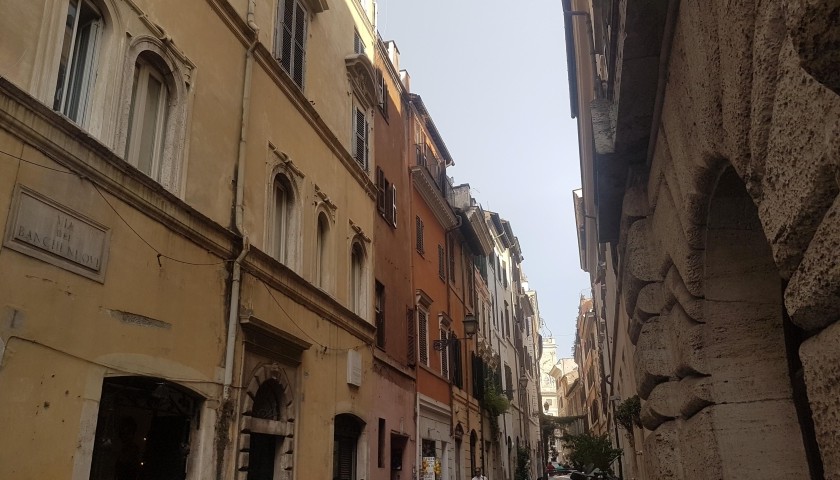
This small stretch of road was created in the 16th century by Pope Sixtus IV. Via dei Banchi Nuovi was named for the numerous bankers that lived in the area and was home to many prestigious banking facilities. Considered the newer of the banking avenues, the street was named after the nearby Via dei Banchi Vecchi, which was where the merchants and bankers previously assembled in the previous century.
161. Via dei Banchi Vecchi
Stretching for several blocks and paralleling the Tiber River, Via dei Banchi Vecchi is a beautiful street in central Rome. The road was named after the many banks and bankers who lived in this area and primarily because of the mint was once located here. The mint was since moved to another street, which became the Via dei Banchi Nuovi. Significant attractions along Via dei Banchi Vecchi include the church of Santa Lucia del Gonfalone and Palazzo Crivelli.
162. Via dei Coronari
Stretching from the northern tip of Piazza Navona west to Via di Panico, Via dei Coronari runs parallel to the Tiber River. The lovely street is flanked by buildings showcasing a variety of architectural styles including the Middle Ages, the Renaissance, and the Baroque periods. The road is named after the many coronari, which in Italian refers to those who sell rosaries and sacred objects to the pilgrims who visited Rome. Today, the sophisticated street is best known for its abundance of antique shops.
163. Via dei Fori Imperiali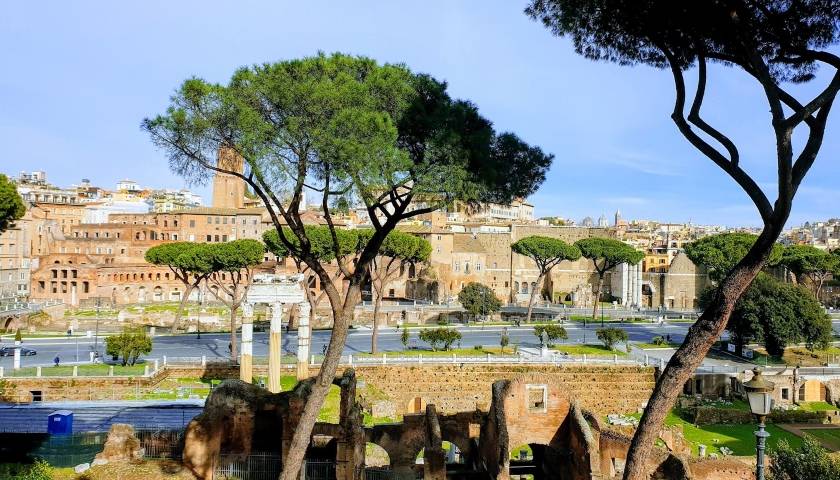
Via dei Fori Imperiali is a broad boulevard that stretches from the Colosseum northwest to the Piazza Venezia. This street was planned under the rule of Mussolini and constructed between 1931 and 1933. The controversial construction of this road meant that many of Rome's ancient structures were demolished. The leader of the Italy's National Fascist Party planned this road, then called Via dell'Impero, in order to connect the party's headquarters in Piazza Venezia to the center of Ancient Rome. The paving displaced thousands of citizens and destroyed numerous significant structures from churches to homes. Via dei Fori Imperiali cuts directly through the famous Roman Forums including the Forum of Trajan, Forum of Nerva, and Forum of Augustus. The creation of this road literally paved over some of Rome's most significant history, leaving monuments and structures demolished or buried below.
164. Via del Babuino 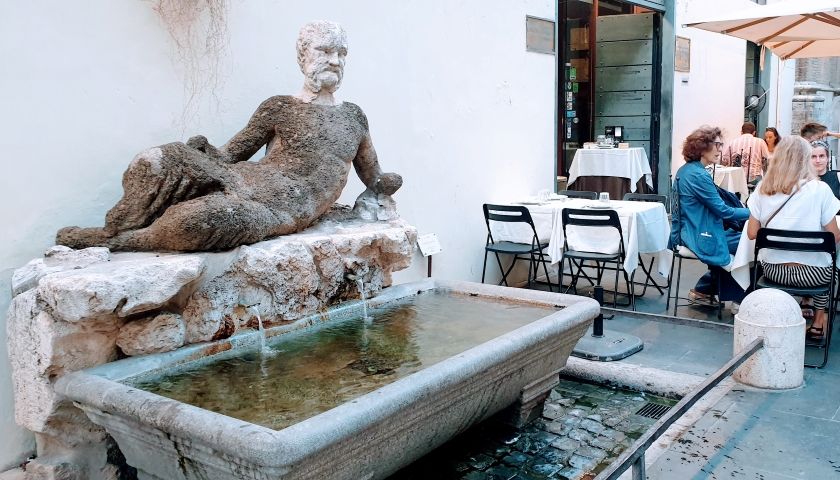
Connecting the Piazza di Spagna (Spanish Steps) and the Piazza del Popolo is the Via del Babuino (Baboon Street). The curiously named boulevard is taken from one of Rome's talking statues, Il Babuino (The Baboon), which depicts a reclining Roman mythological character that is supposed to be half man and half goat, yet the Roman public nicknamed the statue due to its characteristically unsightly appearance. Today the popular street is well-trotted for its plethora of boutiques, art galleries, and fashionable clothing stores.
165. Via del Governo Vecchio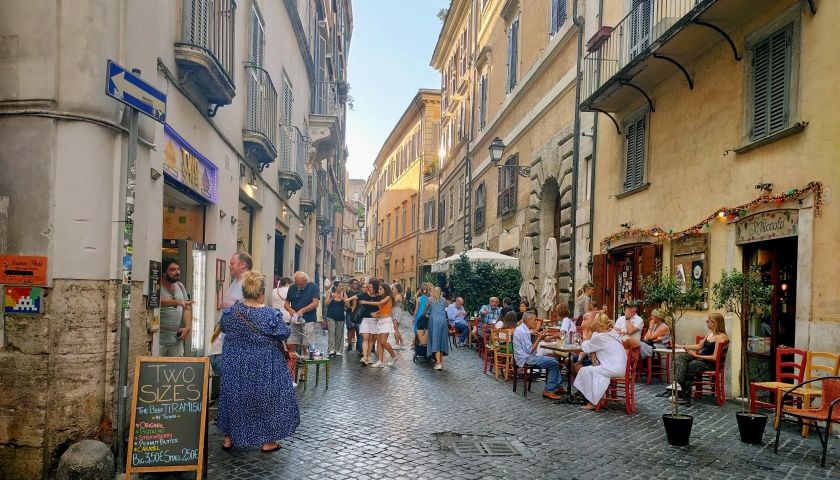
Connecting Navona Piazza to Castel Sant'Angelo, Via del Governo Vecchio is a charming narrow street that is both picturesque and well trotted for its variety of restaurants and wine bars. Its name stems from the fact that governor of Rome once resided along this avenue at No. 39. Today on Via del Governo Vecchio you are spoiled for choice for a mouth-watering break savoring a gelato or have a drink. The buildings retain their Renaissance style and at the Piazza di Pasquino is Rome's first talking statues, Pasquino.
166. Via del Piè di Marmo 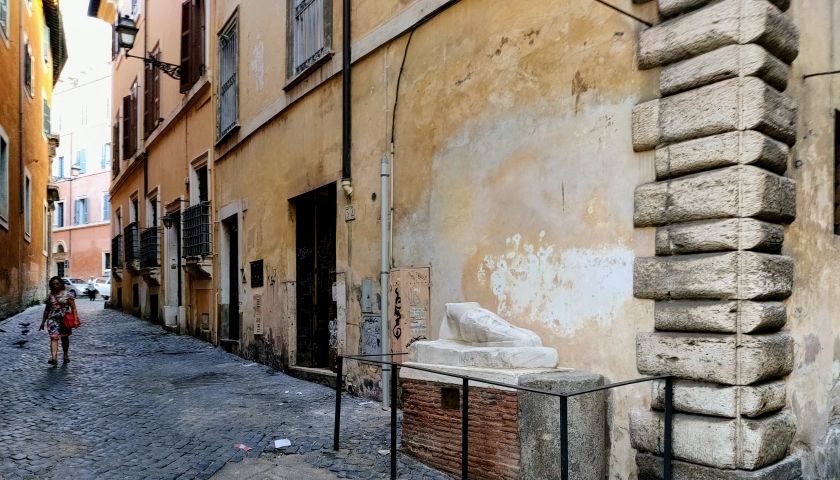
Aptly named after the gargantuan marble foot that is located here, Via del Piè di Marmo (Marble Foot Street) is located in the Campo Marzio neighborhood of Rome near the Santa Maria Sopra Minerva church. The colossal foot was once part of a larger statue of a female deity located at an ancient temple dedicated to the Egyptian gods Isis and Serapis. The foot is all that remains and it has since been moved to this small street.
167. Via del Portico d'Ottavia
This street is named after the historic Portico d'Ottavia (Octavia's Portico), which was built by Augustus for his sister Octavia in the first century BCE. However, Via del Portico d'Ottavia is known for its role serving as a border for the mandated Jewish Ghetto from the 16th through the 19th century. The street is home to many interesting attractions including the house of Lorenzo Manilio, the nearby Great Synagogue of Rome, and the remains of the ancient Portico d'Ottavia.
168. Via della Conciliazione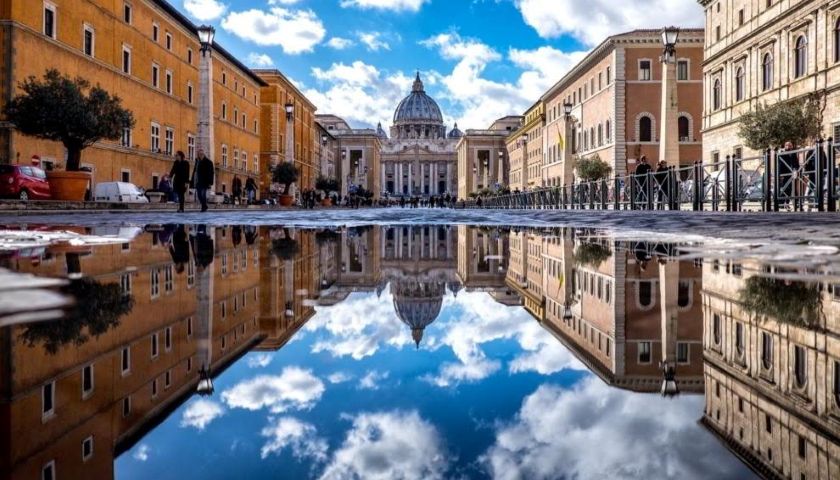
Stretching only about 500 meters in length, Via della Conciliazione (Conciliation Road) is the road that connects Castel Sant'Angelo to St. Peter's Basilica in Vatican City. The picturesque avenue has great appeal as it carves a clear pathway leading to St. Peter's Basilica while creating a strong visual effect. However, its creation brought about great controversy within Rome. The road was constructed between 1936 and 1950 and with its addition, many historic buildings that were located within the path had to be demolished. Today, Via della Conciliazione serves as the principal entrance point to St. Peter's Square and the Vatican and is flanked by buildings including the Palazzo Torlonia, the Palazzo dei Penitenzieri, the church of Santa Maria in Traspontina, and the Palazzo dei Convertendi.
169. Via delle Quattro Fontane
The Via delle Quattro Fontane (Four Fountains Road) is named after the four fountains that flank the intersection at the intersection with Via XX Settembre. The straight avenue was planned by Pope Sixtus V and continues along to Piazza Barberini as the Via Sistina. The namesake fountains represent the meeting point of the two rivers Arno and Tiber along with the goddess Diana and the god Juno.
170. Via di Ripetta
Stretching from the Piazza del Popolo down to the intersection of Via Tomacelli, Via di Ripetta parallels the bank of the Tiber River. Located within the Campus Martius district of Rome, this avenue was previously known as Via Leonina as it was planned by Pope Leo X in the beginning of the 16th century. The street is one of a few that form a trident at Piazza del Popolo and features a number of significant attractions and shops.
171. Via Giulia
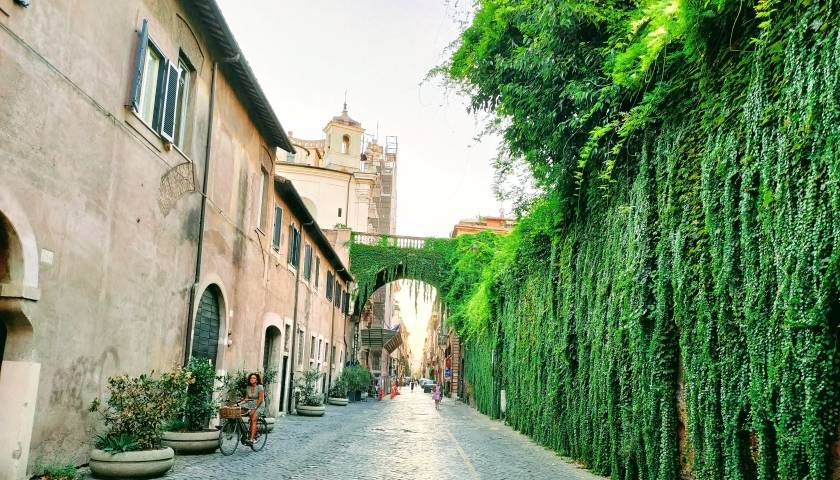
This Renaissance-era street stretches for about one kilometer from the church of San Giovanni dei Fiorentini to the Ponte Sisto, paralleling the Tiber River in an impressive straight line, which is was the first of its kind in Rome. Via Giulia was commissioned by and named after Pope Julius II in the early 16th century as part of an urban renewal project in Rome. The renovation project was intended to connect many of the city's important institutions and to serve as a main thoroughfare to the Vatican. The plan was laid out by Donato Bramante and the archway at the Palazzo Farnese was designed by Michelangelo as part of a larger plan that was never completed. Today, the street is considered one of Rome's most attractive and is home to a number of impressive palaces and churches.
172. Via Margutta
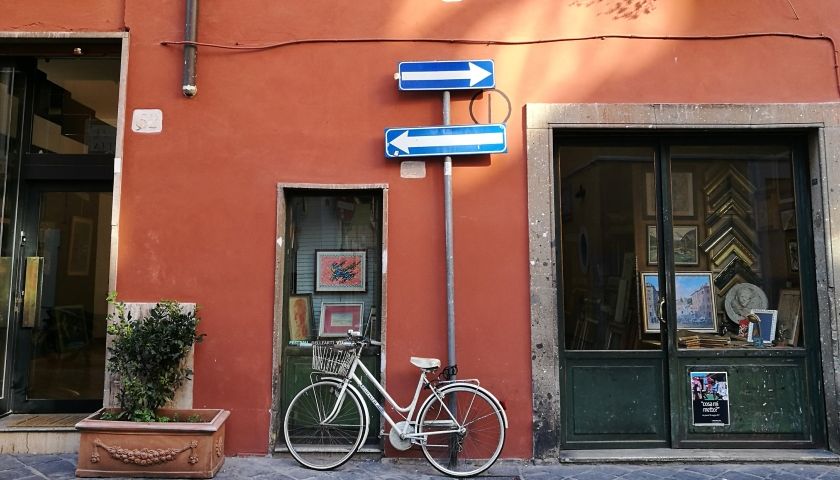
Made famous by the iconic film Roman Holiday starring Audrey Hepburn, Via Margutta is considered one of Rome's most charming streets. Characterized by narrow cobblestone streets, the street is known for its many art galleries, acclaimed restaurants, and overall aesthetic appeal. Via Margutta is located within the city center of Rome, just south of Piazza del Popolo. Its charm includes decorative lanterns, trees and vineyards growing over the buildings and sprawling across the narrow road, and an abundance of artistic residents and merchants.
173. Via Salaria
This ancient road once stretched from the heart of Rome to the Adriatic Coast town of Porto d'Ascoli. Via Salaria (Salt Road) is one of Rome's oldest roads and both its name and historical significance stem from its role in the salt trade. It was originally used by the Sabines who traveled to the mouth of the Tiber River to retrieve salt from the marshes. The road continues to run through a major portion of the city and features a number of ancient ruins along the way and passes through some catacombs.
174. Via Sistina
Via Sistina stretches from the Piazza Barberini to the top of the Spanish Steps. The street was planned by Pope Sixtus V as a larger plan with the intent of connecting the basilica of Santa Croce in Gerusalemme with the Trinità dei Monti. Today, the boulevard is home to some of Rome's most elite hotels, shopping, and the Teatro Sistina opera house.
175. Via Vittorio Veneto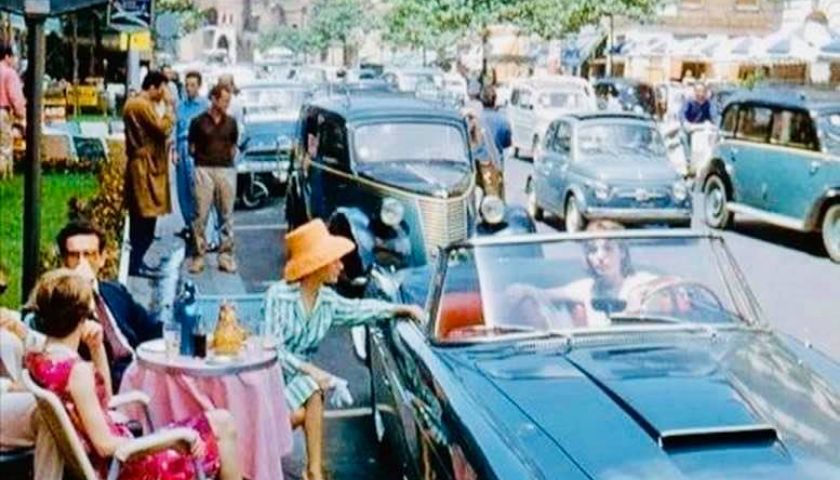
Via Vittorio Veneto has long been a hub for the luxurious side of Rome. The area was once home to many of Rome's wealthiest families and flanked with luxury villas. In more modern times, the street gained celebrity fame when it was featured in the 1960 film La Dolce Vita. Today, the classic street boasts some of Rome's best upscale shopping boutiques and remains an elegant avenue to stroll as it is lined with cafes, hotels, palaces, and shops.
176. Villa Ada Savoia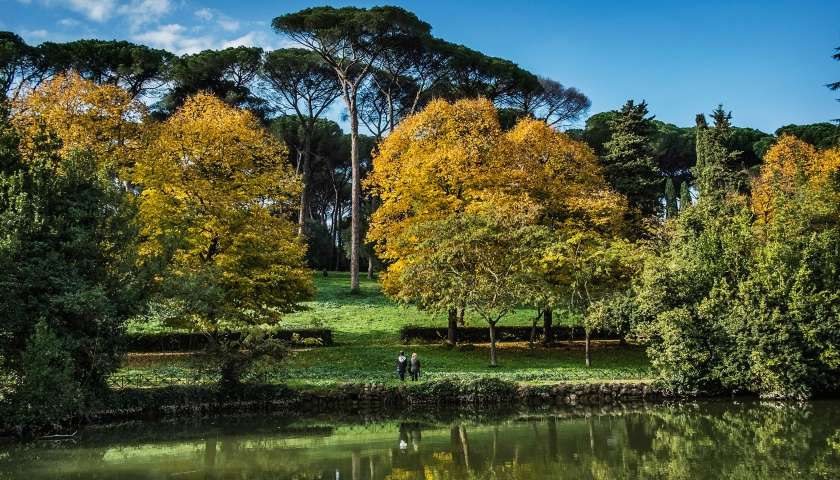
Located northeast of central Rome, Villa Ada Savoia is one of the city's largest parks boasting 450 acres of park land. The property was originally owned by the Italian royal family House of Savoy and later by the Swiss Count Tellfner, who named the property Villa Ada after his wife. Today, the land is partially privately owned by the Egyptian Embassy and partially publicly owned by Rome. It's a popular place for outdoor recreational activities such as cycling, skating, and jogging along the paths as well as canoeing in the lake. The park's highest point is at the ancient archaeological site of Monte Antenne.
177. Villa Celimontana 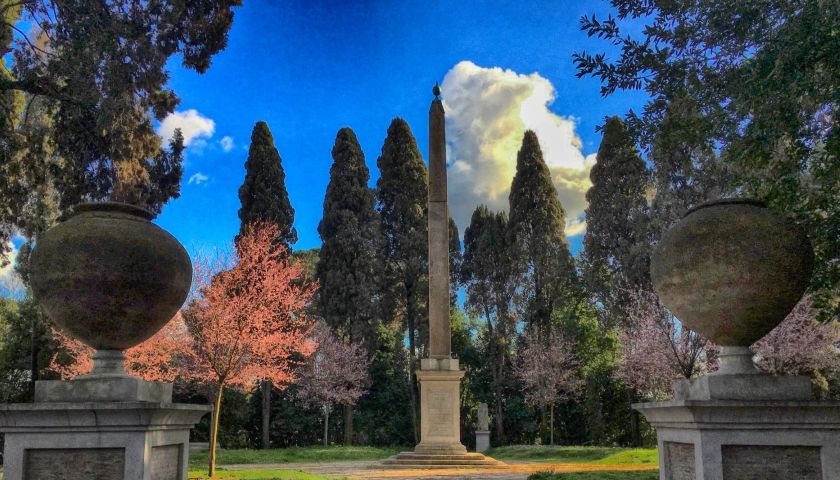
Also known as Villa Mattei, Villa Celimontana is named after one of Rome's seven hills, Celian Hill. The sprawling estate was once used as a vineyard and was later purchased by the Roman noble Mattei family during the 16th century. The family commissioned architects and artists to create the villa to house the family's artistic collections and the surrounding gardens. Nestled between the Celian and Aventine Hill, the property is best known for its well-designed gardens peppered with ancient statues. While many of the family's collection of historic monuments and statues have been placed in other Italian museums, visitors can still enjoy what remains including an ancient Egyptian obelisk. Today the gardens are owned by the city of Rome and are open to the public as a park.
178. Villa d'Este
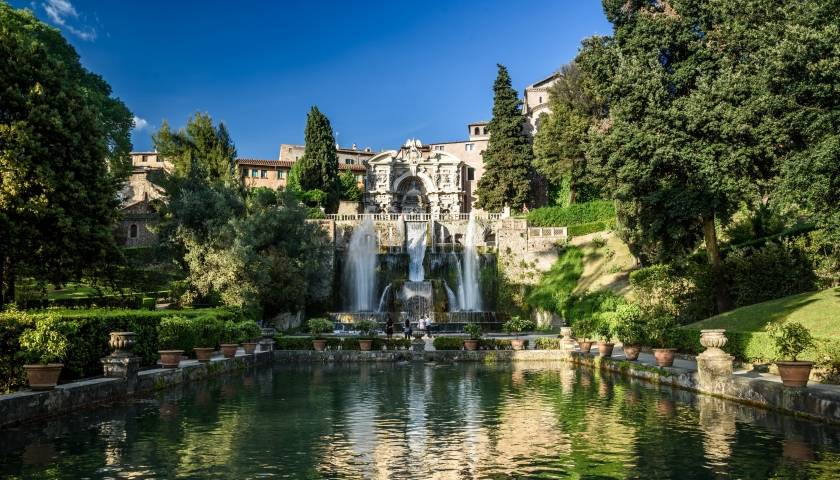
Located in the ancient city of Tivoli about 30 kilometers northeast of Rome is the lovely Villa d'Este. This villa estate is considered a UNESCO World Heritage Site and offers some of the best examples of Renaissance architecture and gardens. The beautiful palace complex was constructed starting in the 1550s commissioned by the newly nominated Governor of Tivoli, Cardinal Ippolito II d'Este. Upon his arrival in Tivoli, he envisioned creating a lavish palace and gardens and began to do so with the design help of Pirro Ligorio. The famous features here include grottoes, fountains, waterfalls, and sculptures throughout the well-planned gardens.
179. Villa Doria Pamphili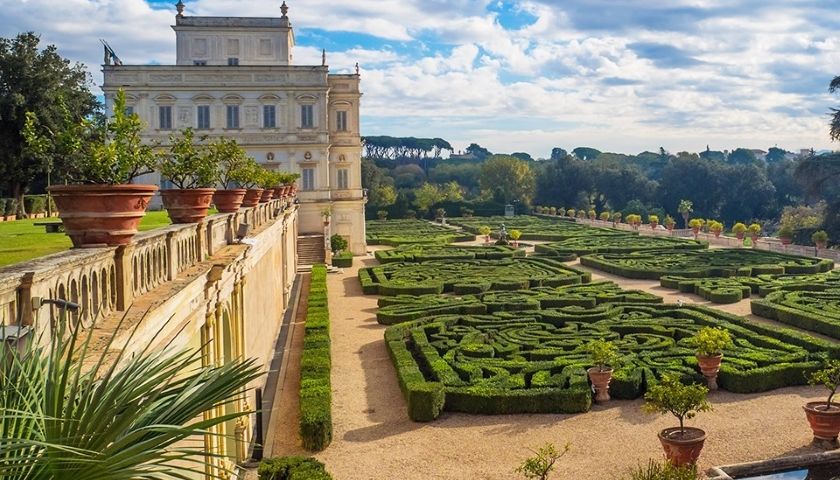
Rome's largest park, Villa Doria Pamphili provides Rome with an abundance of much-needed green space with trees, ponds, and beautifully landscaped gardens. The villa itself dates back to the 17th century when it was owned by the Pamphili family (Pope Innocent X was formally Cardinal Giambattista Pamphili) and was then later inherited by Prince Giovanni Andrea IV Doria, thus its namesake. Over the years and during the villa's construction, much of the surrounding land was purchased making the estate even larger. The villa's designers included sculptor Alessandro Algardi and Giovanni Francesco Grimaldi. After the villa's construction was complete in 1647, the park and gardens were laid out by Camillo Pamphili, the nephew of Pope Innocent X. The intricate gardens featured sloped lands, a secret garden, different levels of gardens including woodlands and grottoes. The gardens saw many additions throughout the 18th century and beyond by different architects and sculptors creating fountains and other stylized gardens. By 1970, the City of Rome purchased the expansive property and it remains one of the city's best places for jogging, bird watching, picnicking, strolling, and generally enjoying the greenery of a public park.
180. Villa Farnesina
This 16th-century villa was constructed for the eccentric banking mogul Agostino Chigi between 1508 and 1511. The Renaissance villa was designed by Baldassarre Peruzzi, a pupil of Bramante, and is located within the Trastevere district of Rome on the banks of the river. Chigi commissioned the work of frescoes throughout the building from such acclaimed Renaissance artists including Raphael, Giulio Romano, Sebastian del Piombo, and Il Sodoma. Notable works here include Raphael's Galatea fresco featuring nymphs and cupids along with the frescoes within the Loggia of Cupid and Psyche. The villa was later owned by the Farnese family, for which the villa is currently named after. Today, the building is owned by the Italian State and houses the Academy of the Lincei and the National Collection of Drawings and Prints. Visitors will be impressed with the restored remaining frescoes by Raphael and other great masters.
181. Villa Gregoriana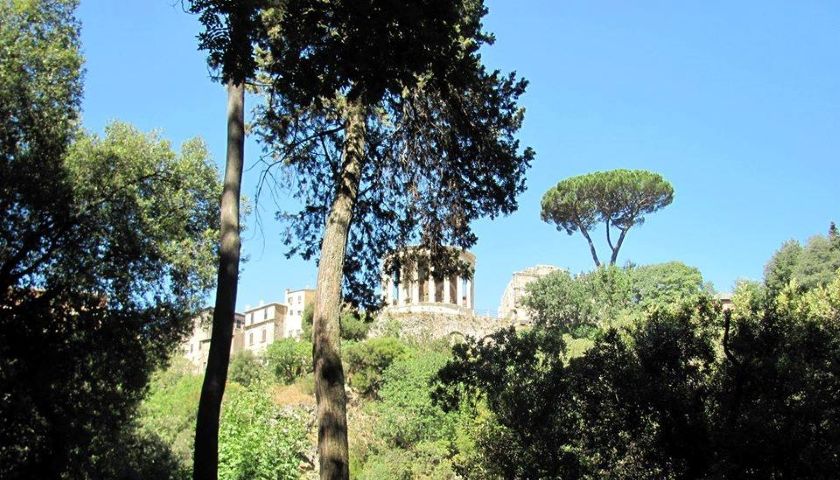
This lush park was built in the nineteenth century by Pope Gregory XVI. The steep walk winding down through the gorge, onto the banks of the Aniene river, features grottos and balconies that open up to spectacular views of a 100-meter waterfall, Tivoli's grandest. Those who do venture down the steep trail, however, be warned: the hike back is fierce, and not for the faint of heart. Impressive views over the gorge are also available from the Ponte Gregoriano.
182. Villa Sciarra

Nestled between the Trastevere and Gianicolo neighborhoods of Rome is the Villa Sciarra. This public park is named after the villa located in the center of the park. The property and villa date back to the 17th century under the ownership of the Berberini family and later the Sciarra family. In the 20th century, an American diplomat named George Washington Wurst owned the property and it was after his death that the property was turned over to the government with the purpose of opening it to the public as a park. Featuring fountains, sculptures, trees, and pathways, Villa Sciarra serves as a peaceful place to enjoy a lovely day in the gardens.
183. Villa Torlonia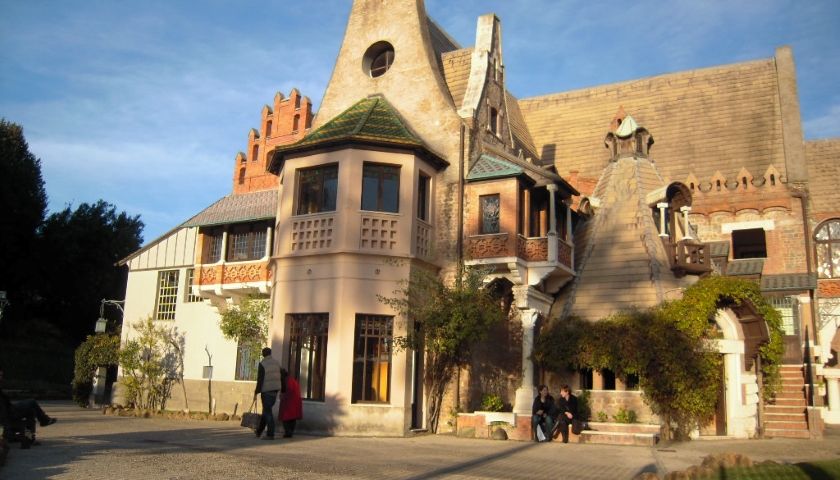
This 19th-century luxurious villa was originally commissioned for the noble Torlonia family with design work done by acclaimed neo-Classic architect Giuseppe Valadier. The villa was more famously known as serving as Benito Mussolini's personal residence during his rule over Italy from 1925 through 1943. The Villa Torlonia was later acquired by the city of Rome and restored over the years. Visitors can enjoy the Torlonia family art collection, surviving pieces of furniture and decor from the home, and other historic relics from this villa's past at the on-site museum.
 Rome & Vatican
Rome & Vatican Venice
Venice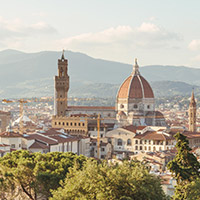 Florence & Tuscany
Florence & Tuscany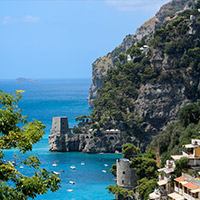 Napoli & Amalfi Coast
Napoli & Amalfi Coast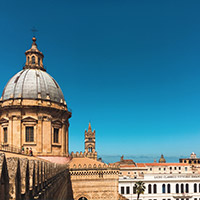 Sicily
Sicily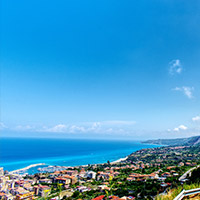 Calabria
Calabria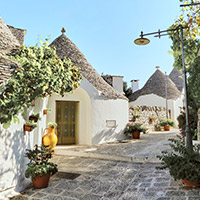 Matera & Puglia
Matera & Puglia